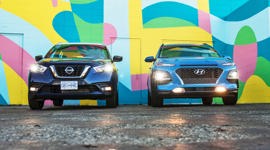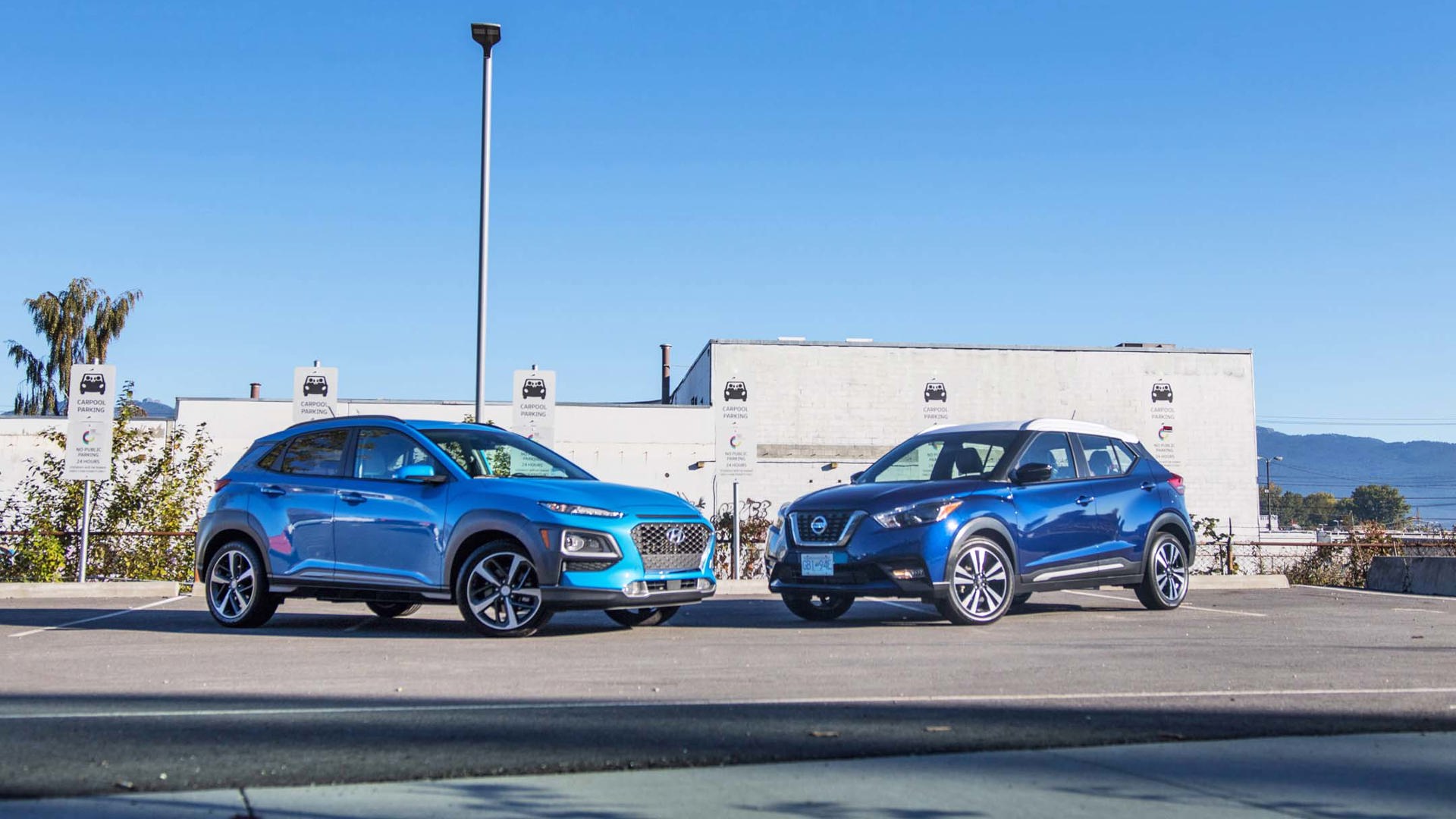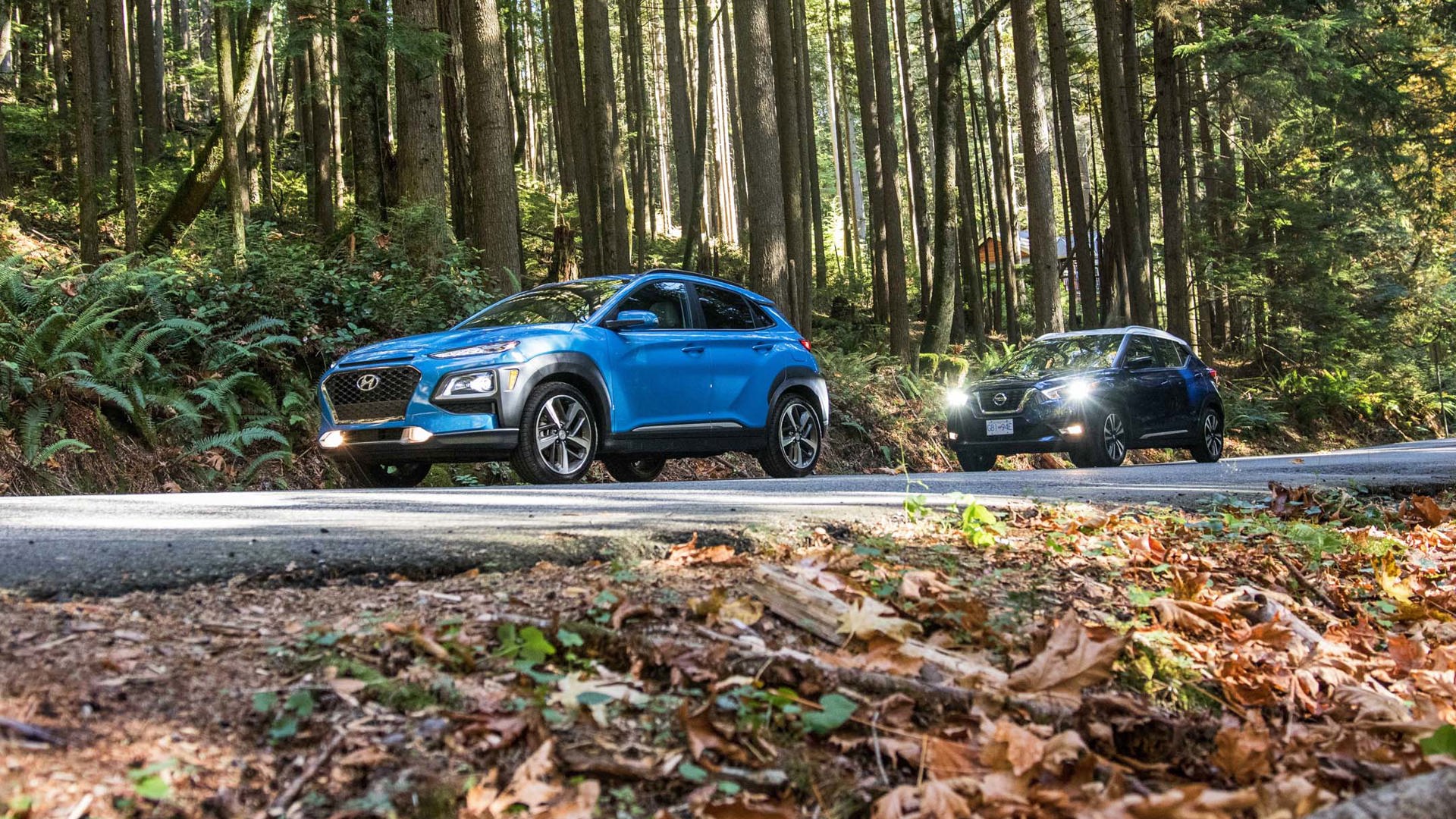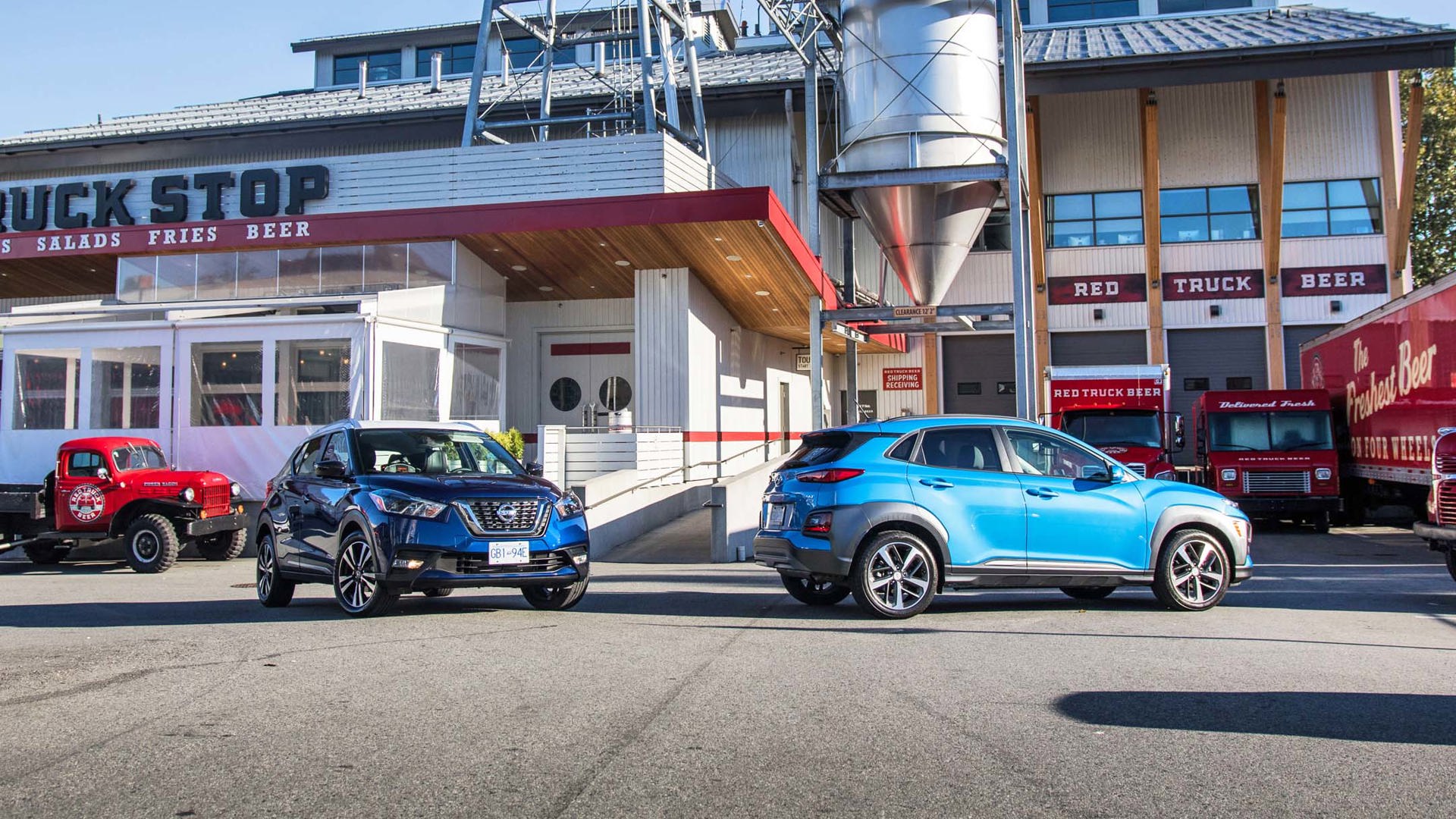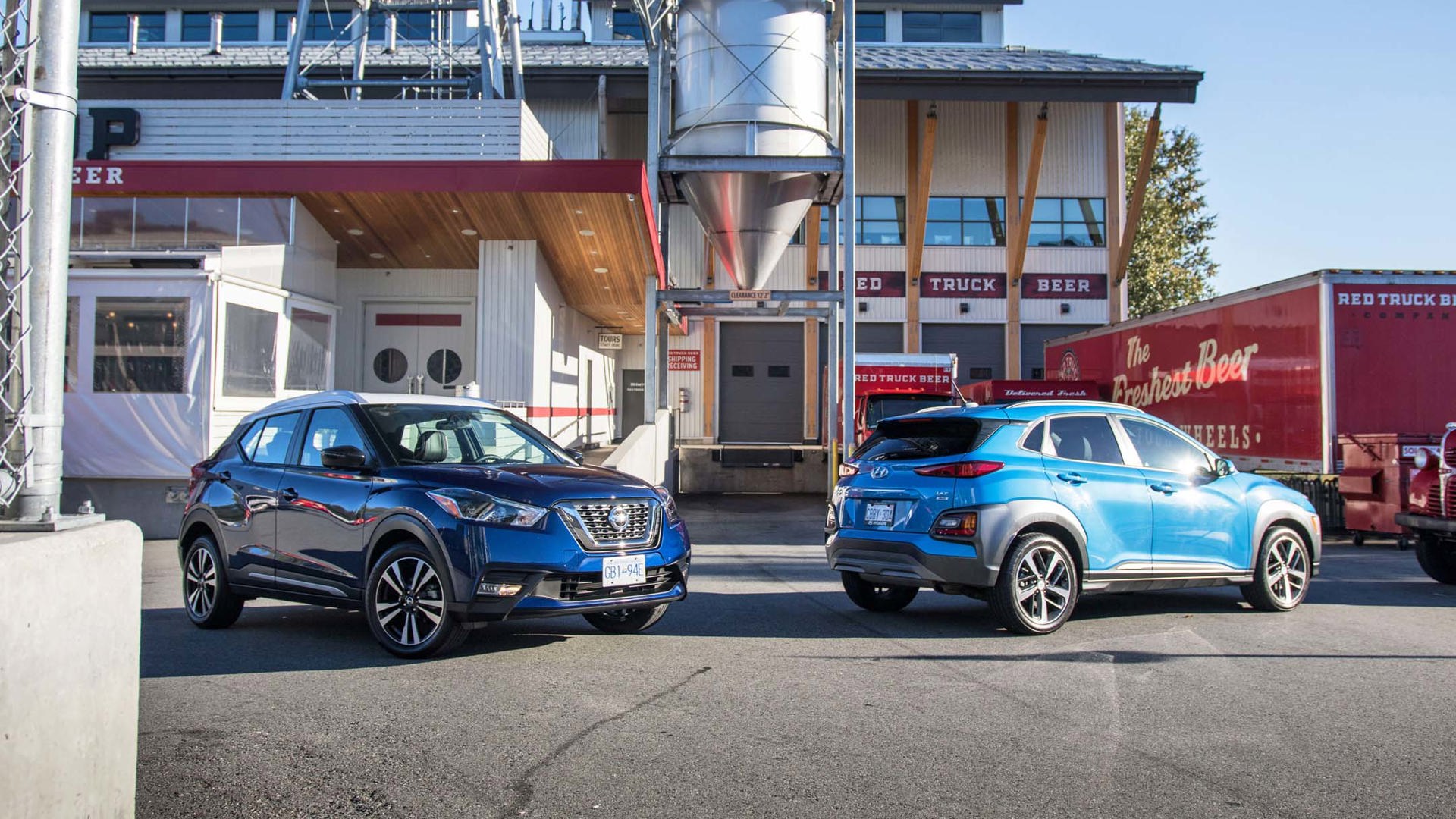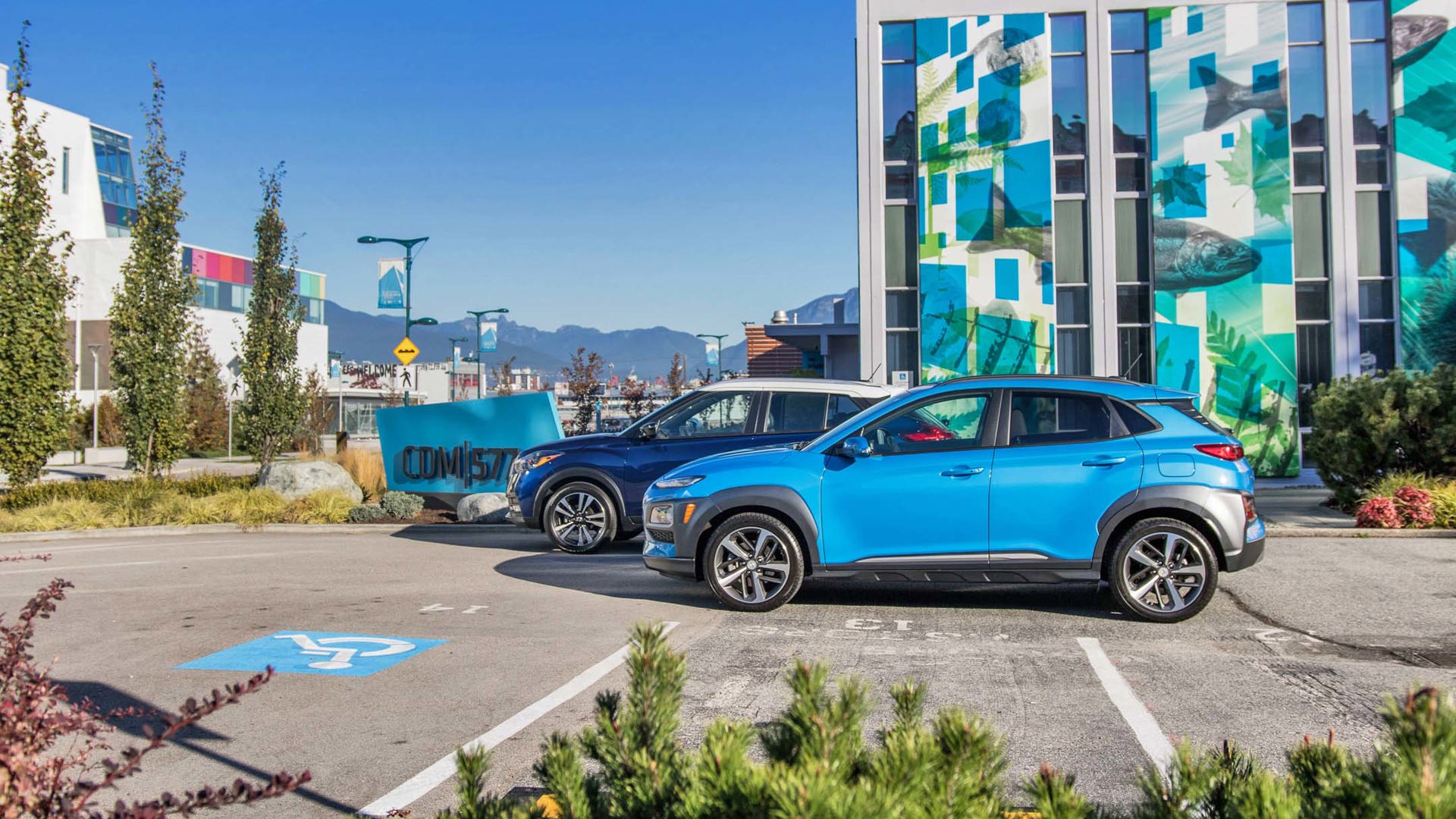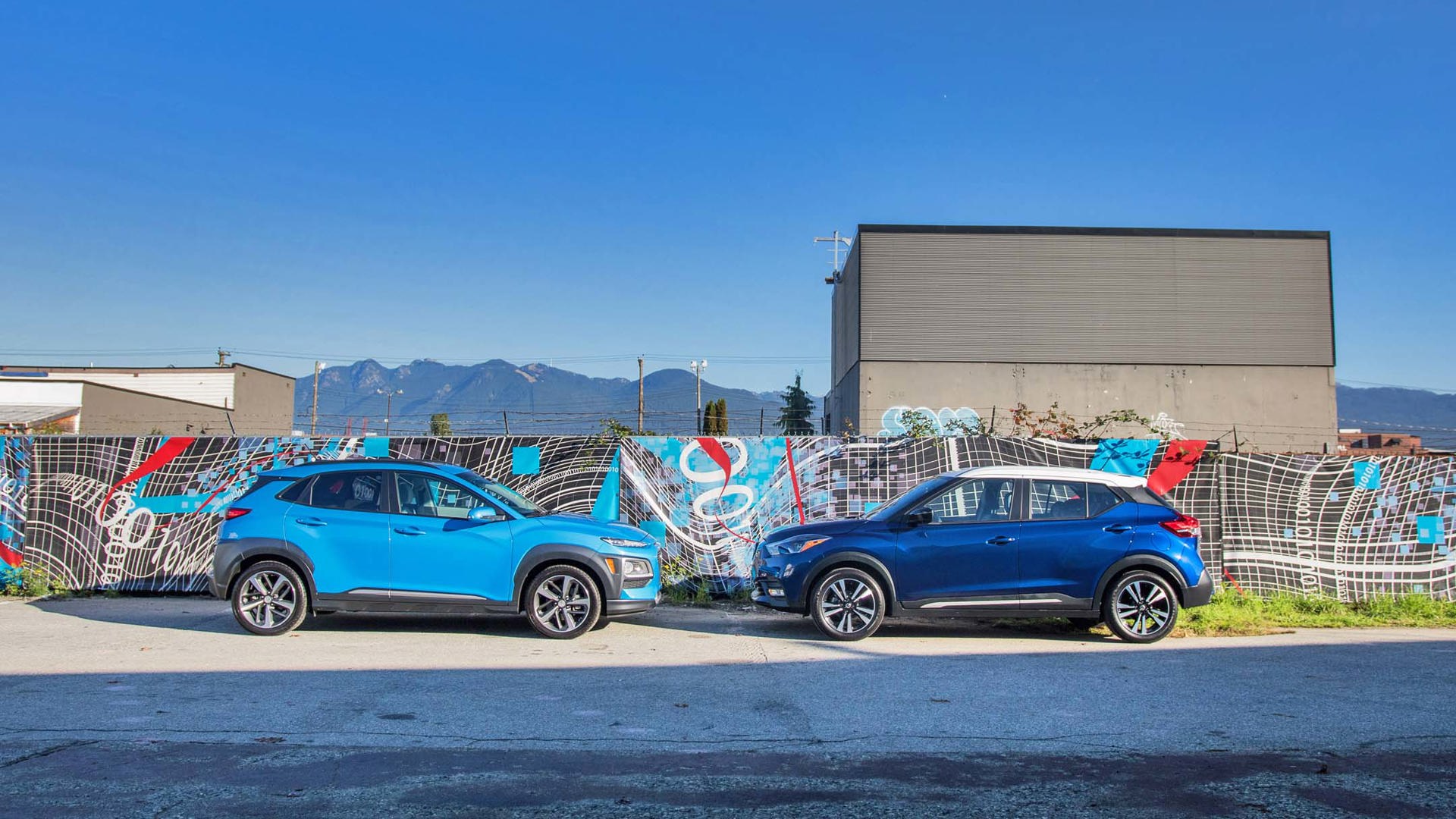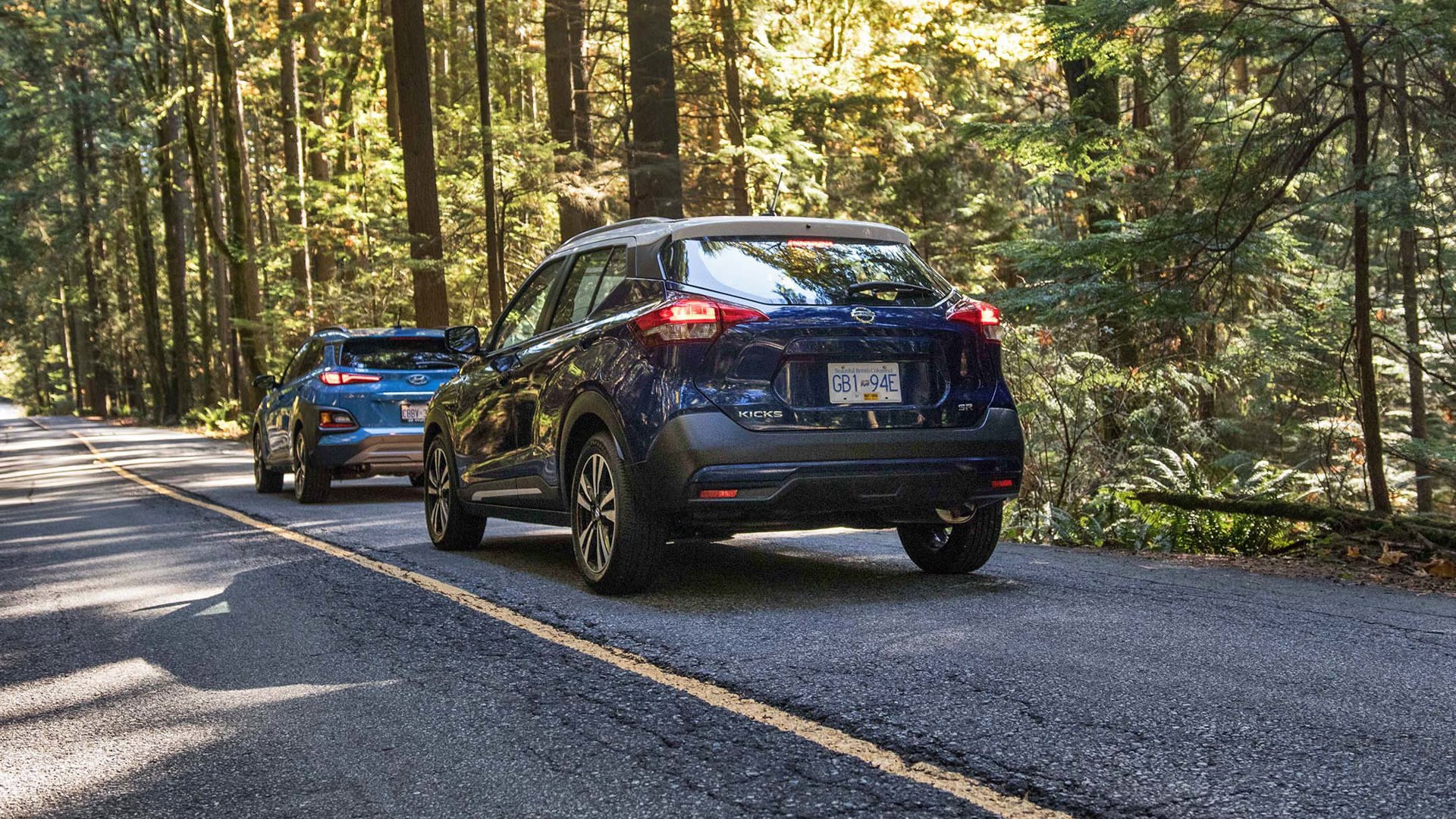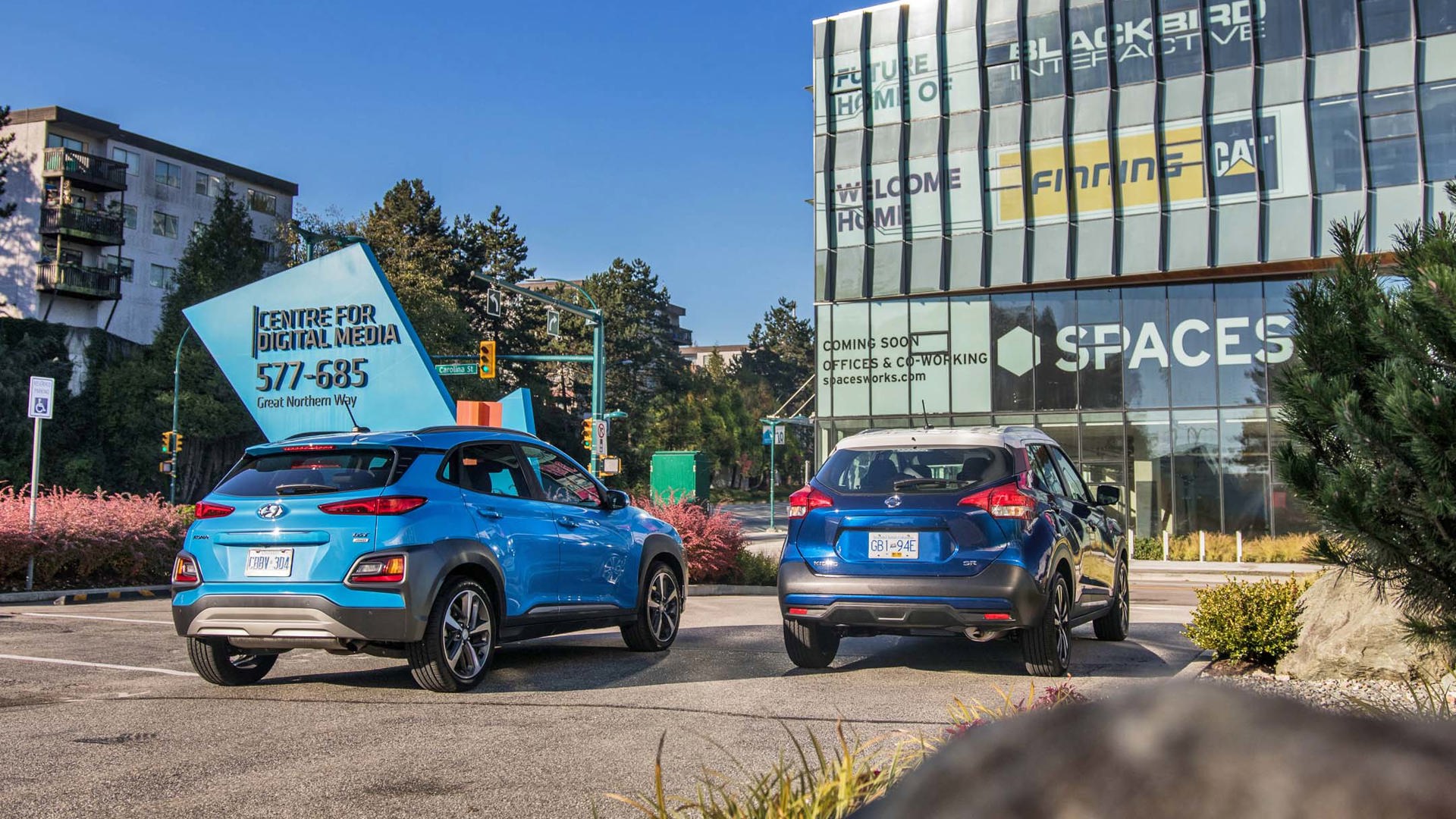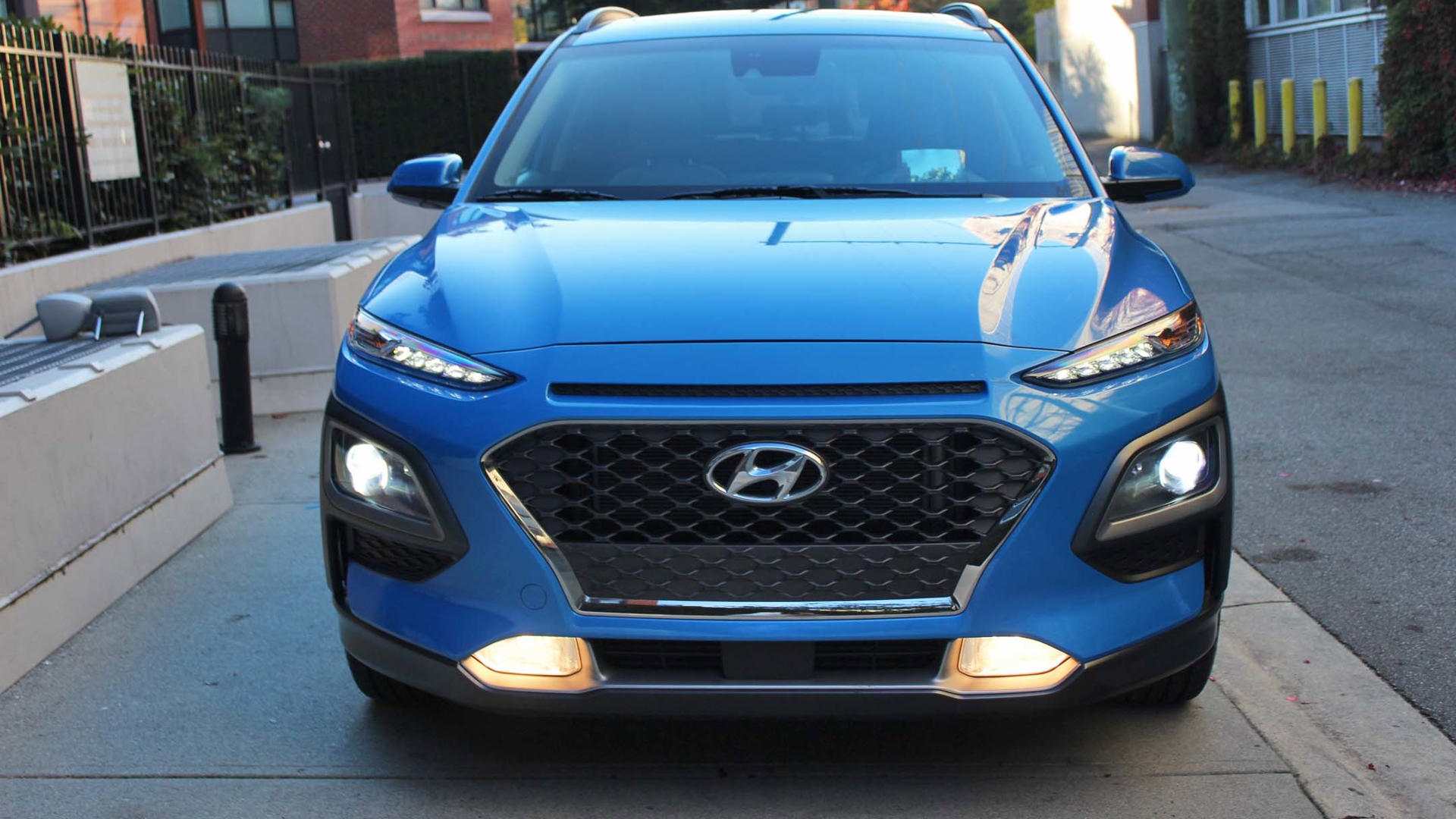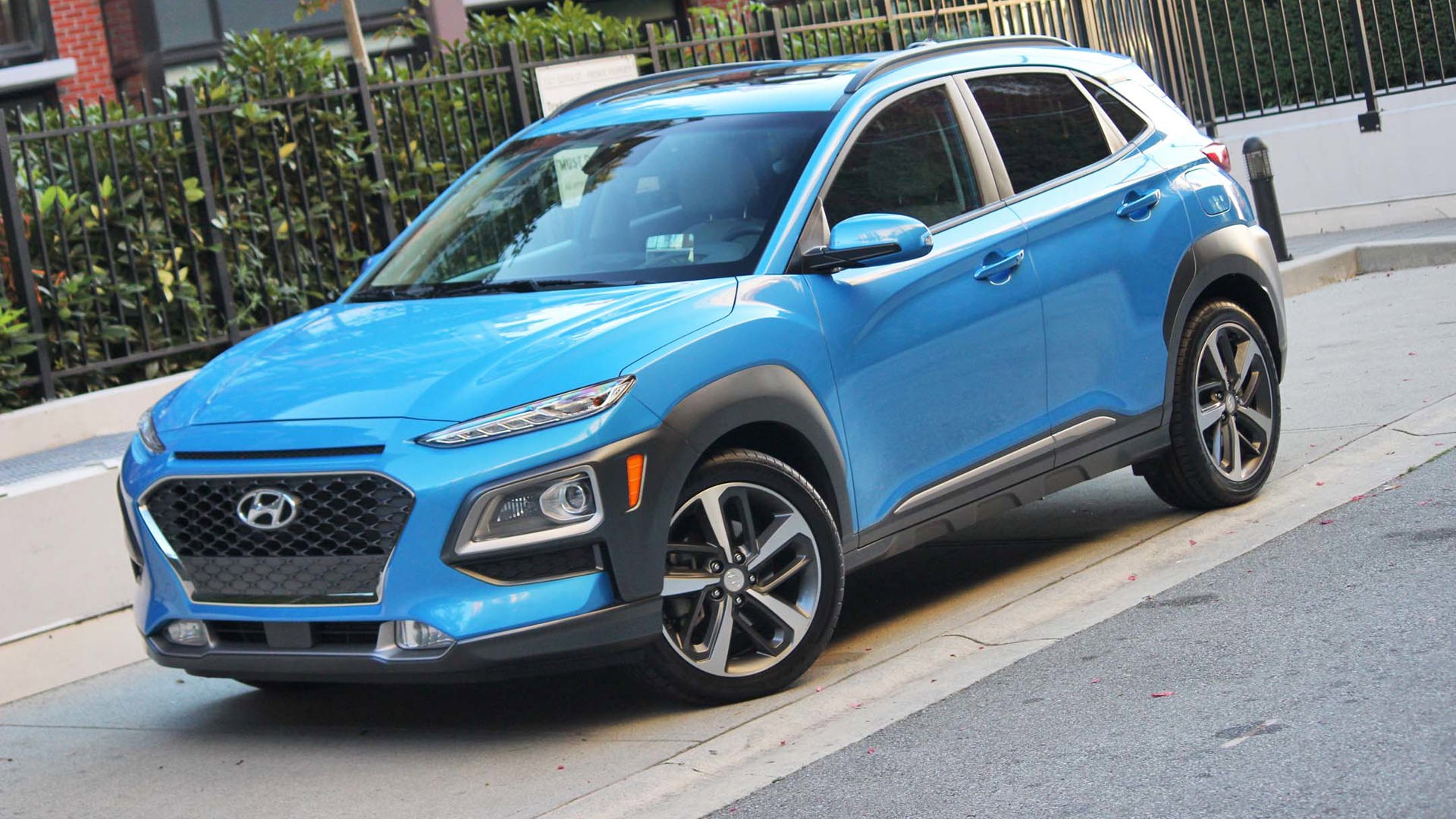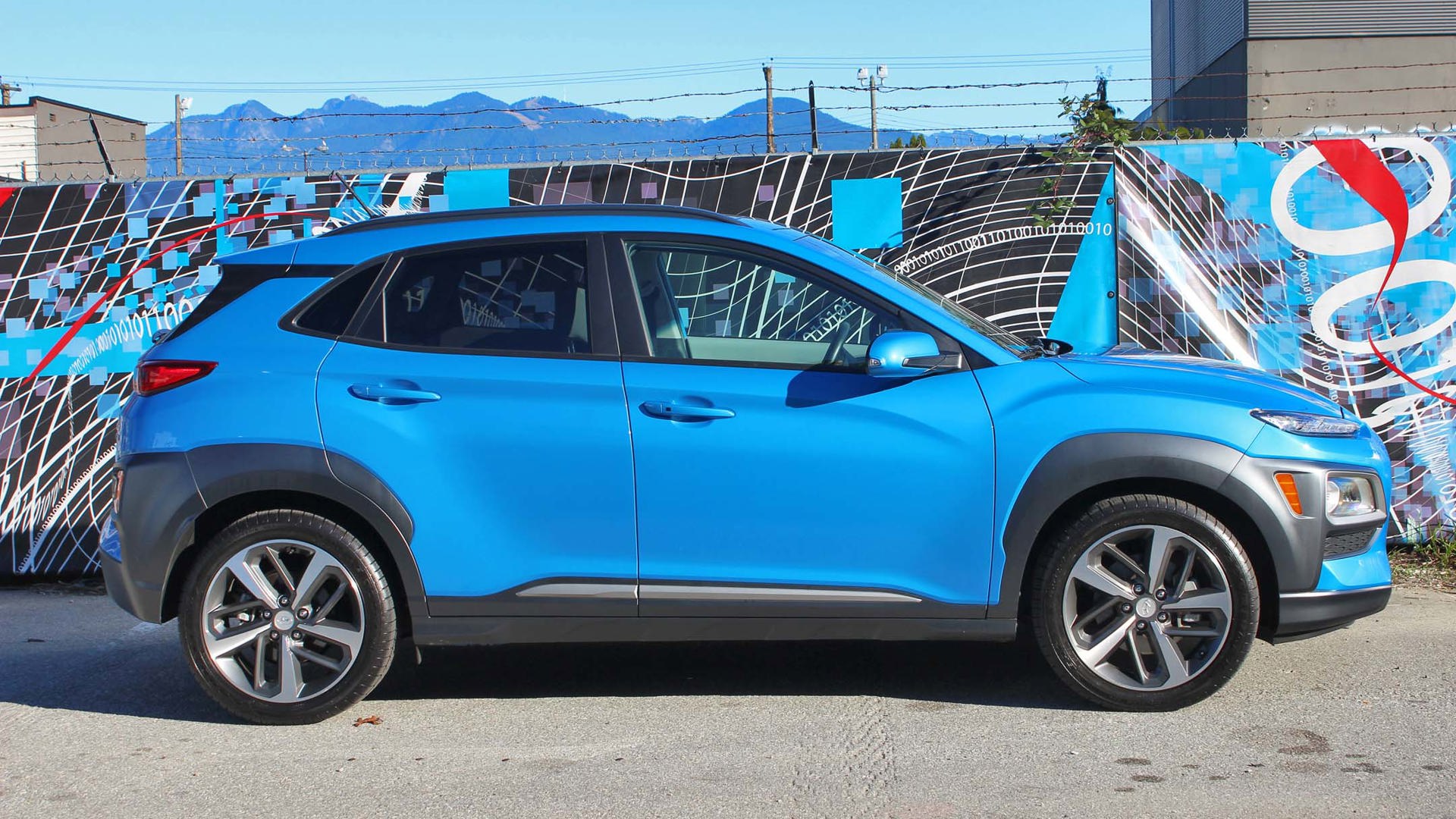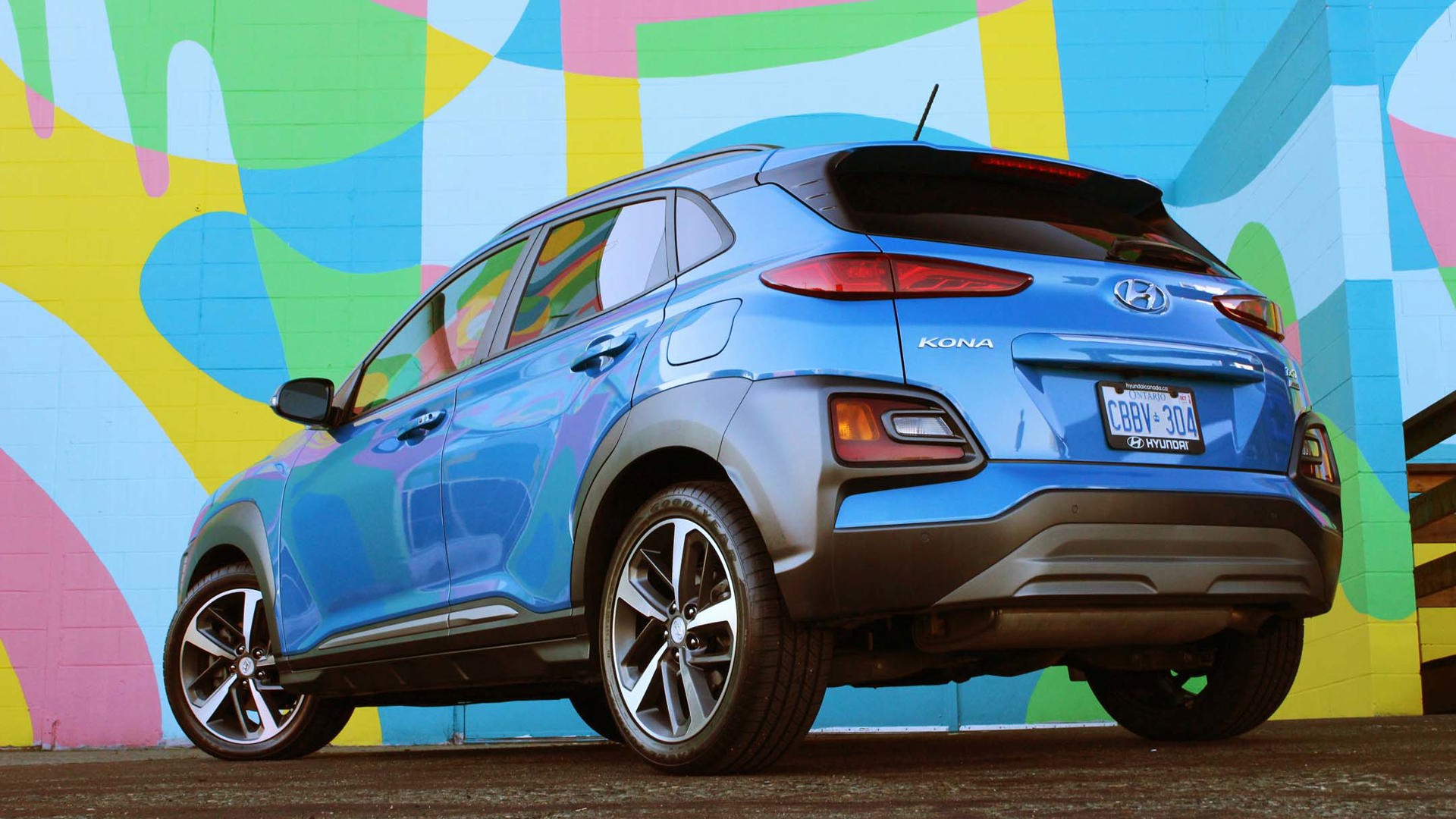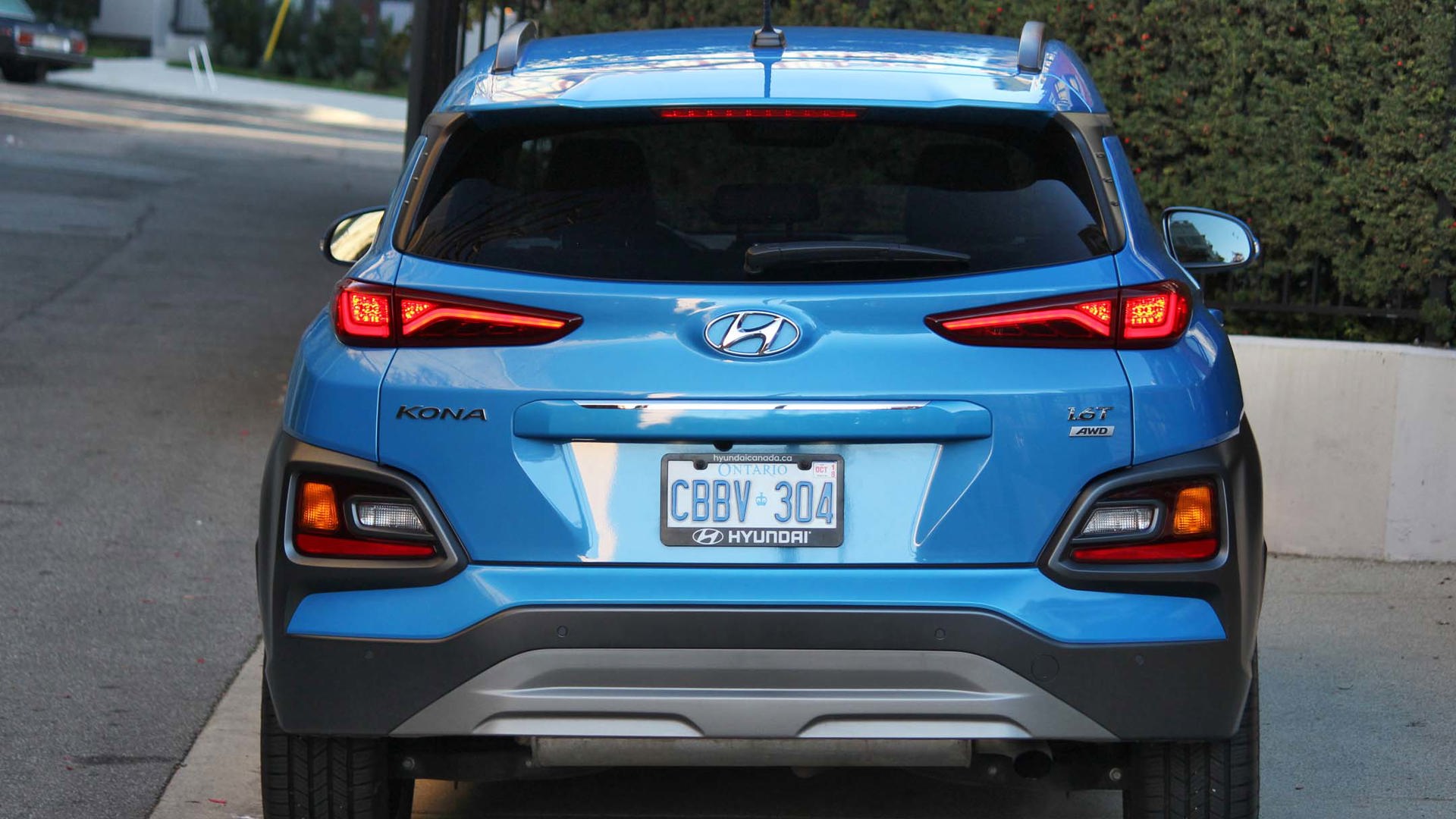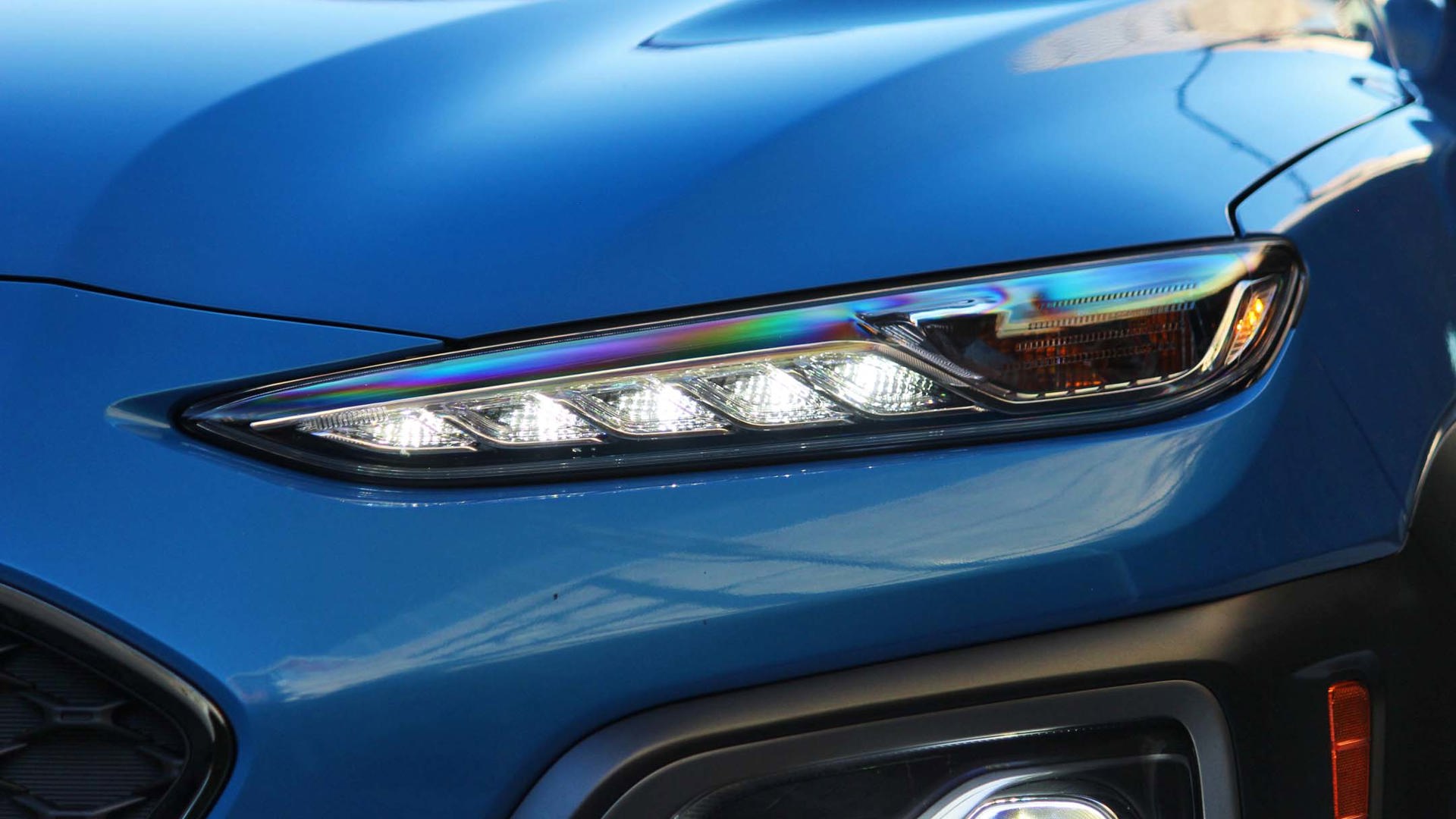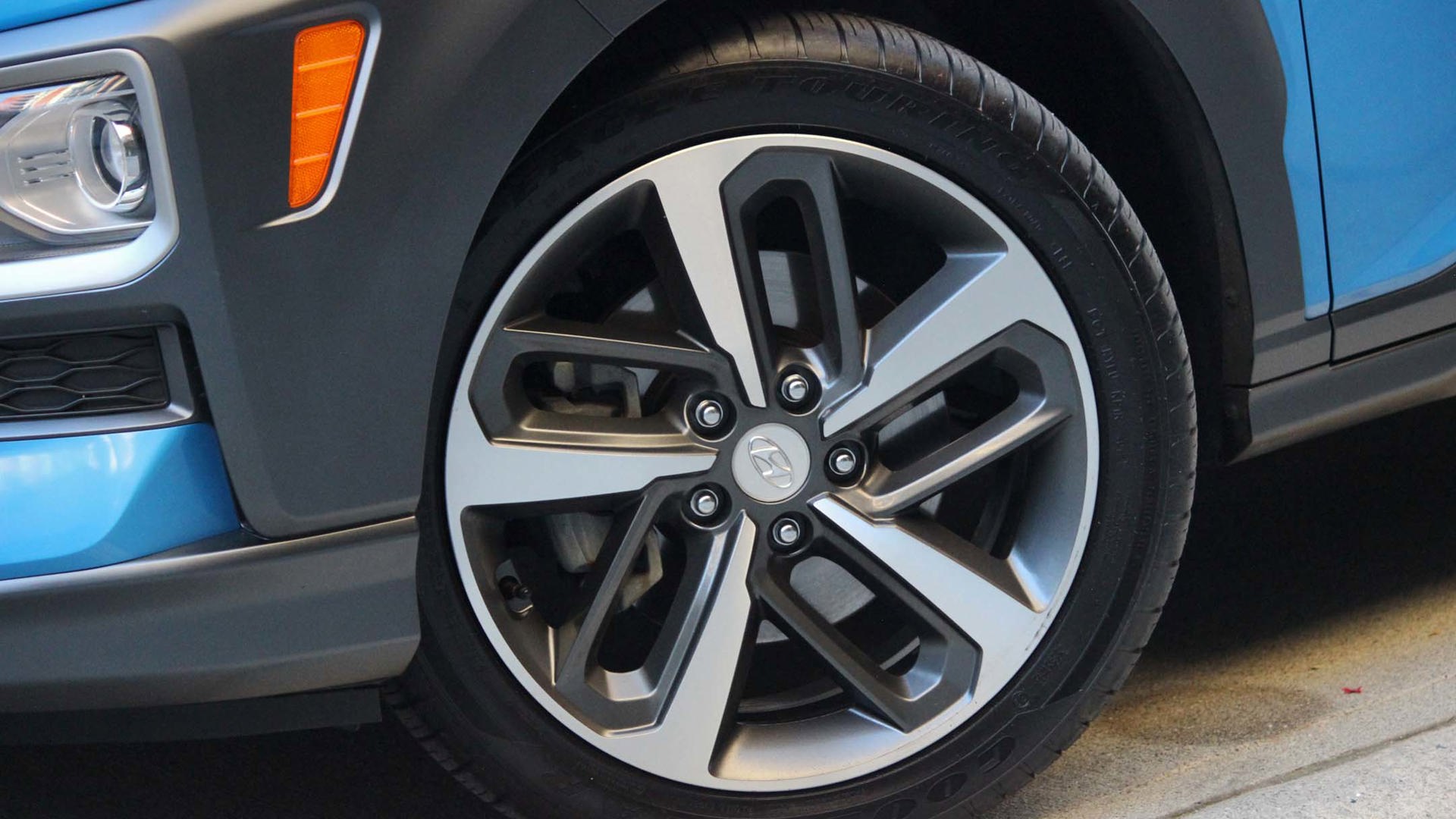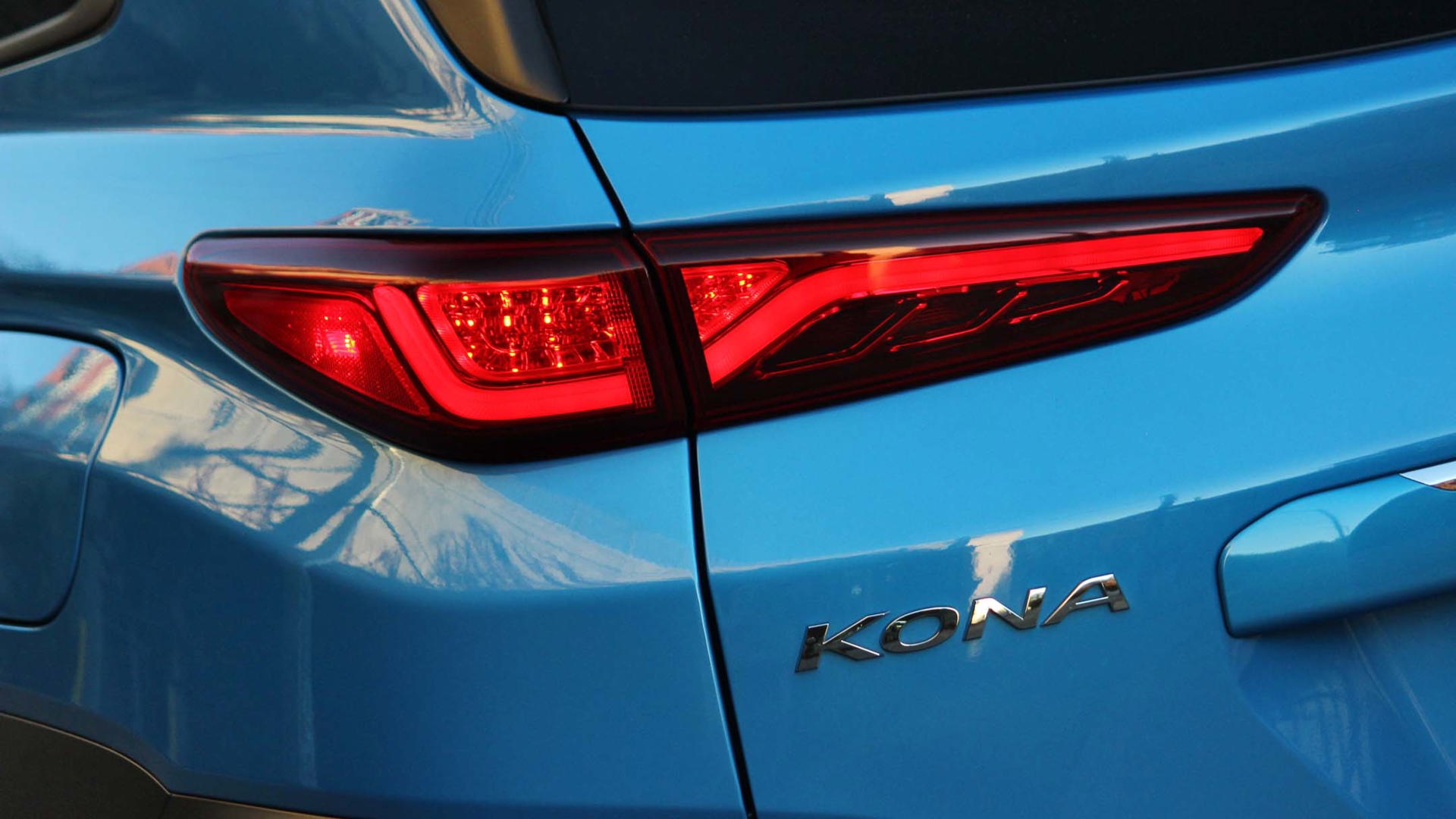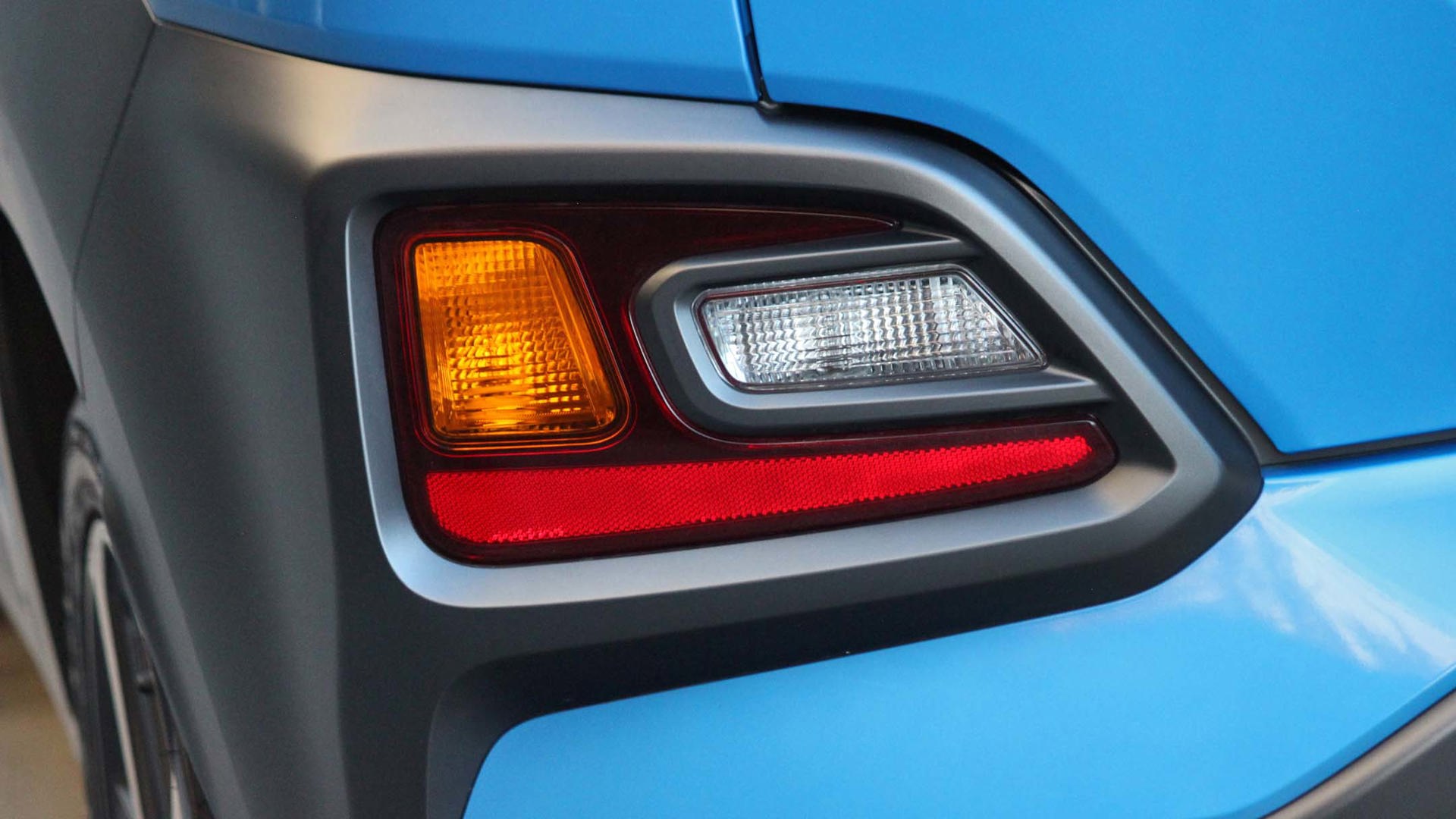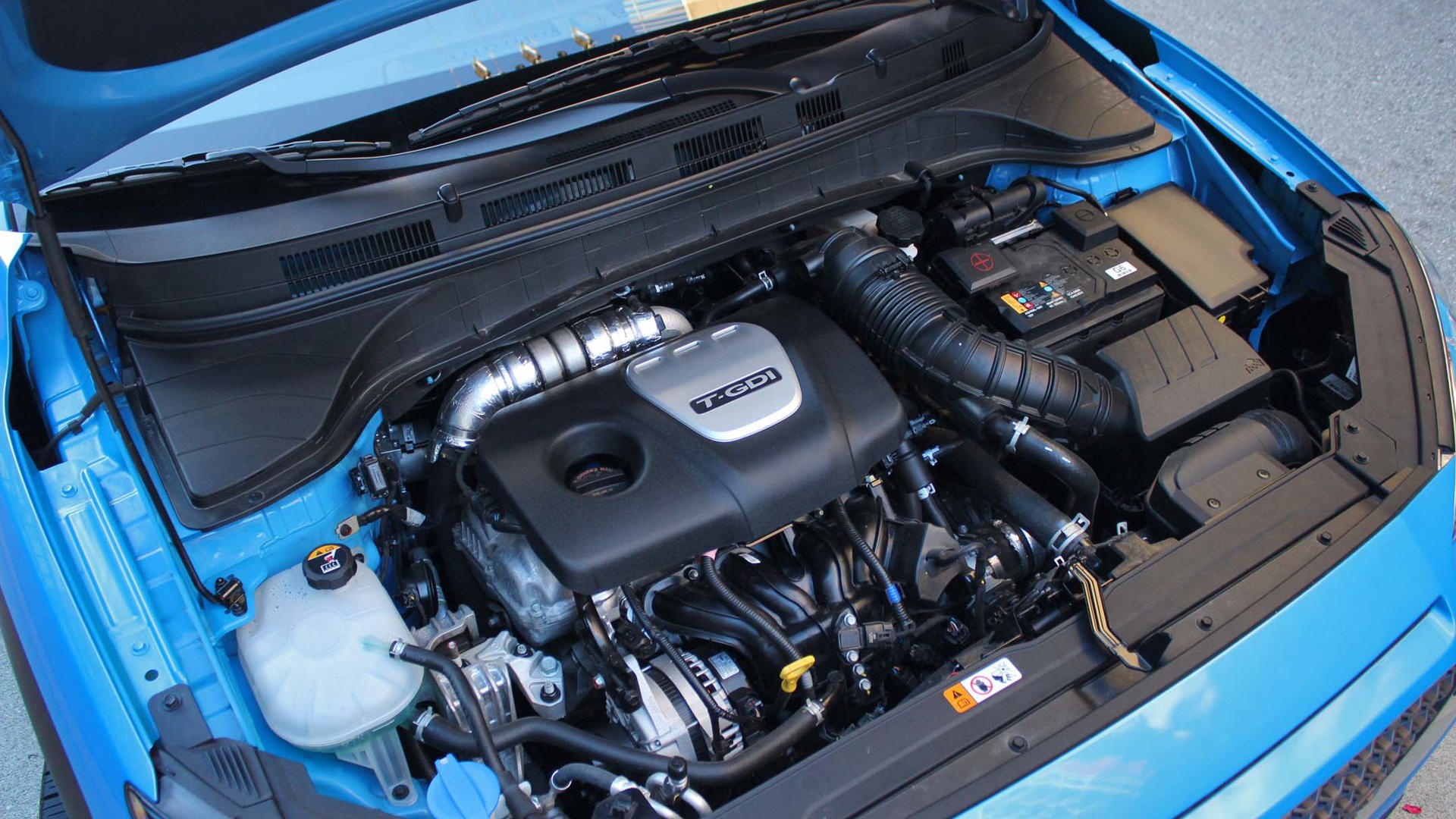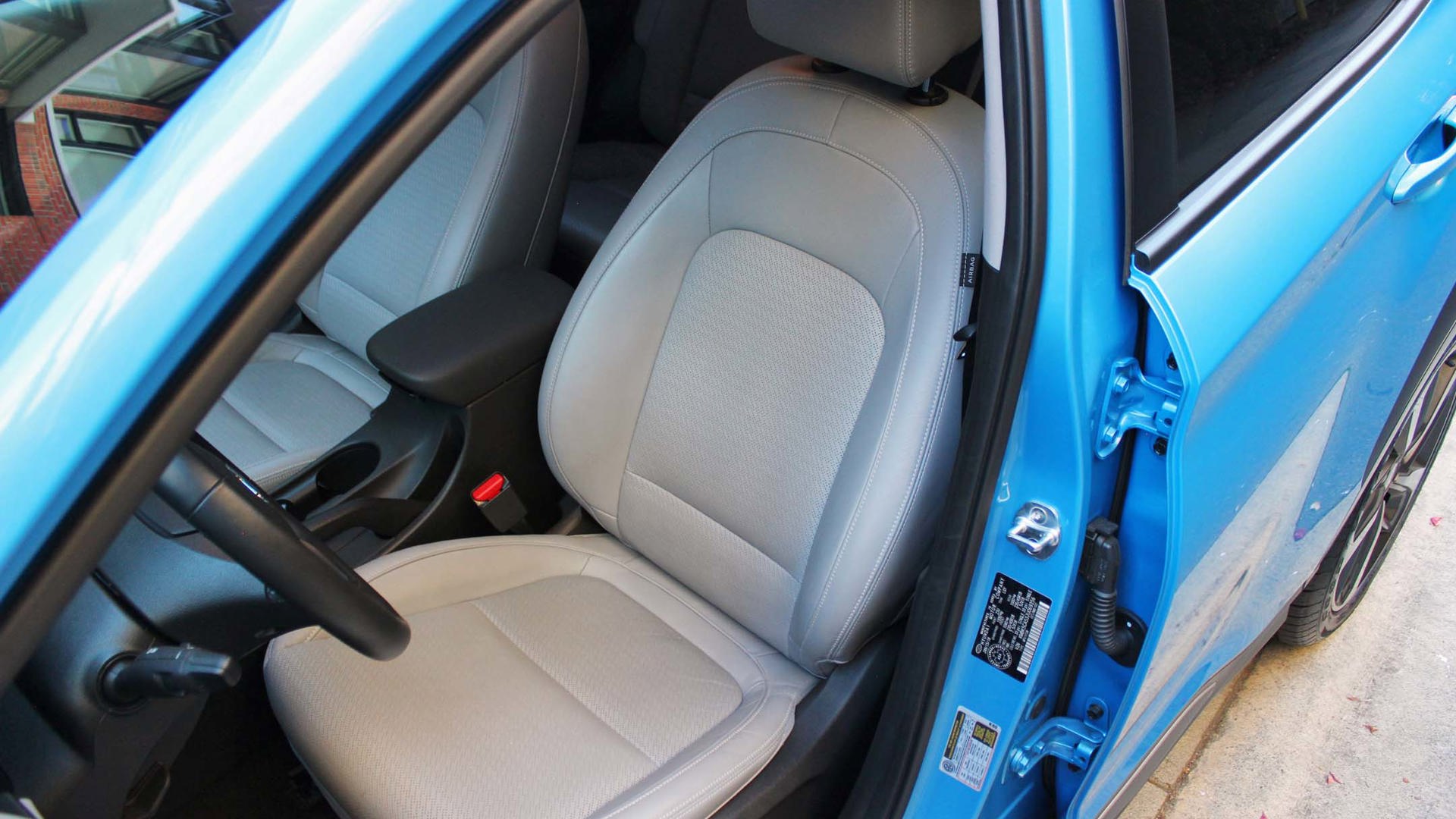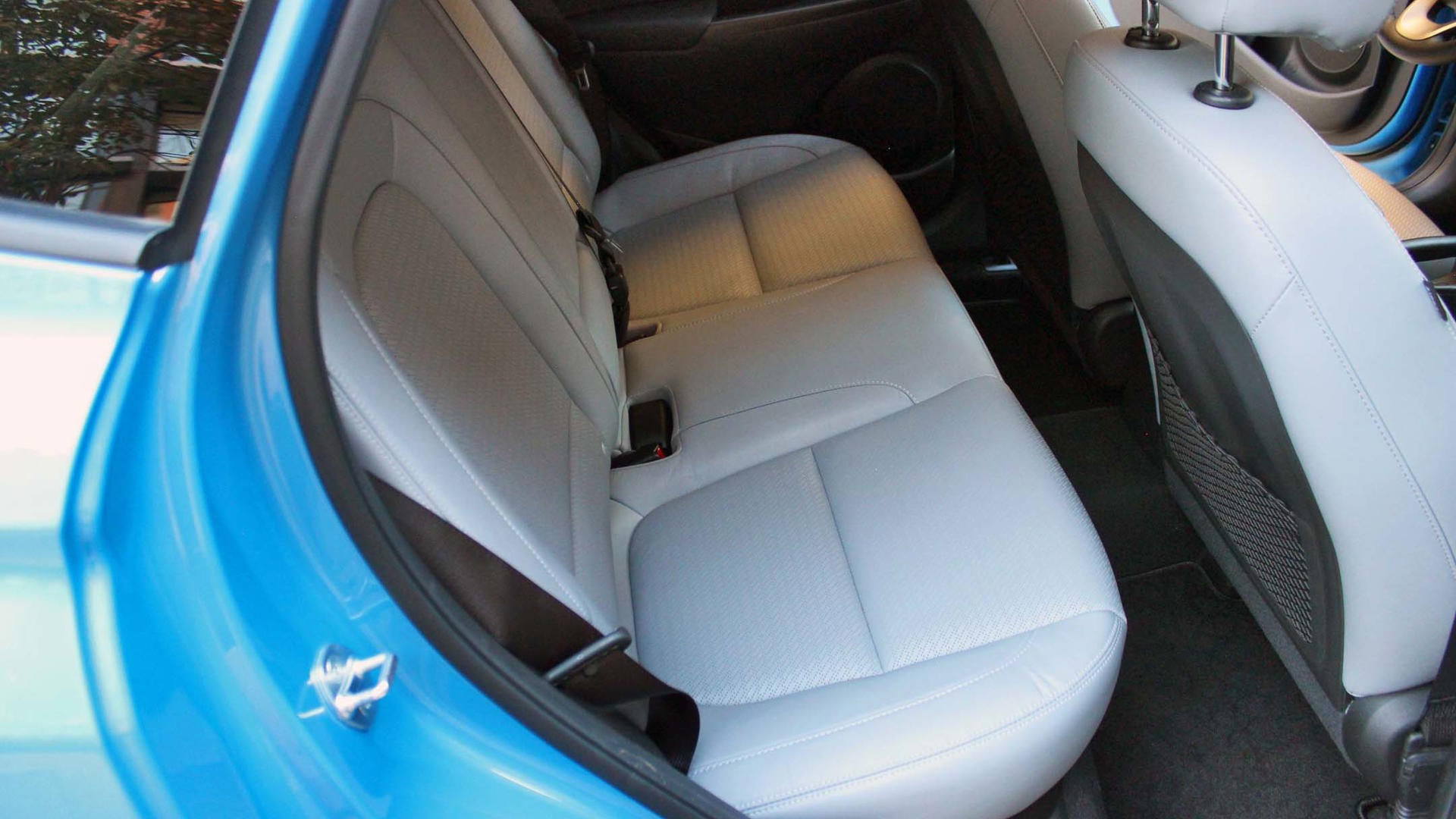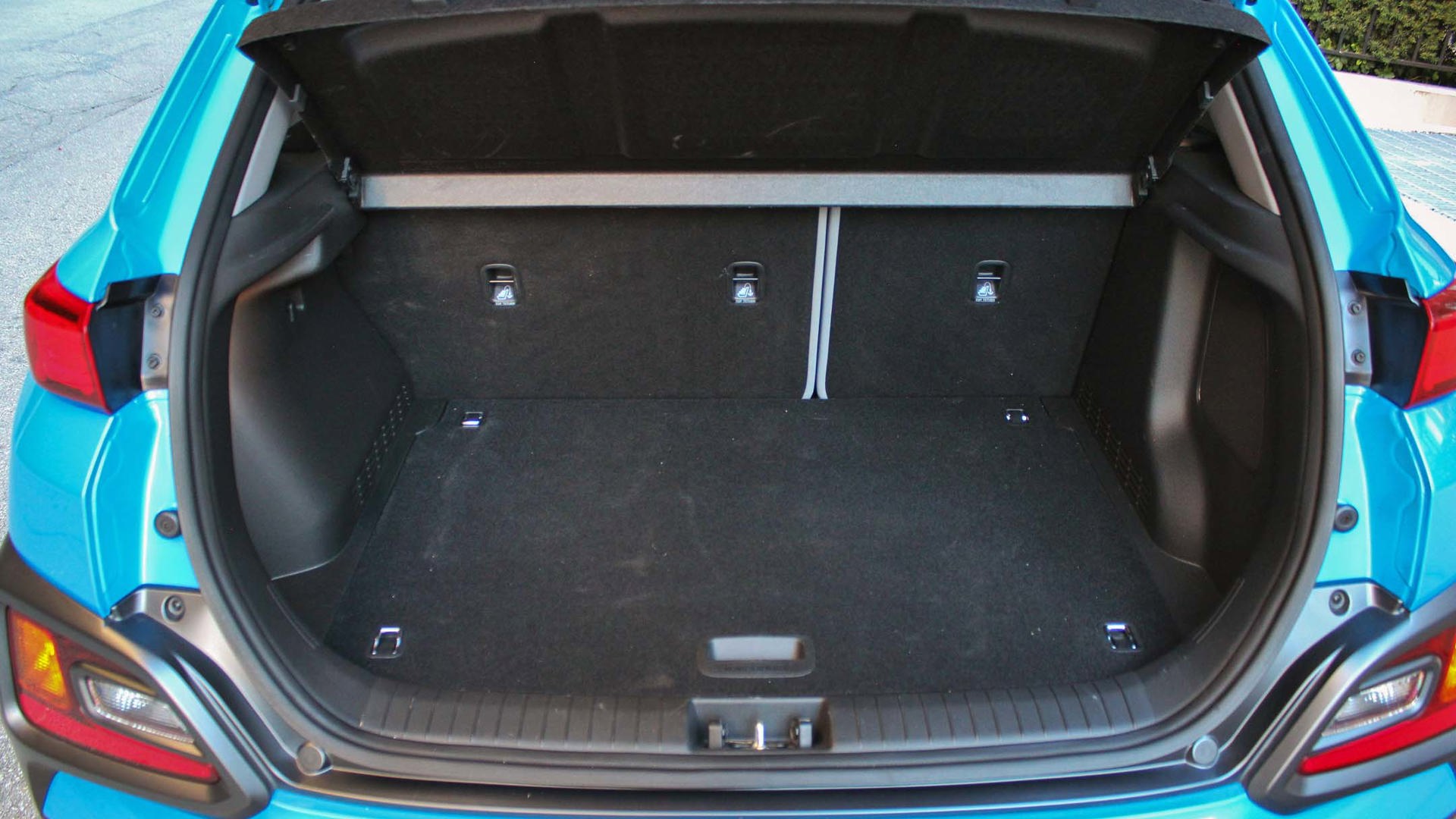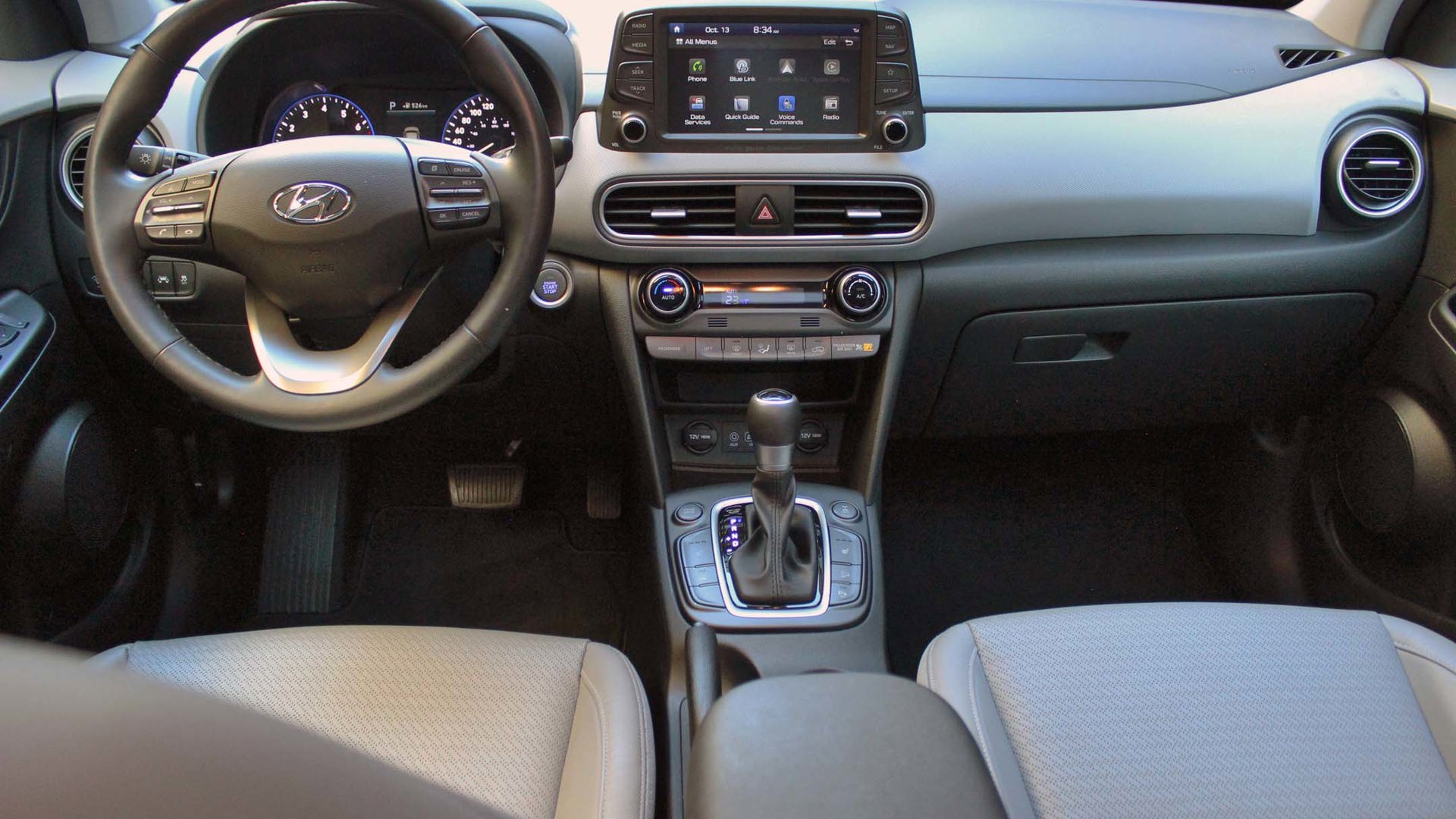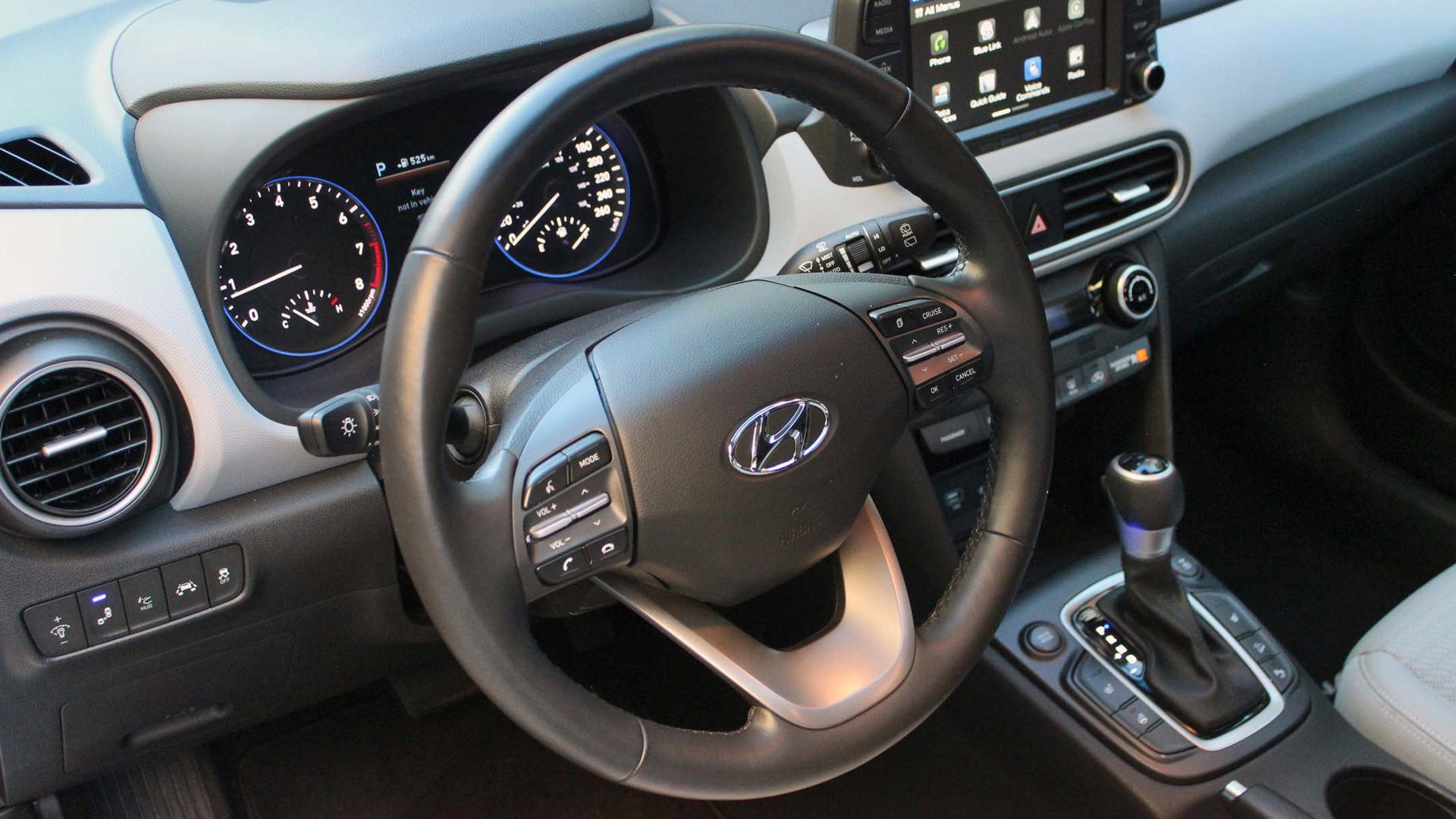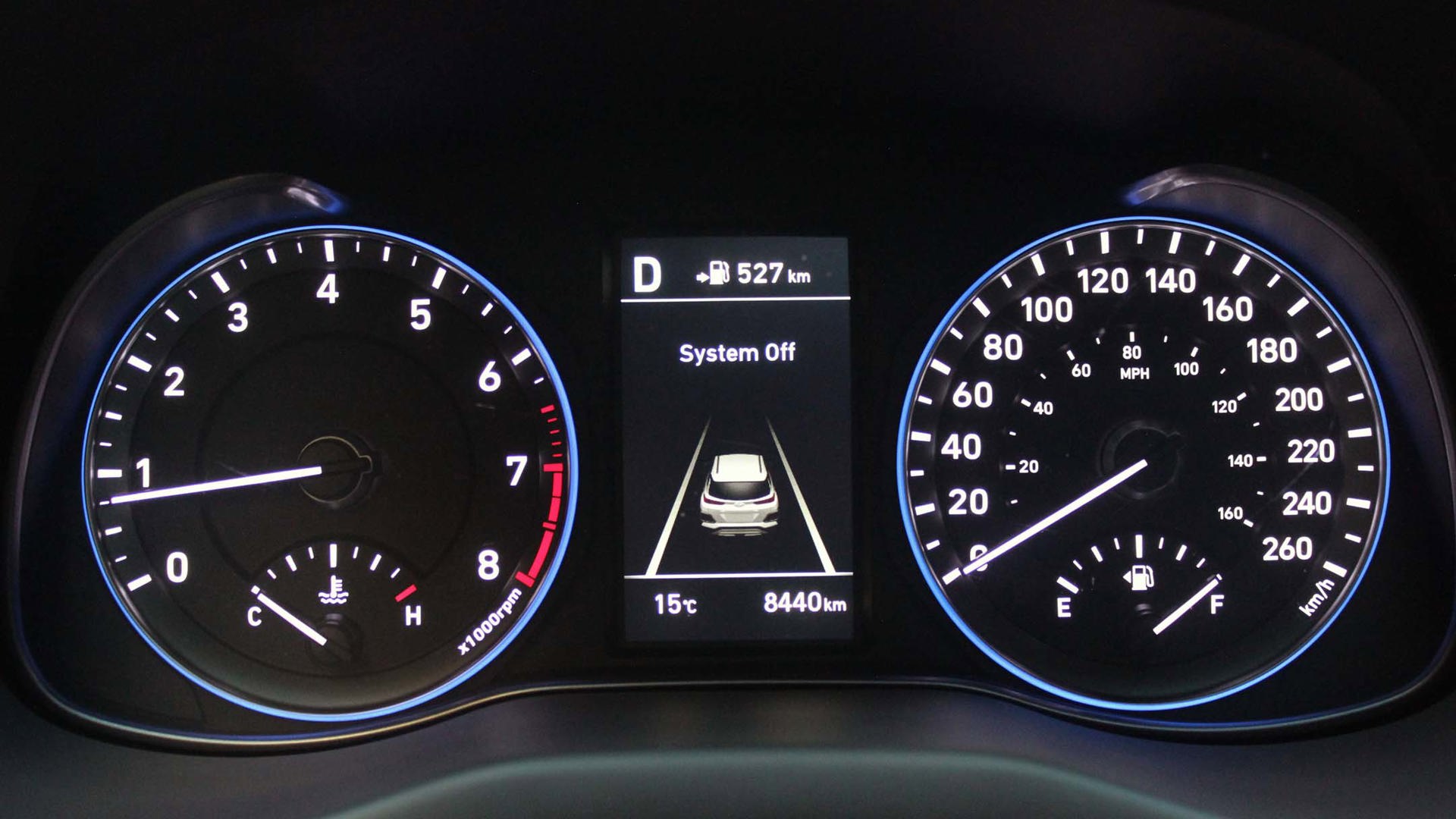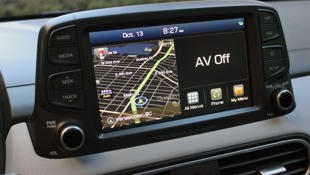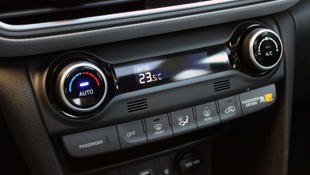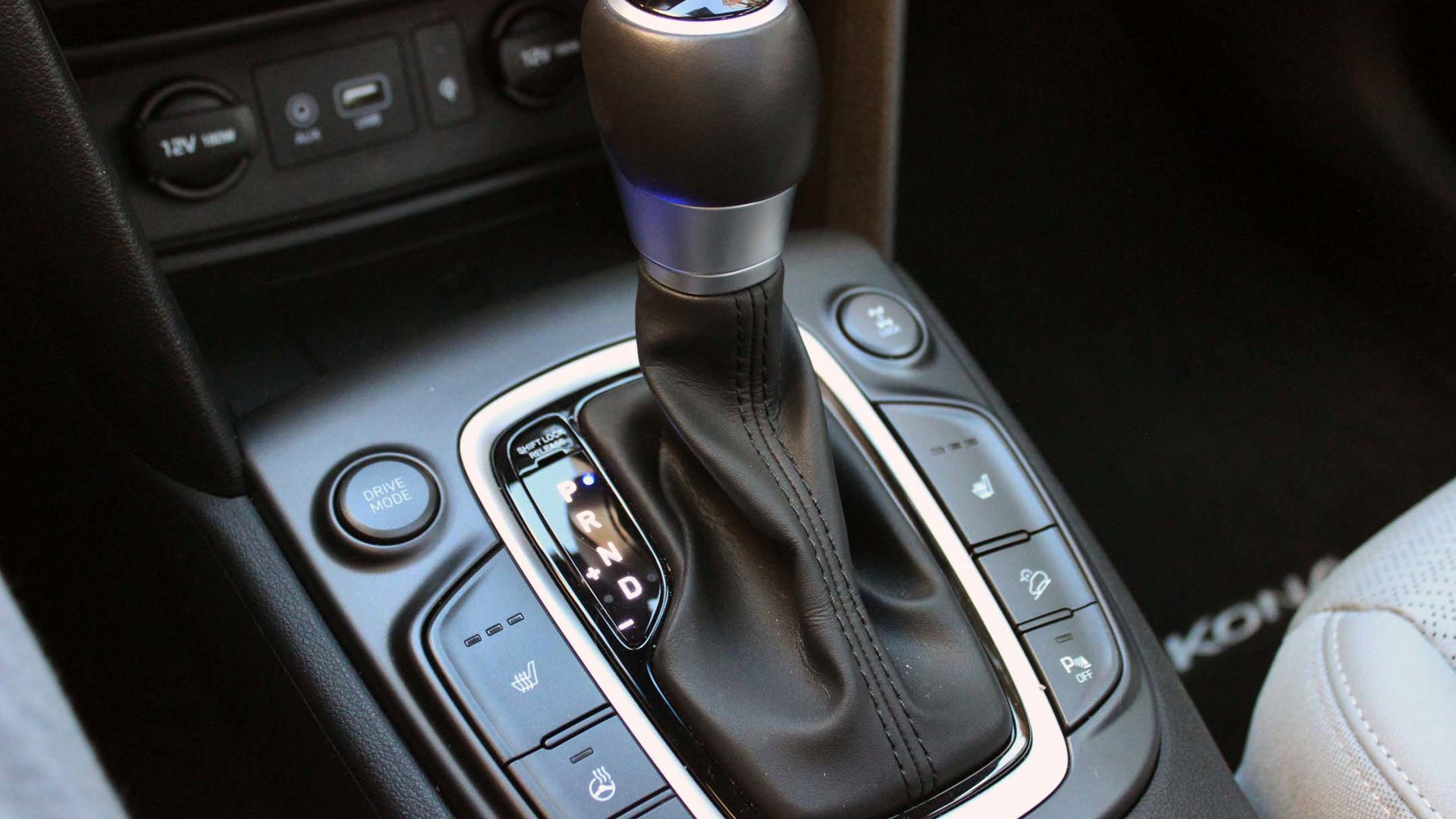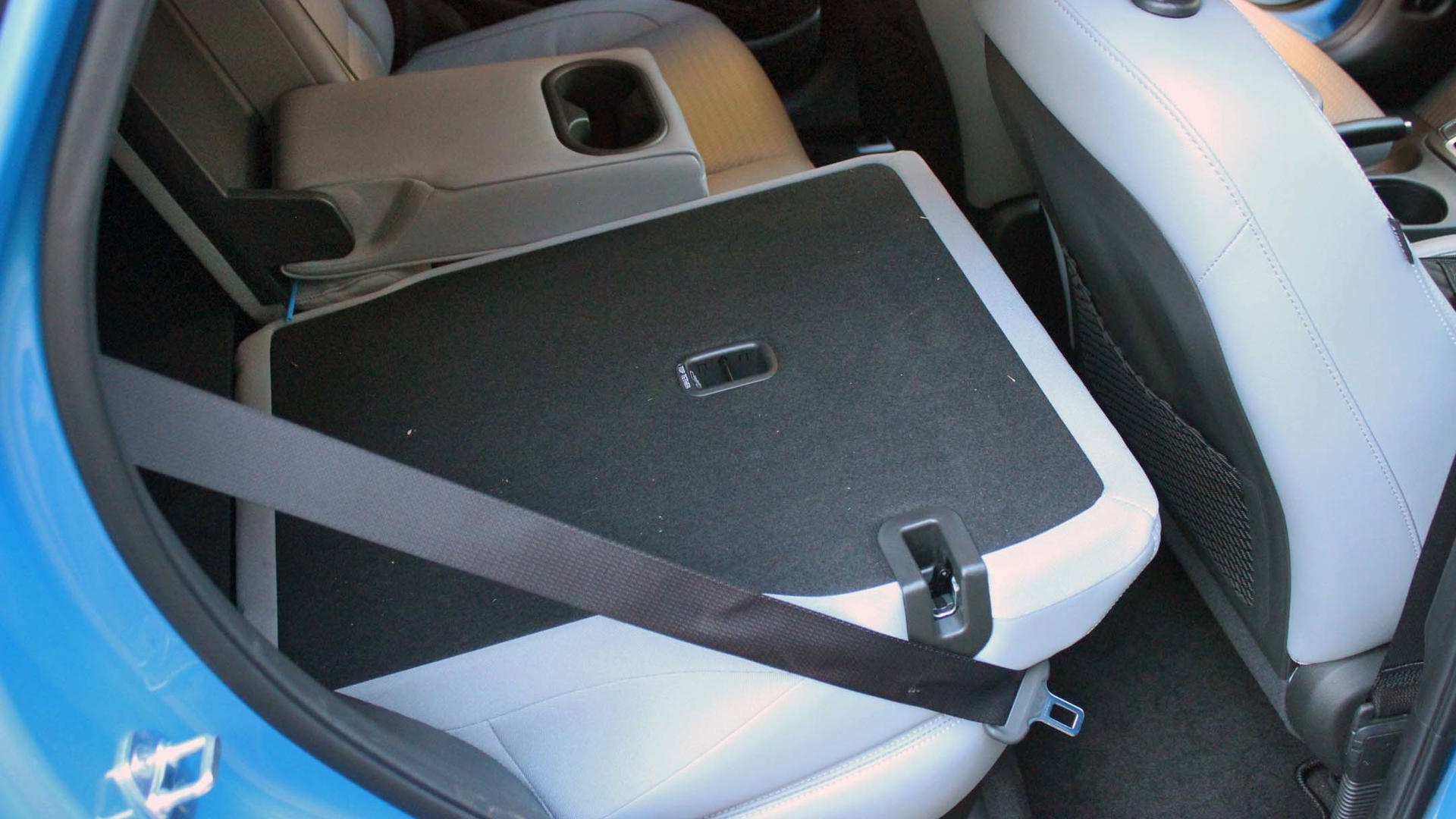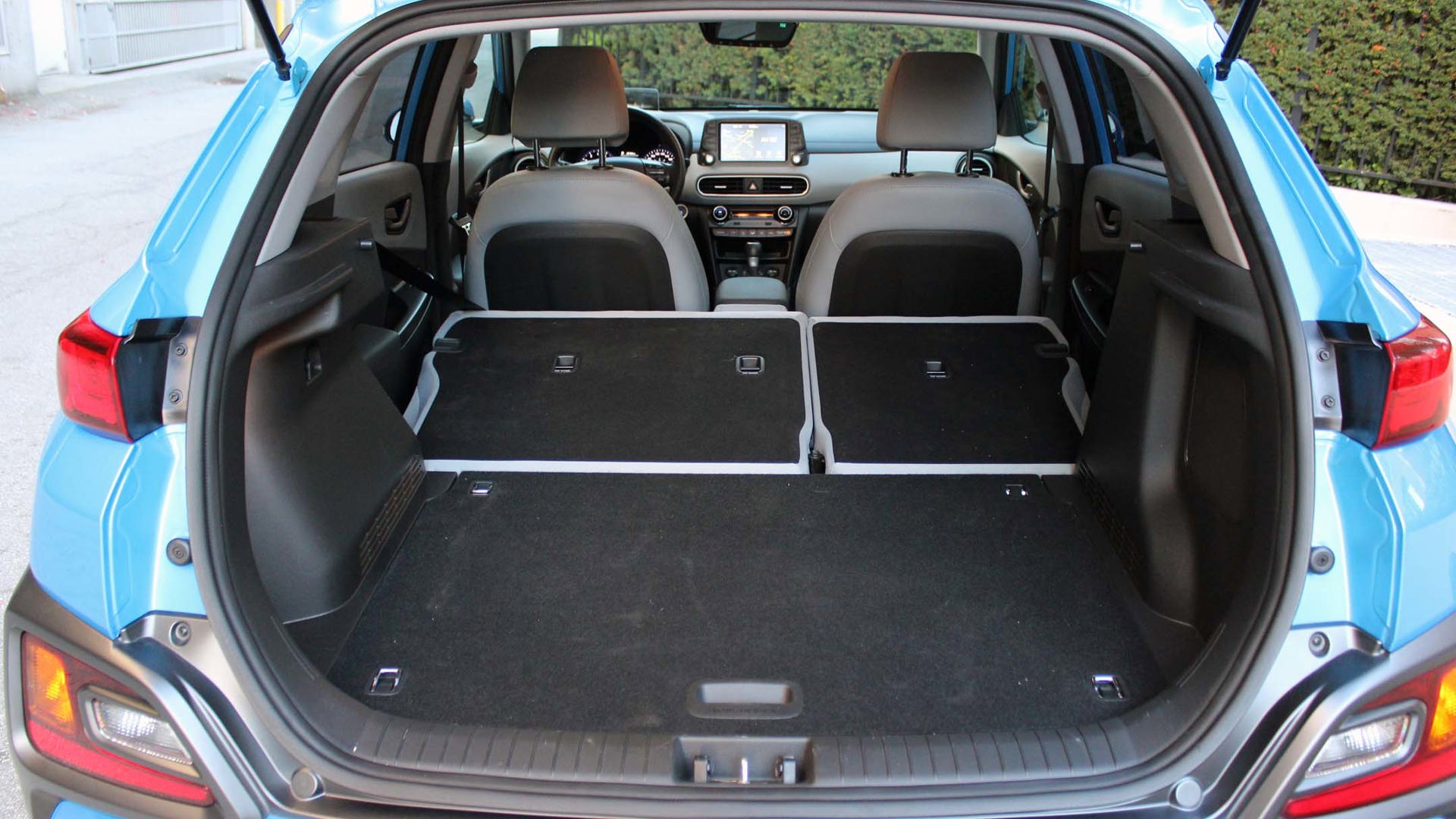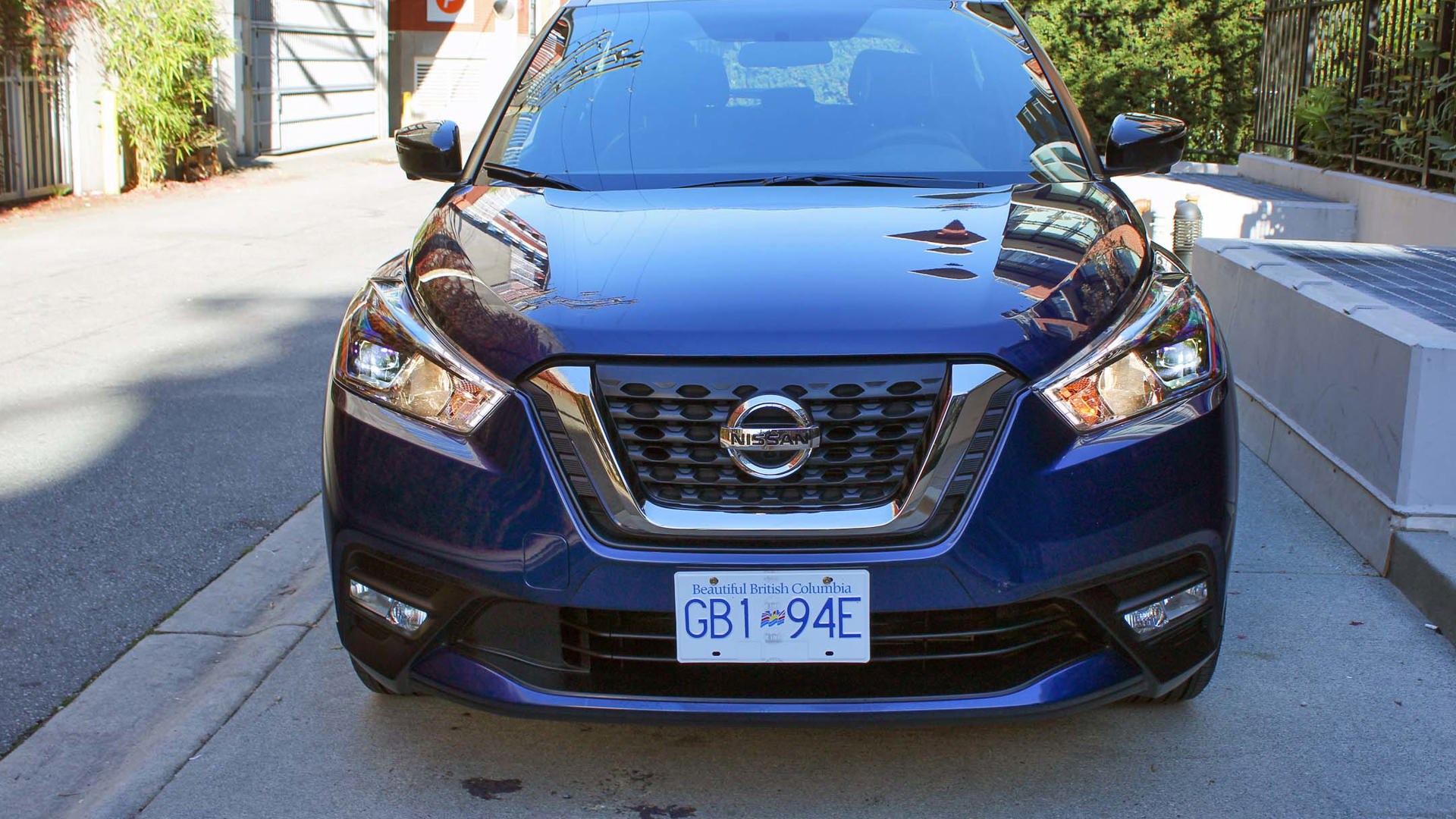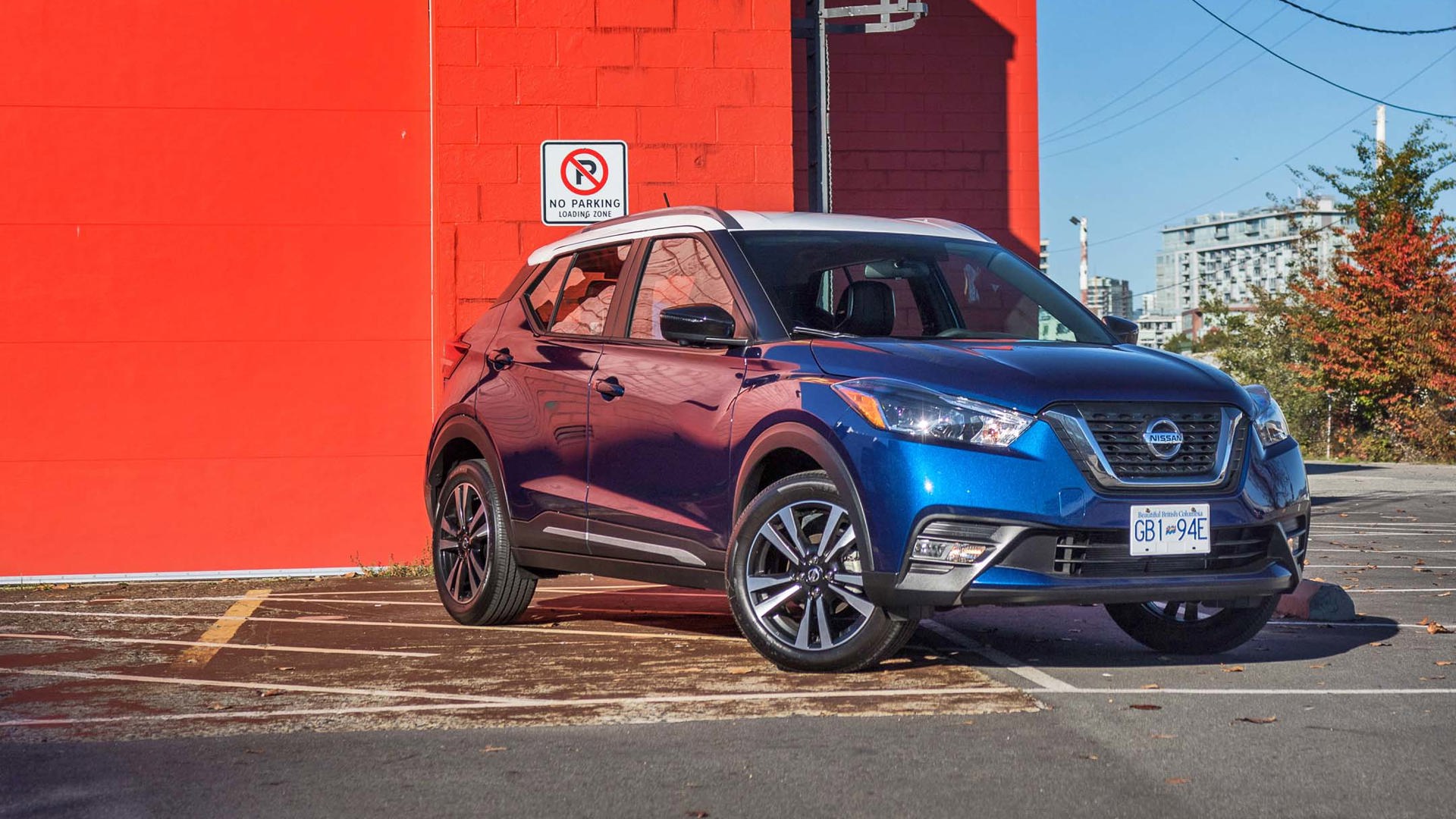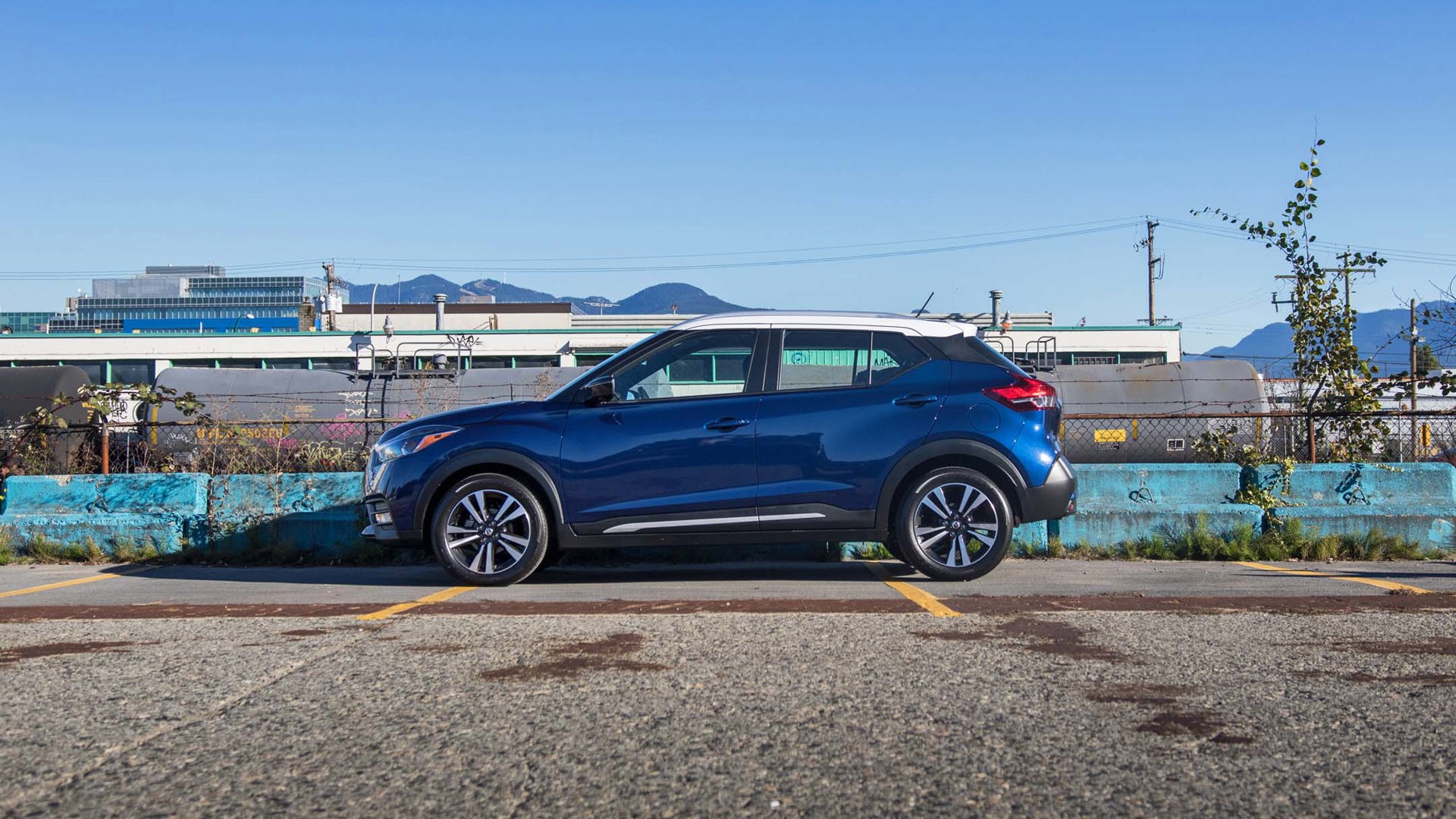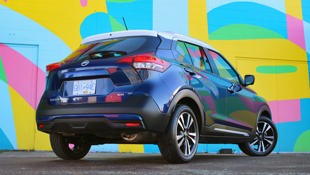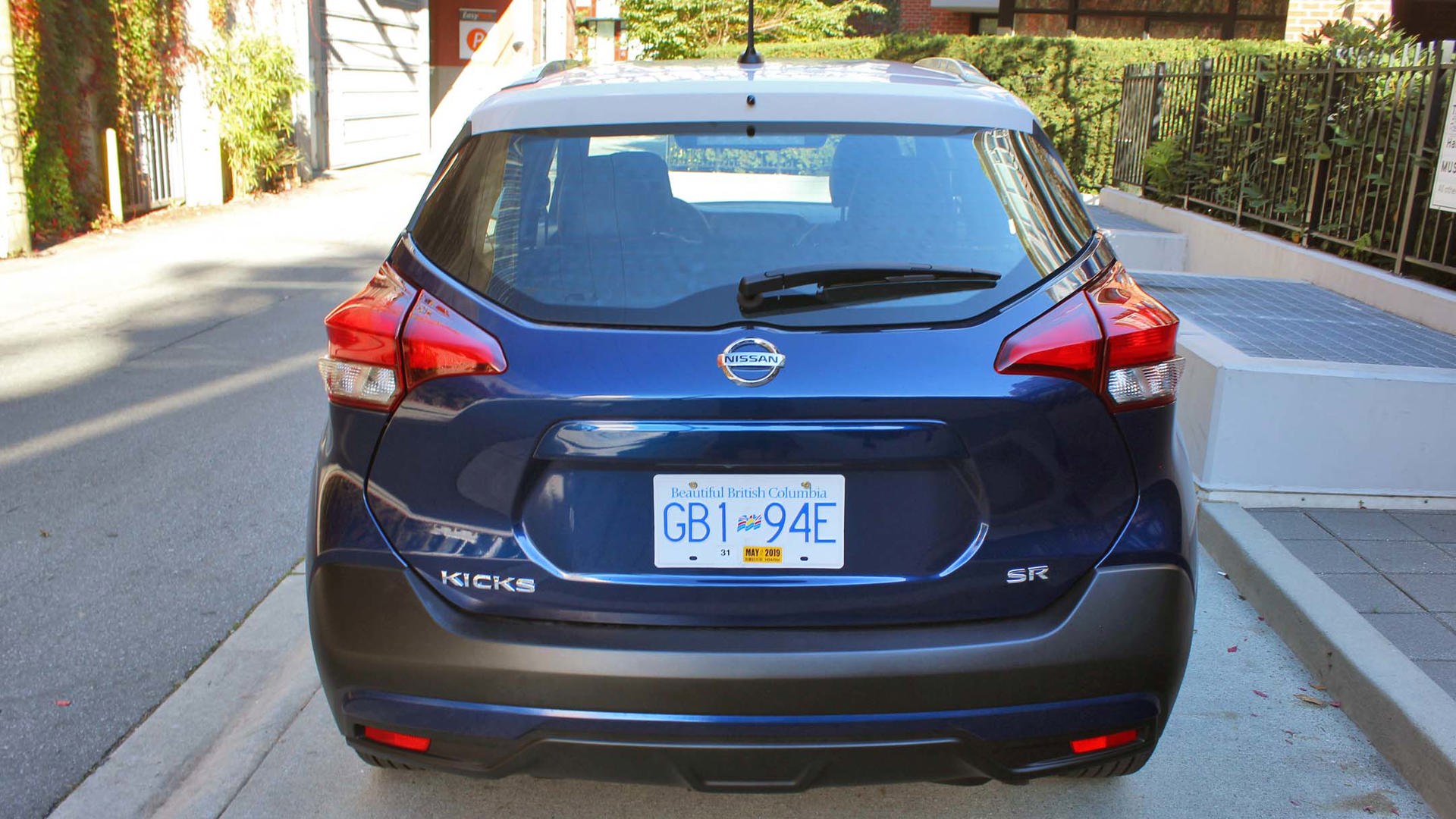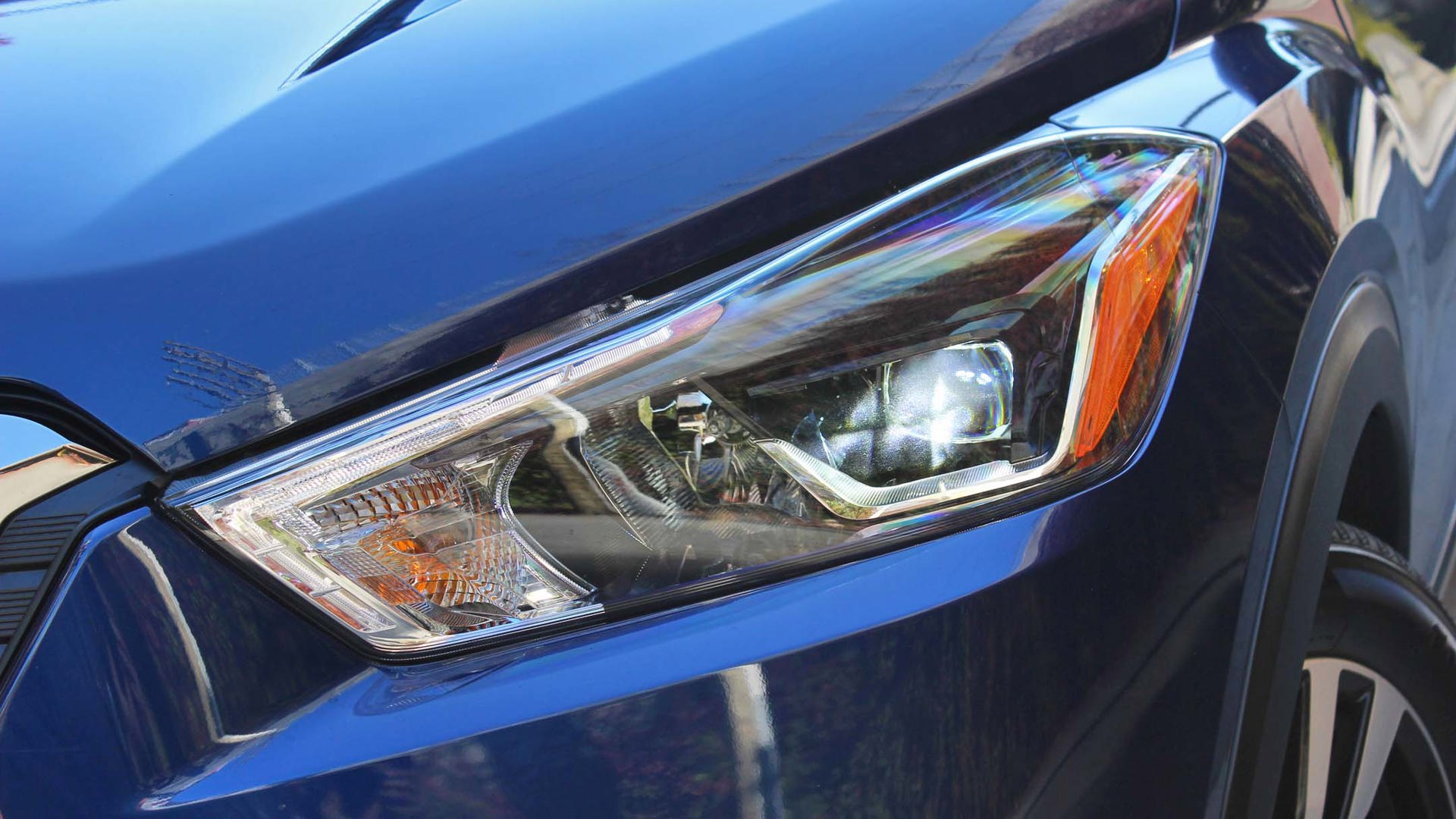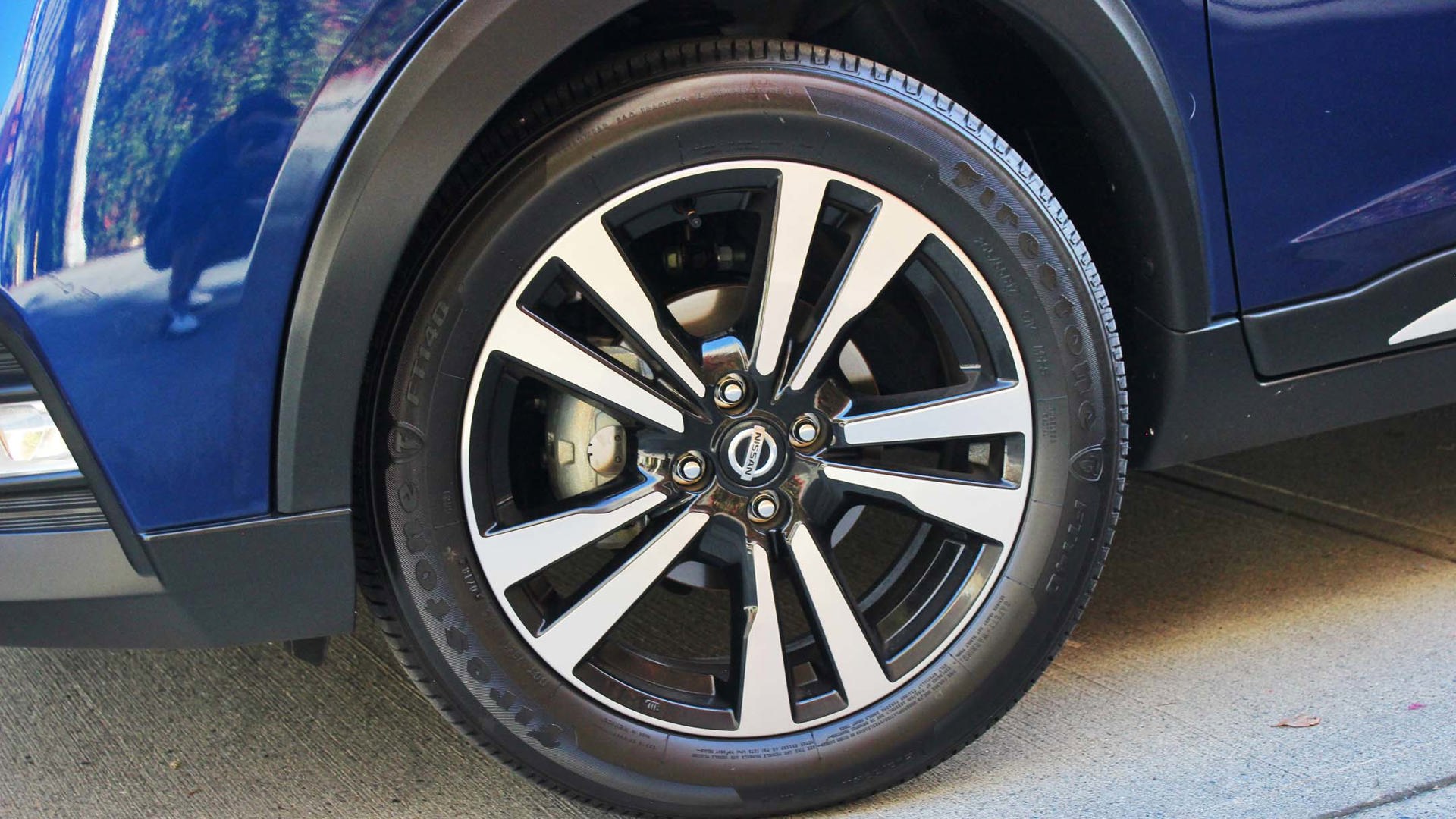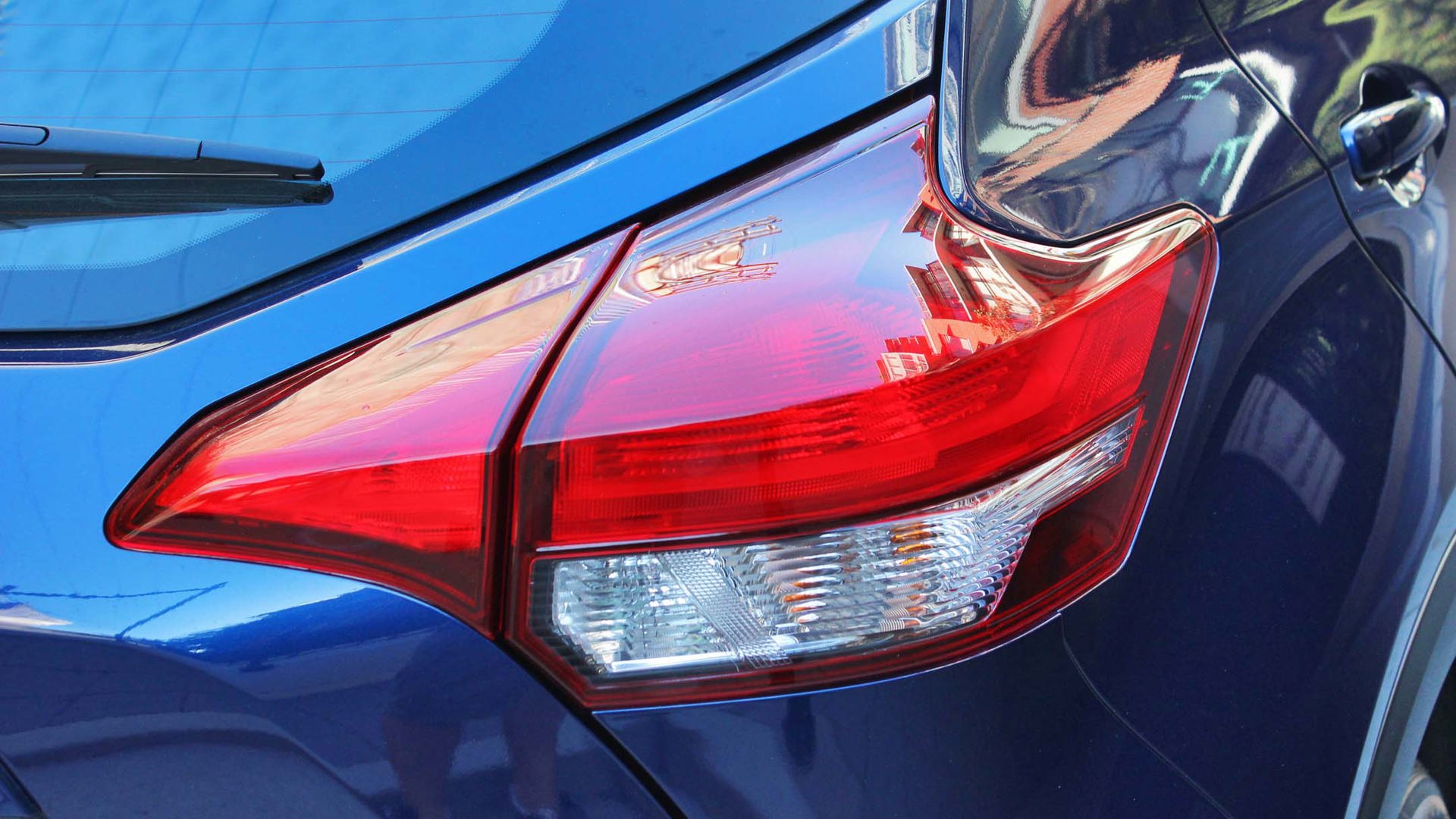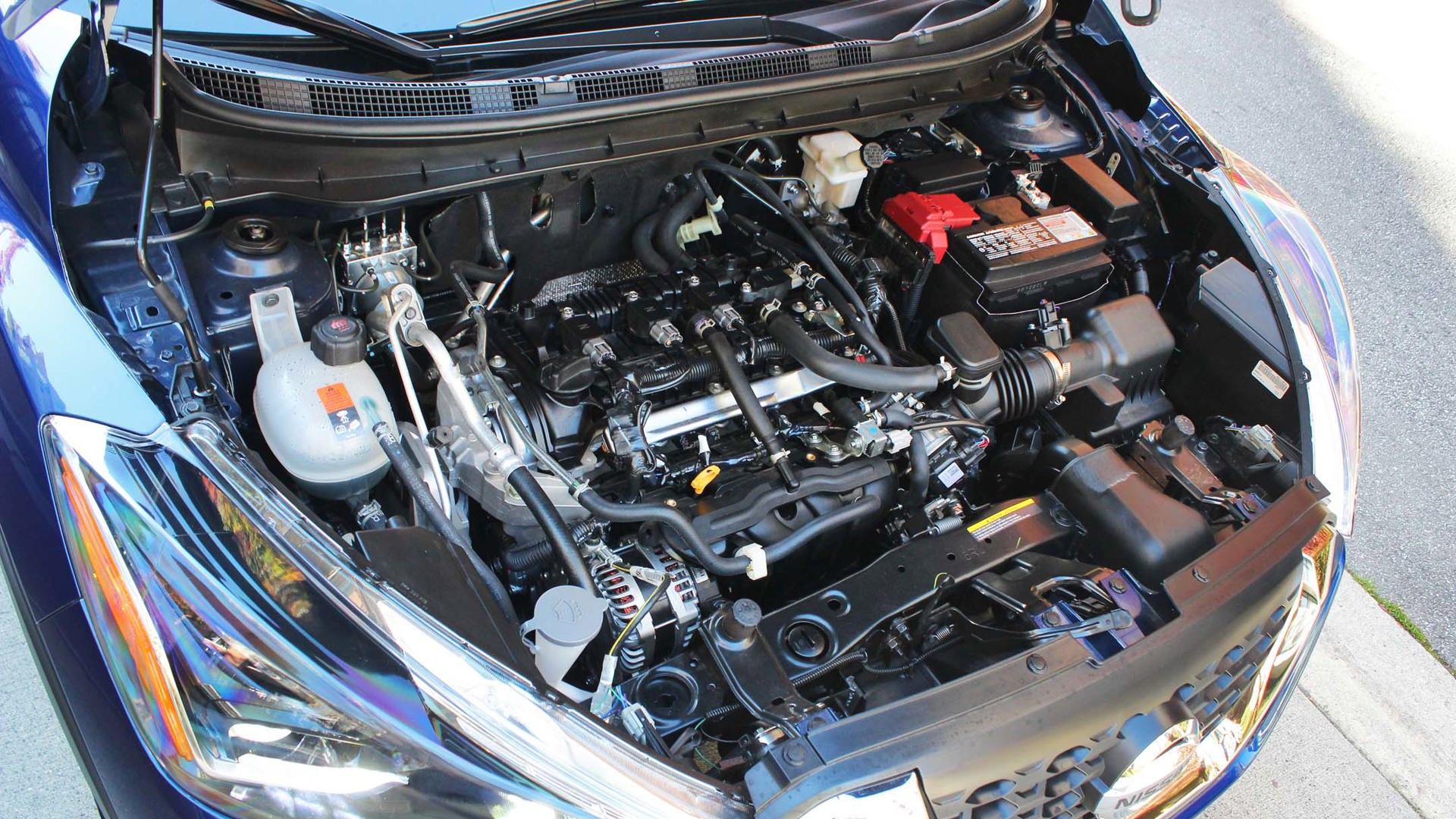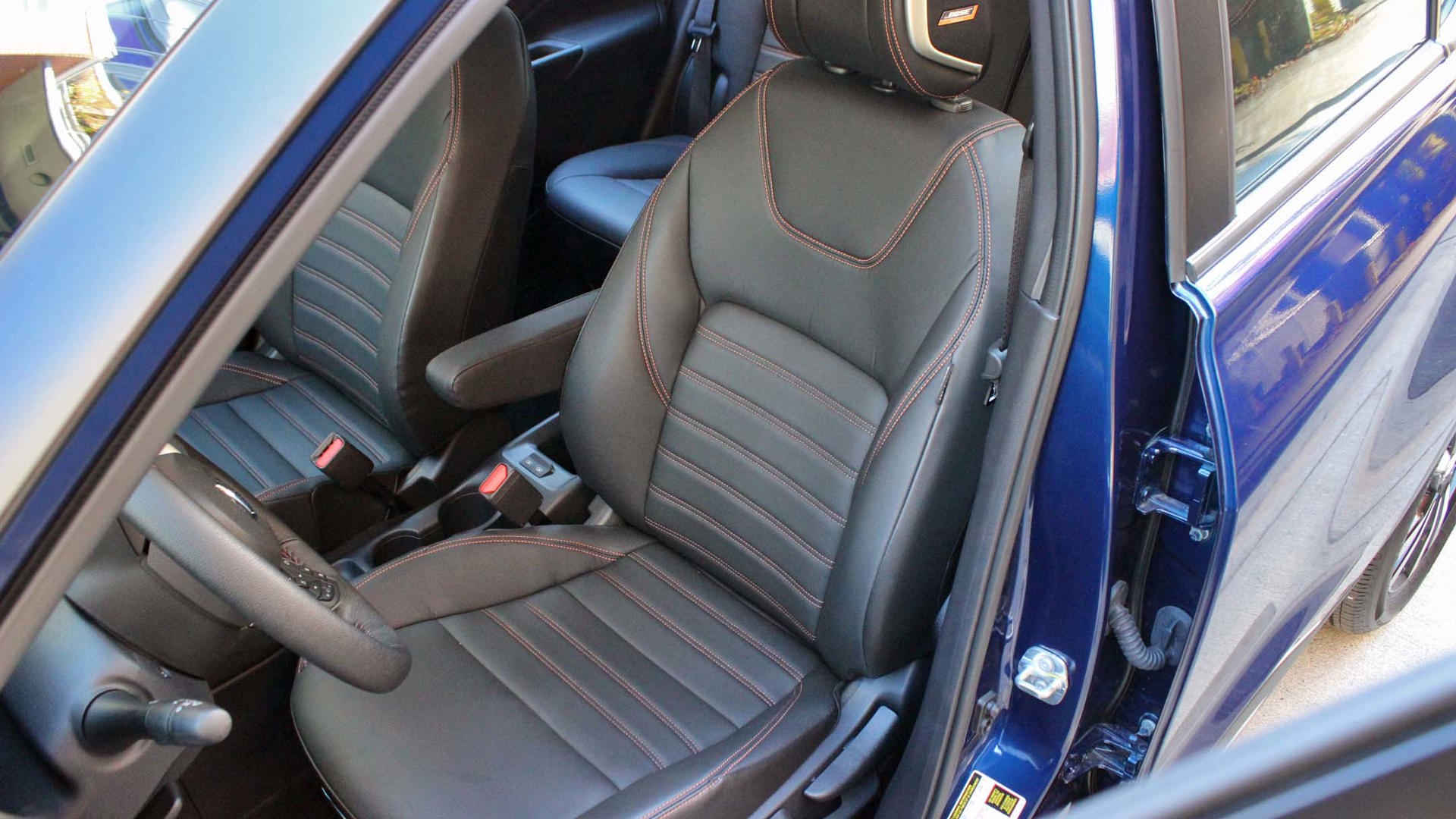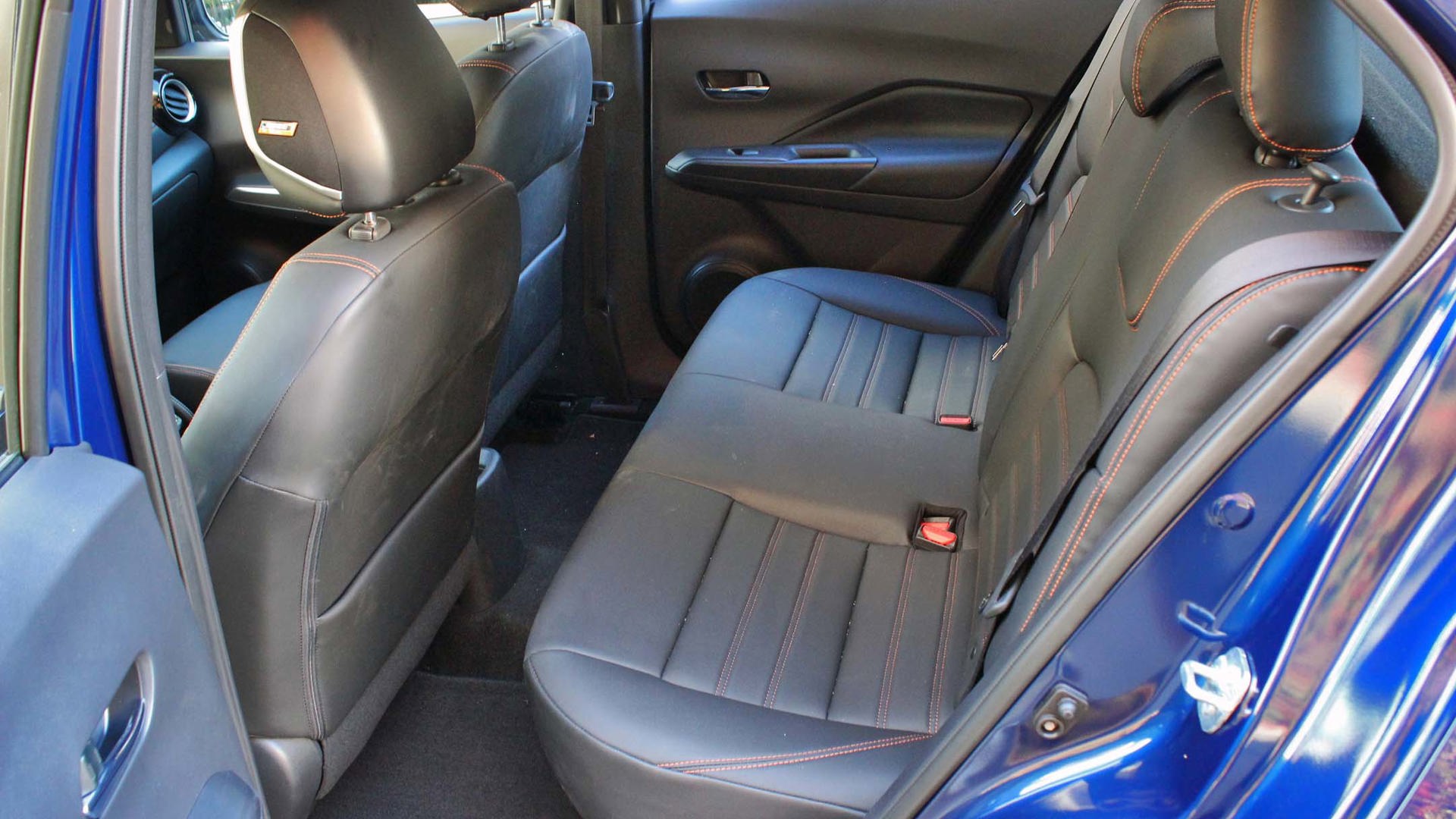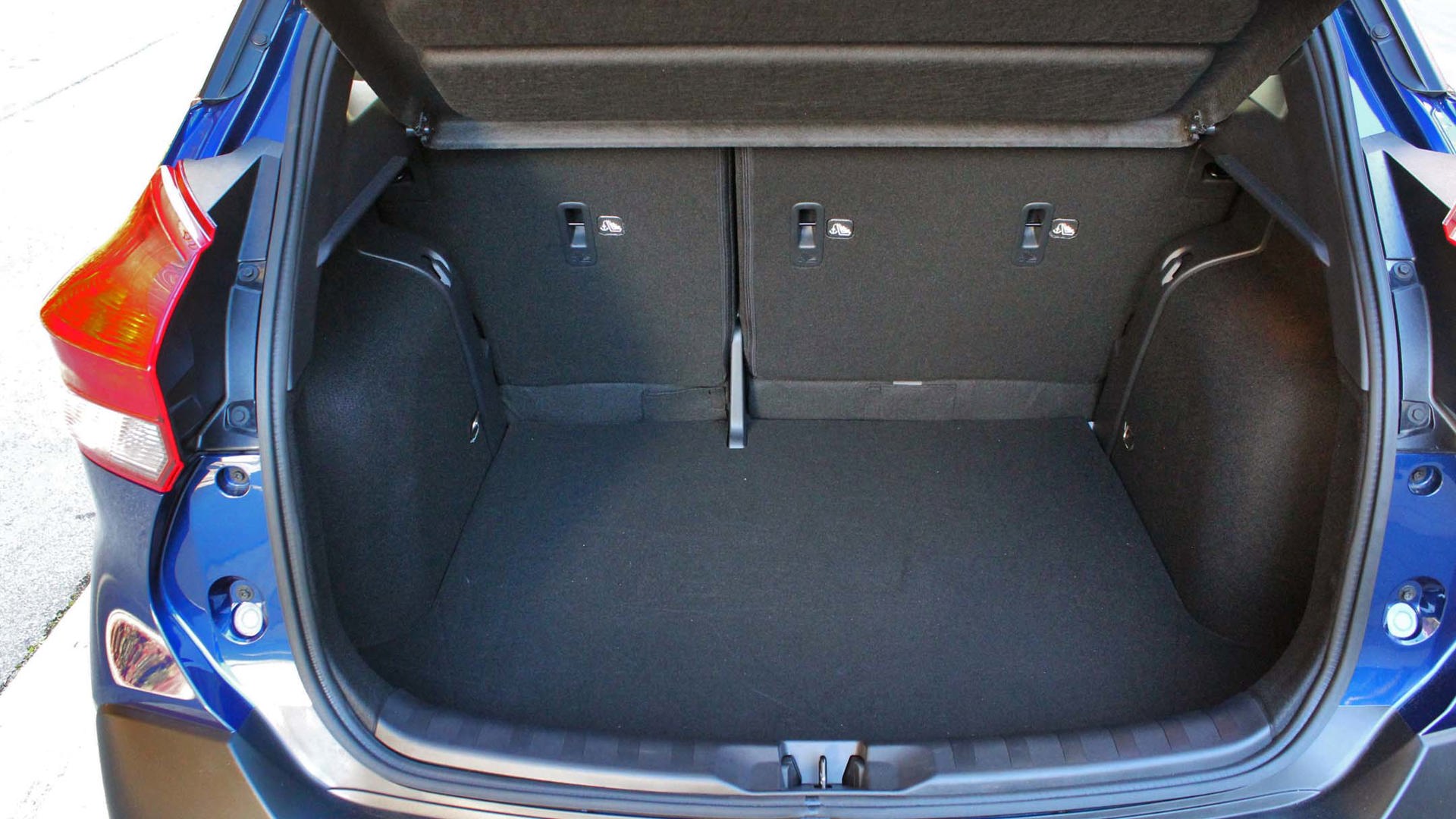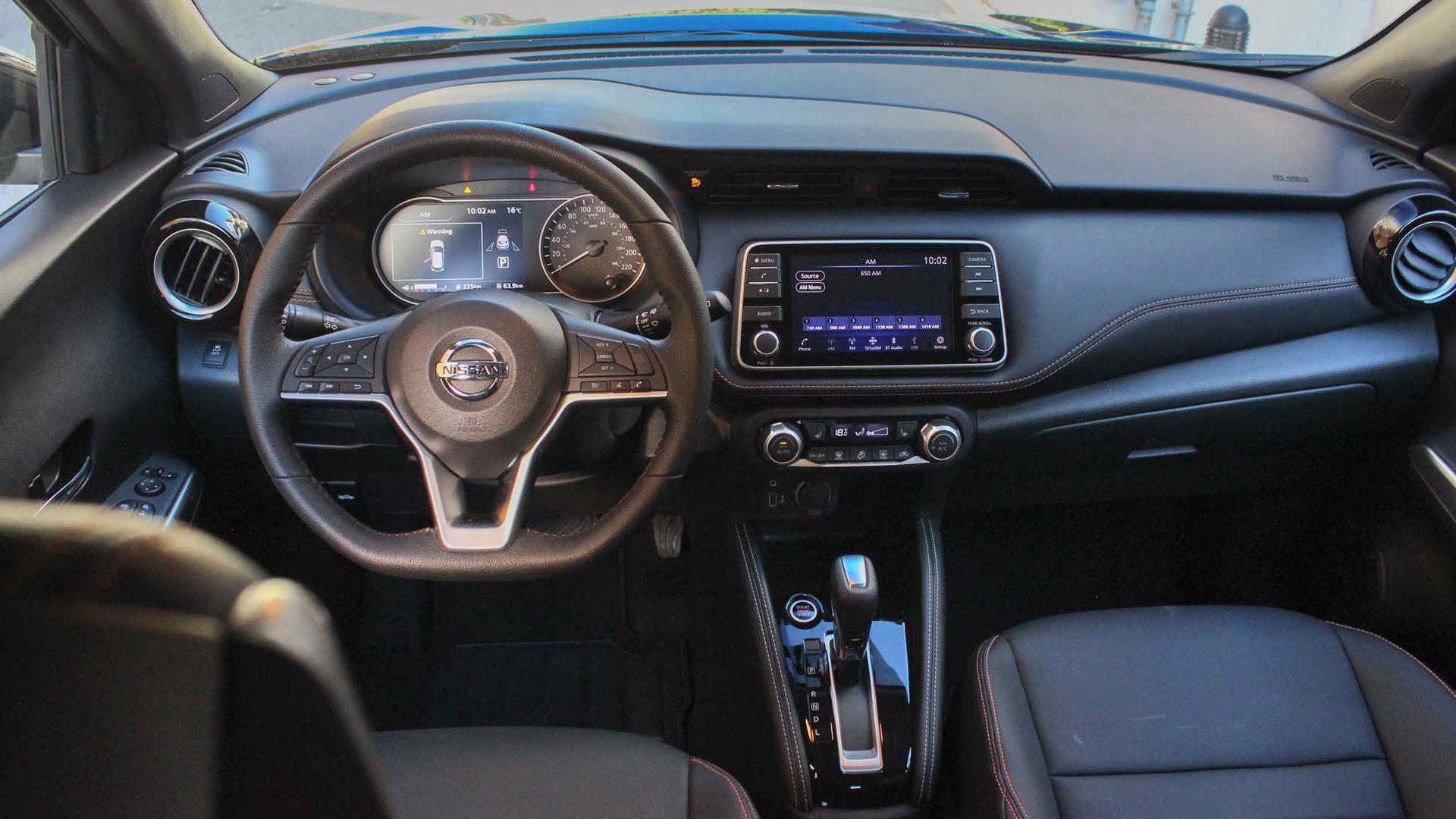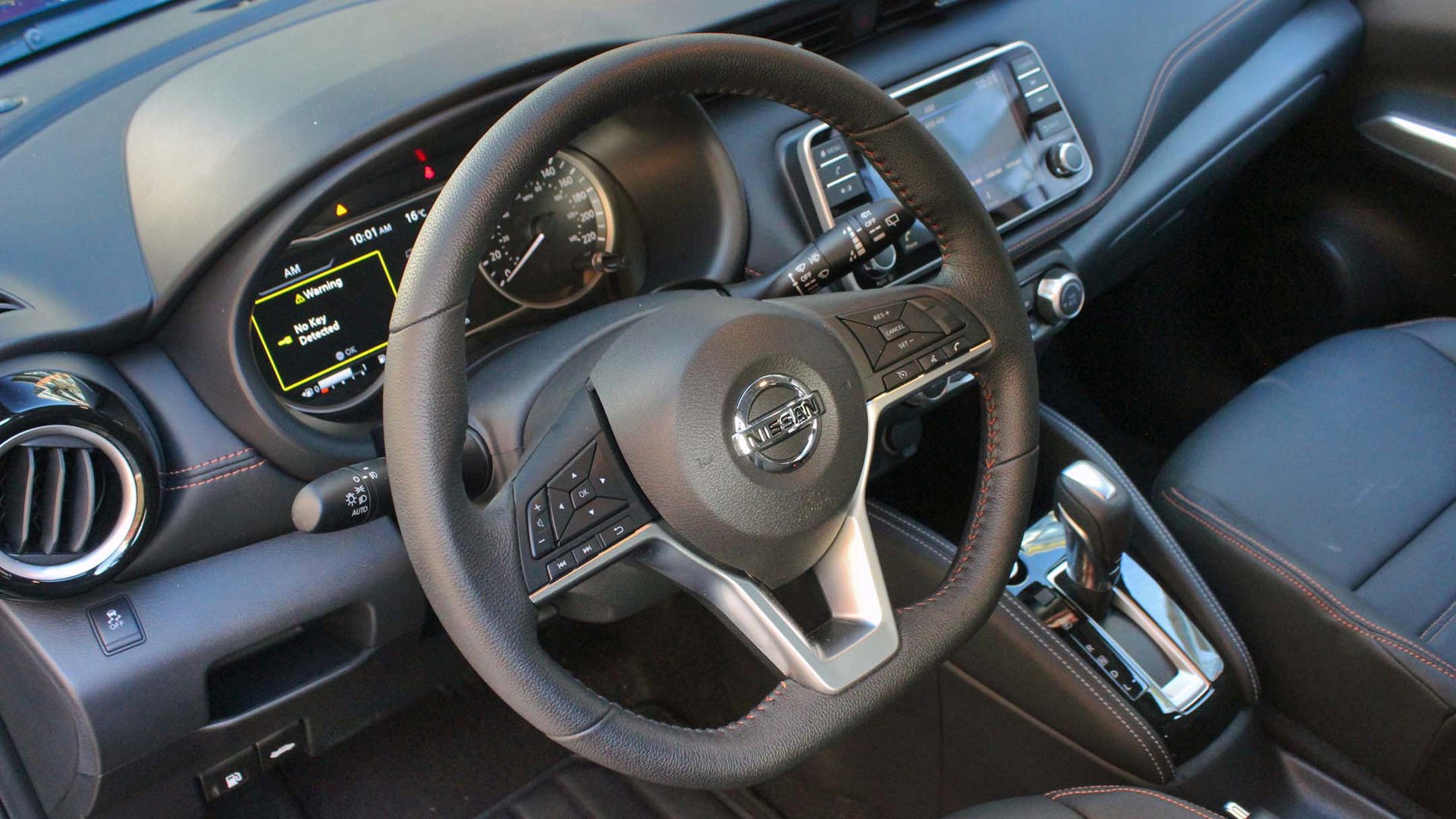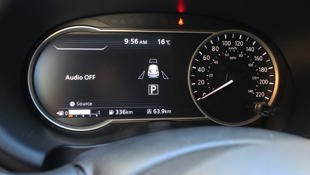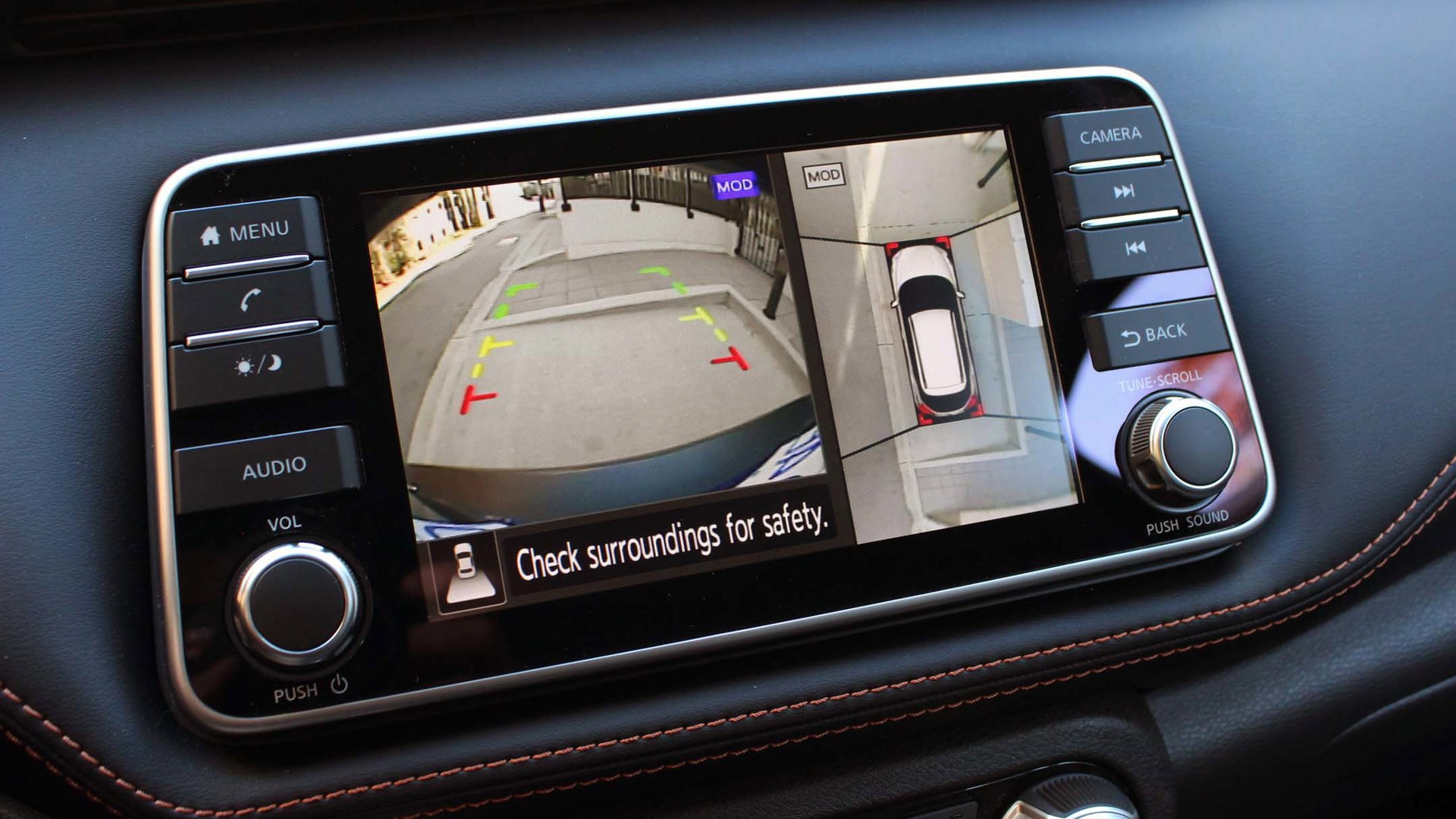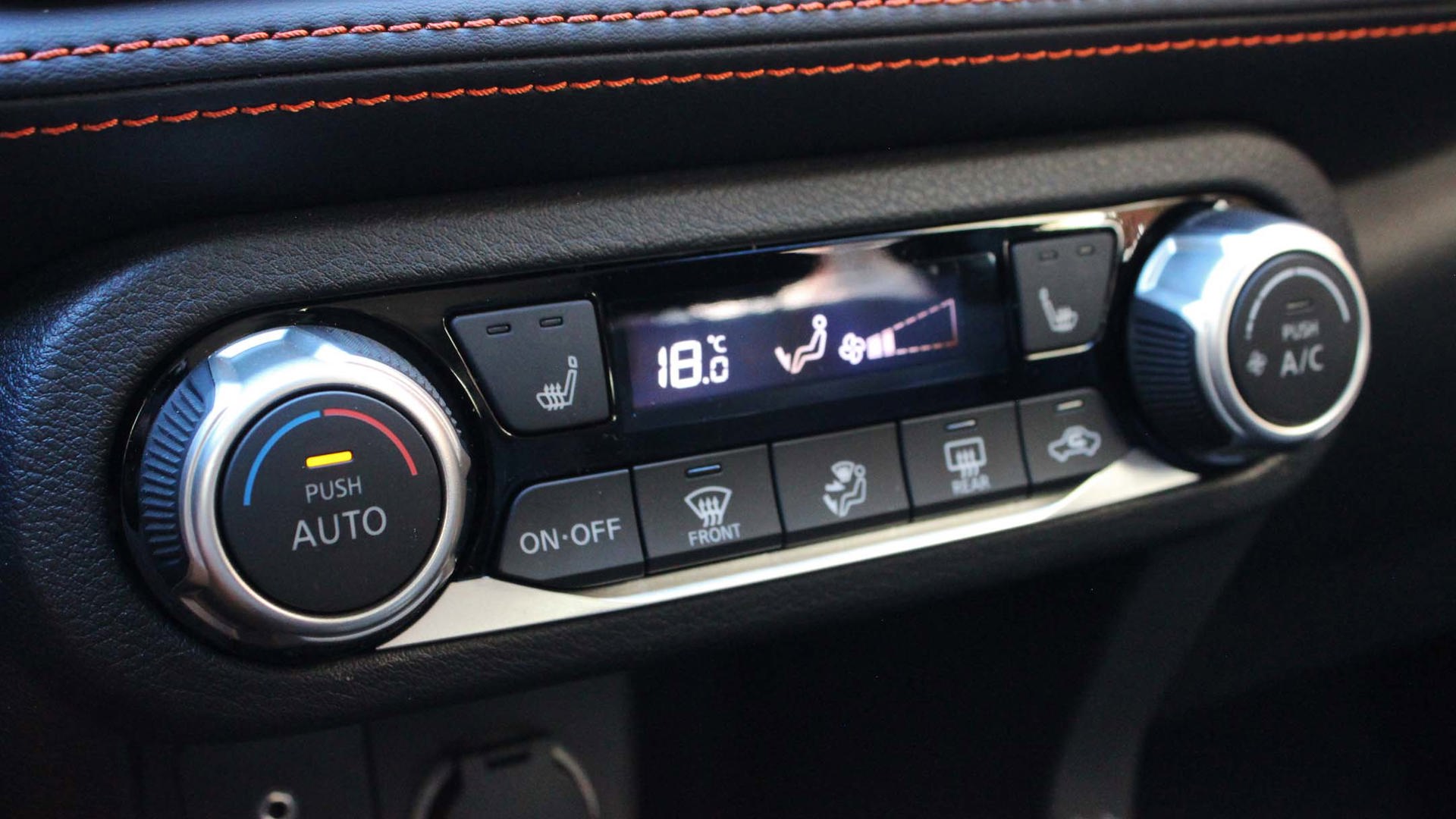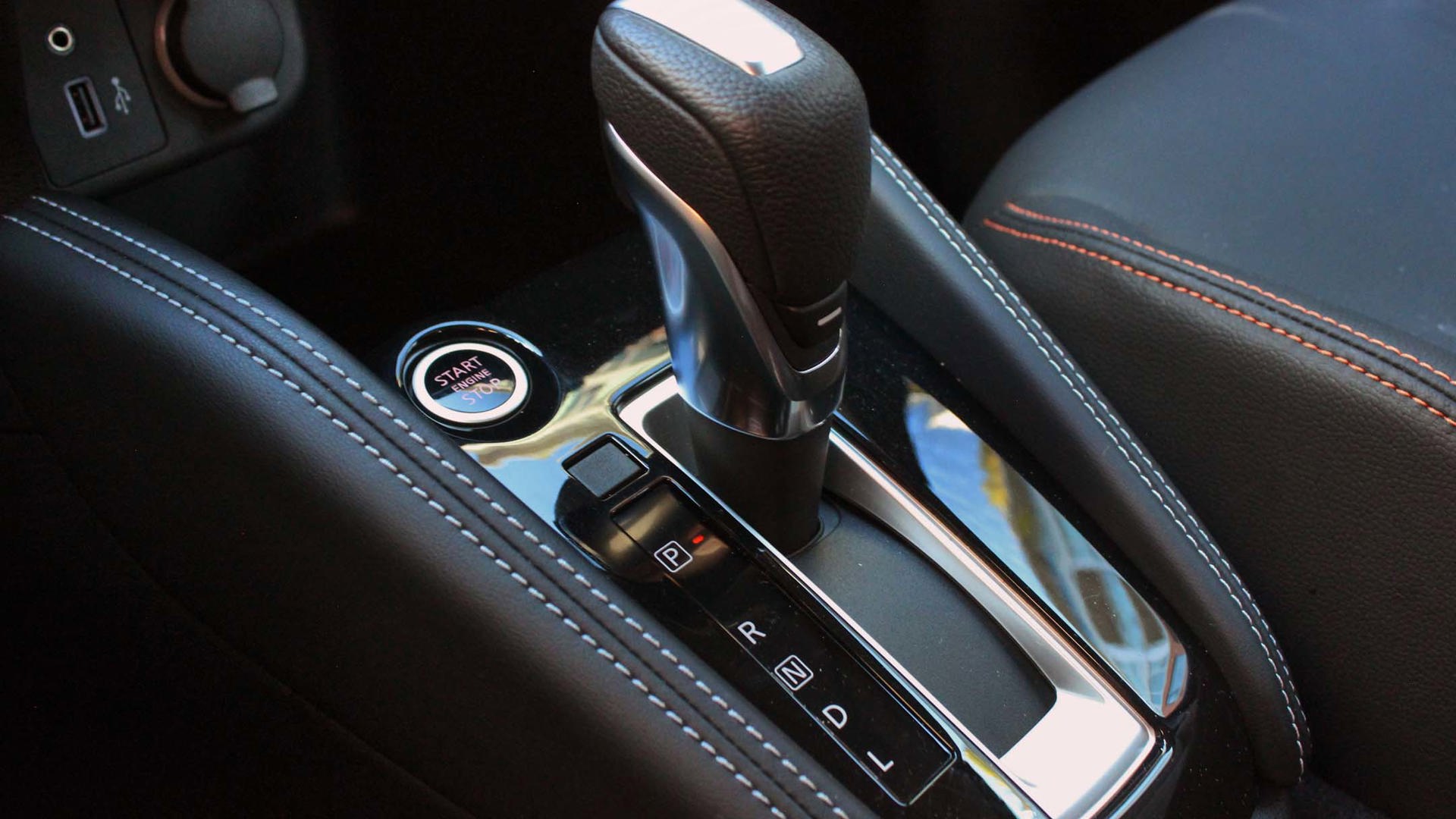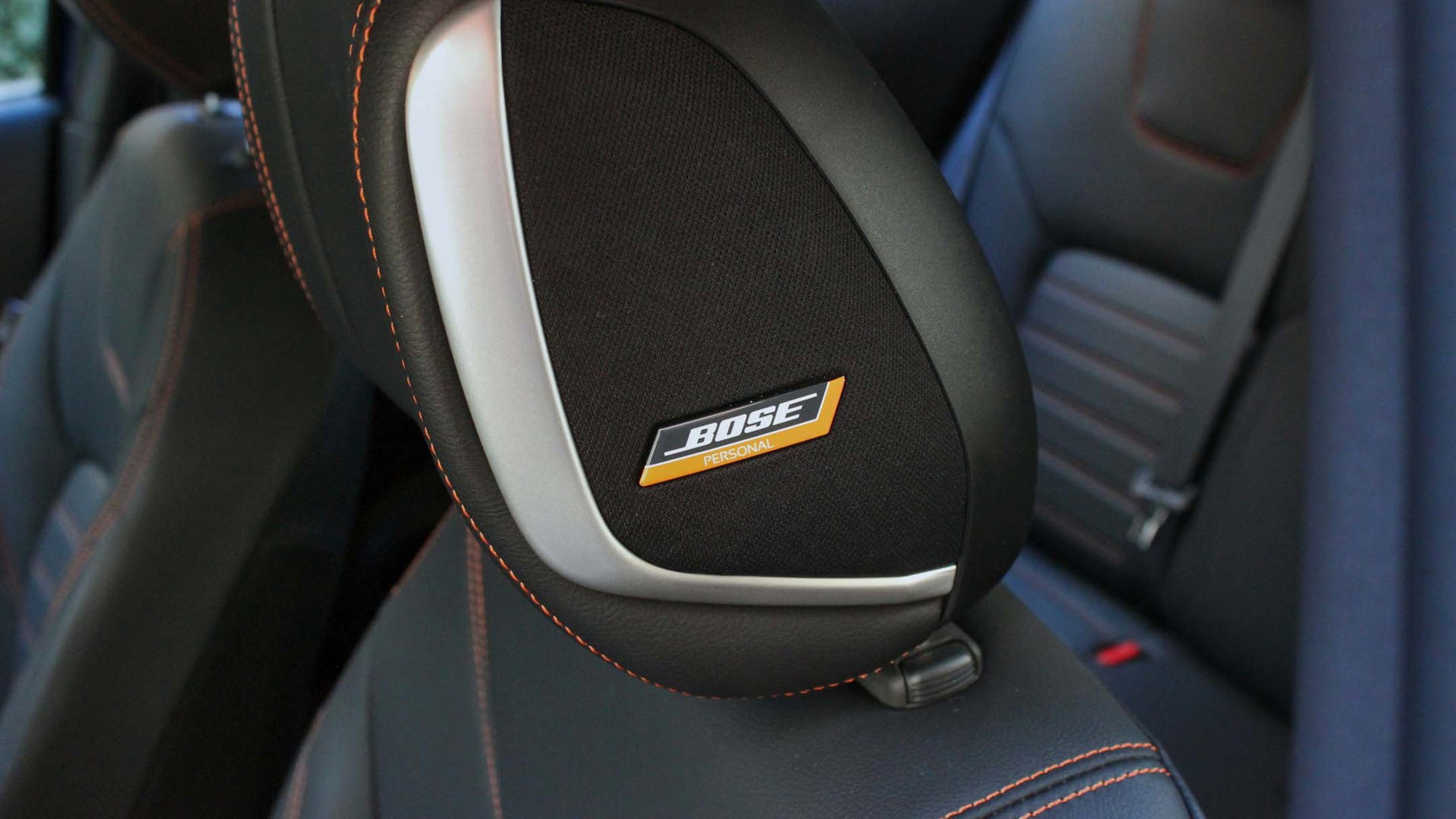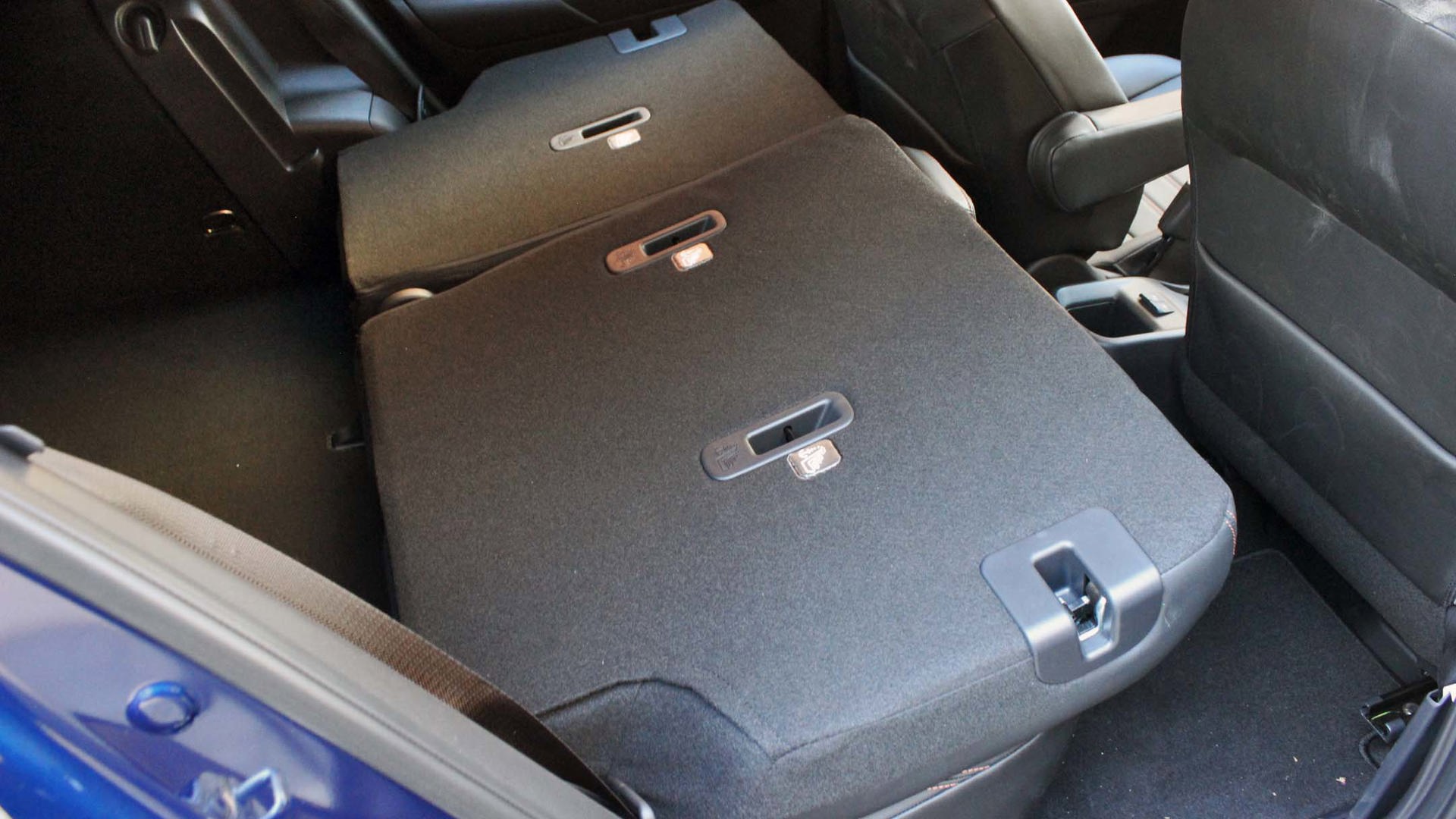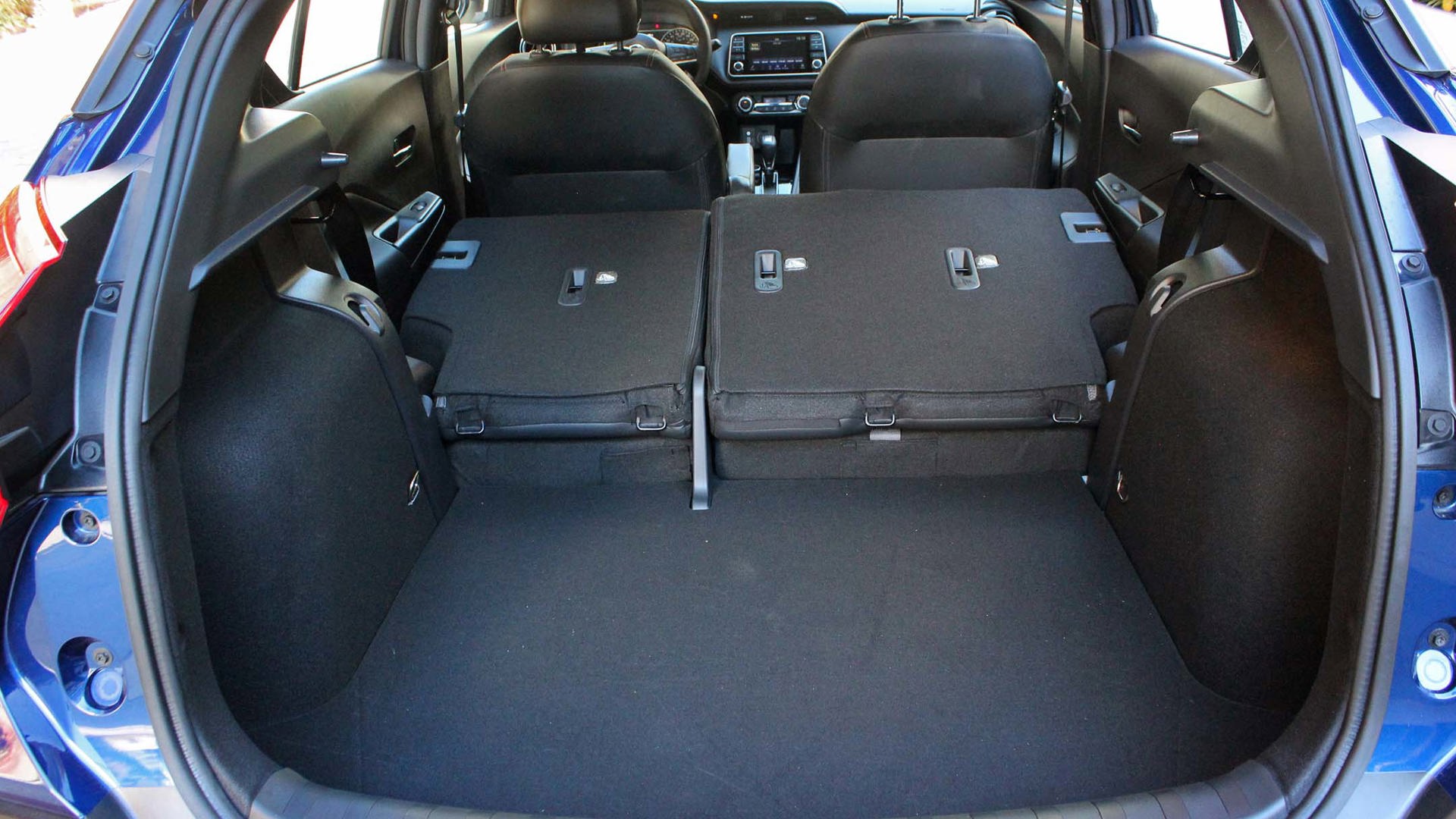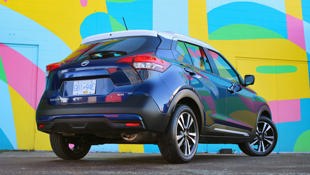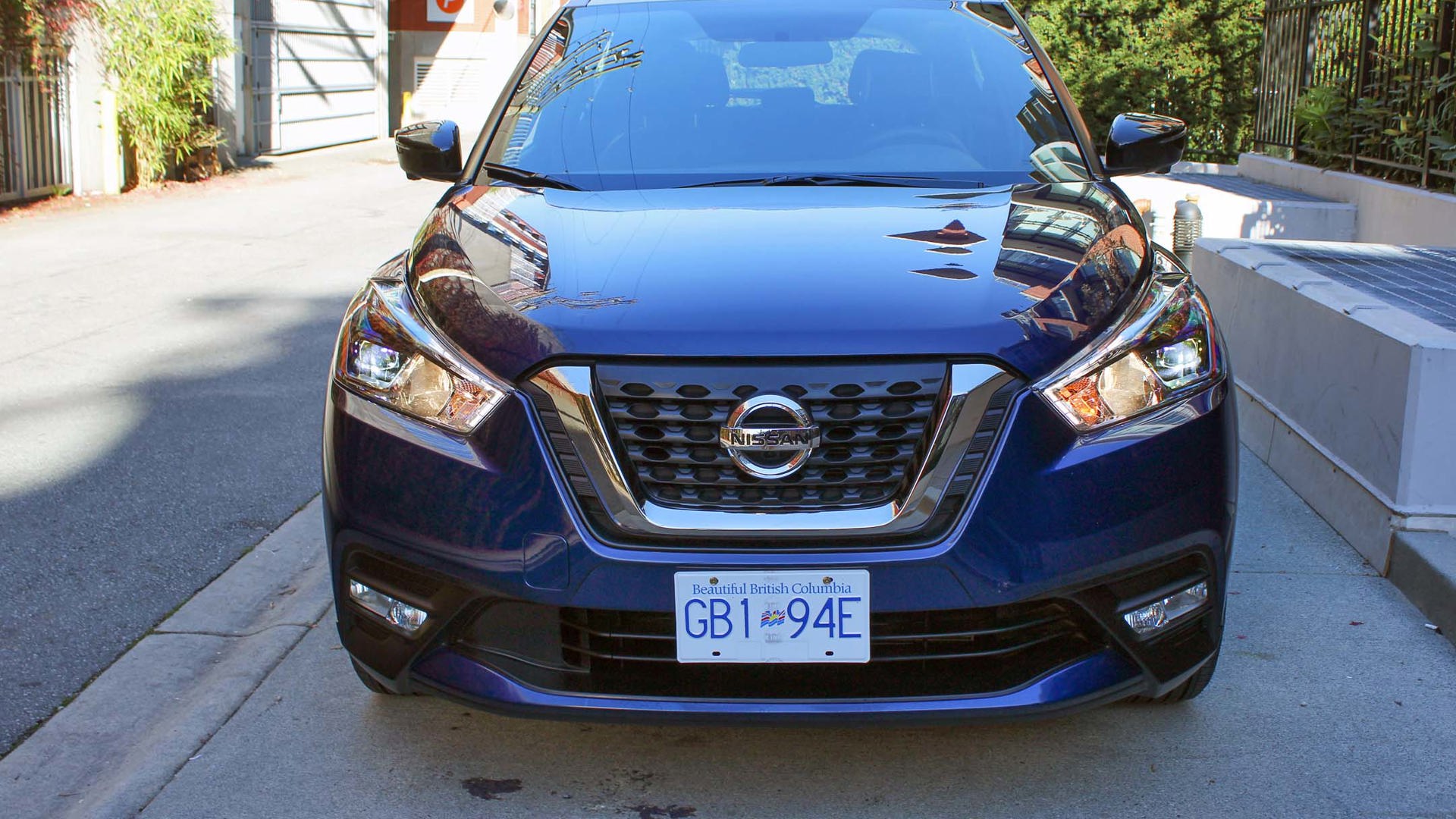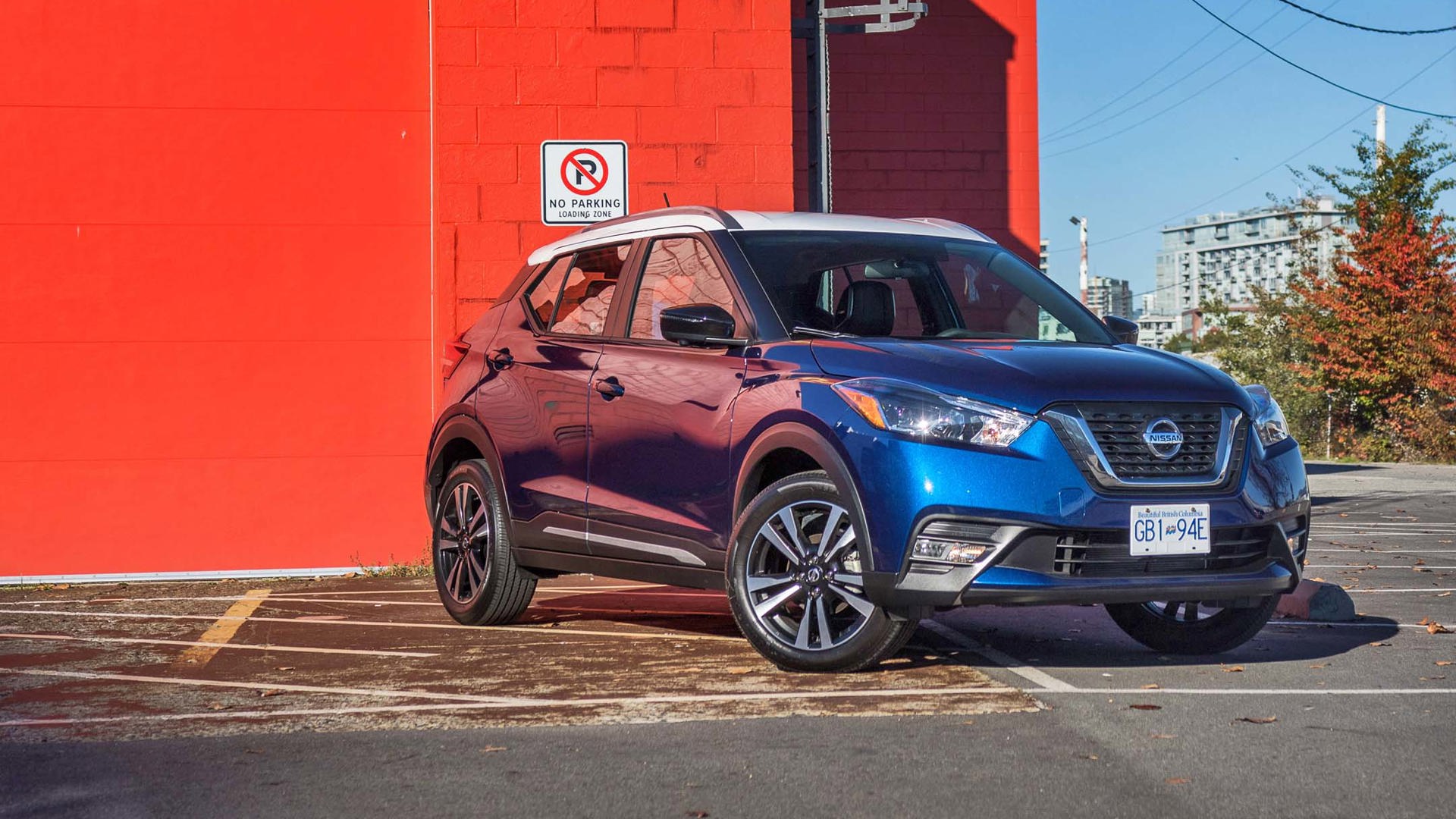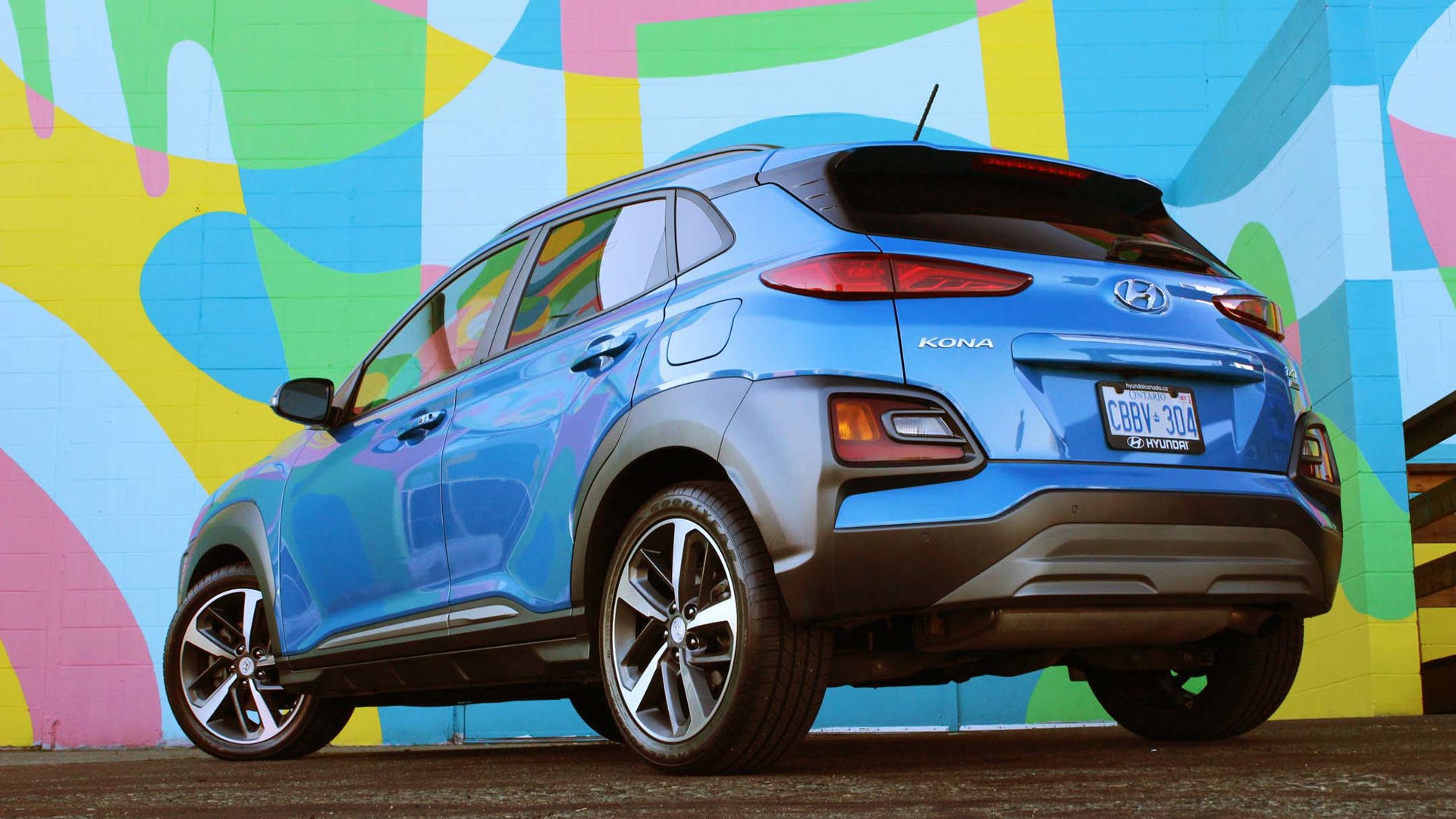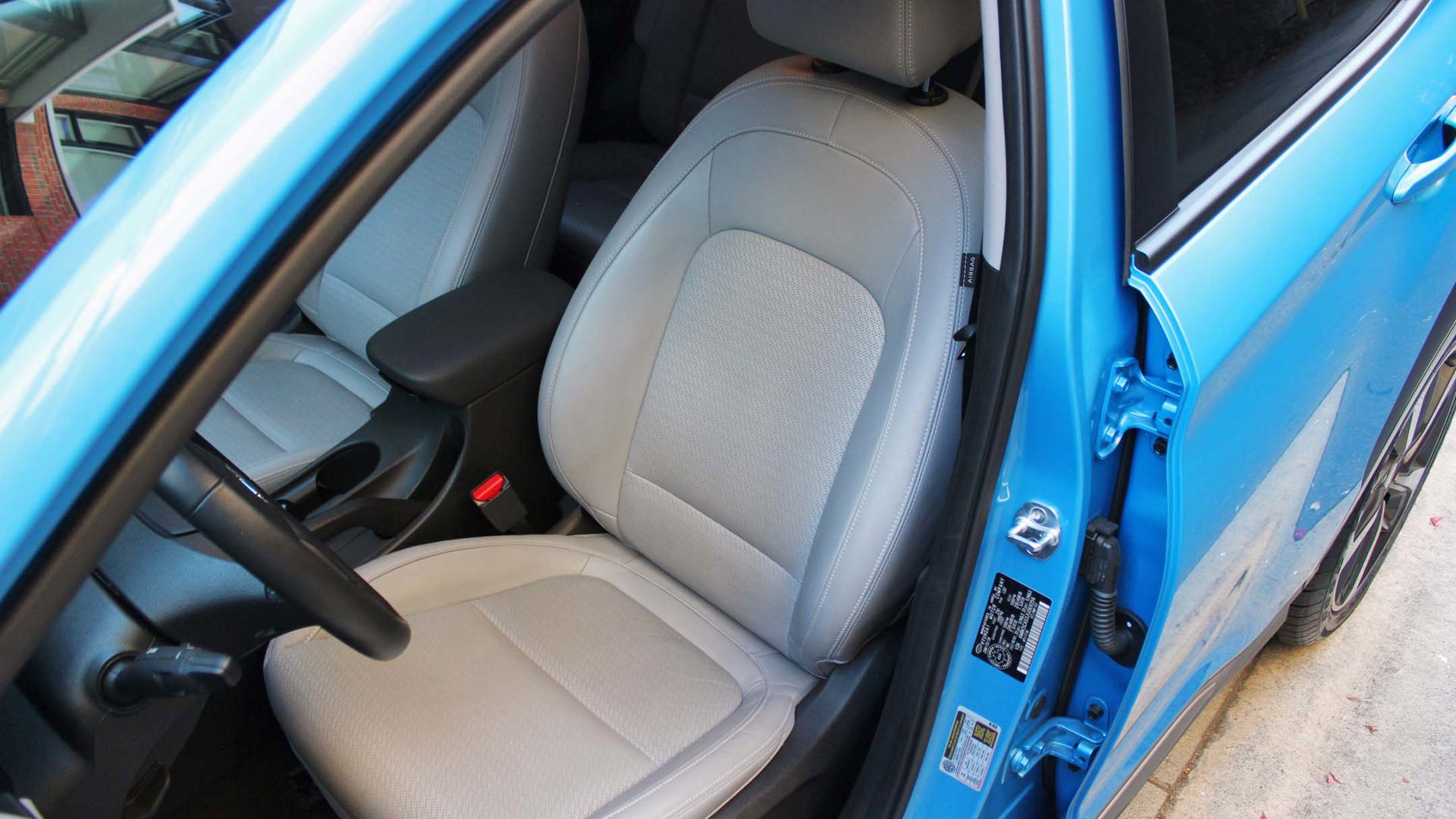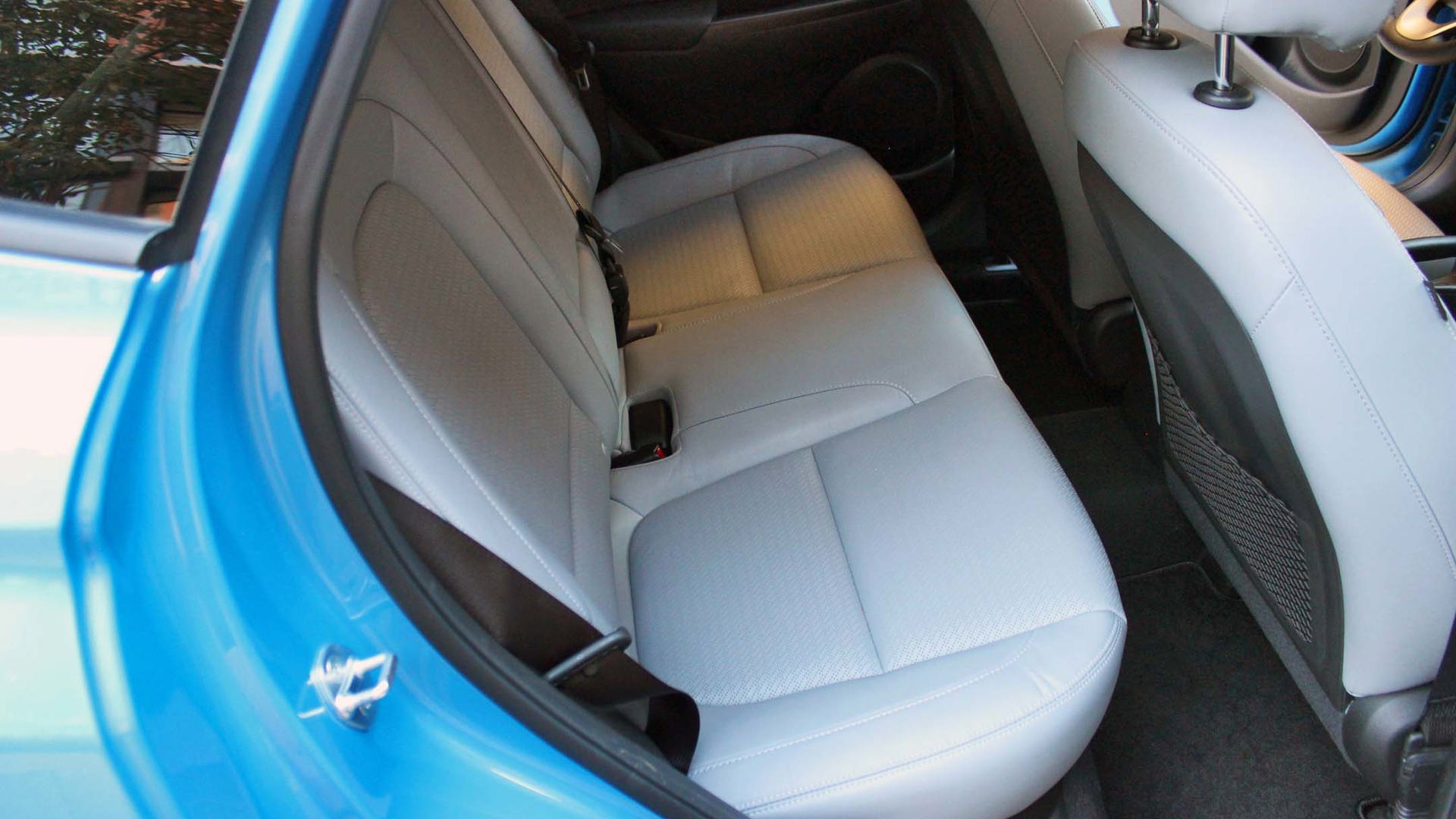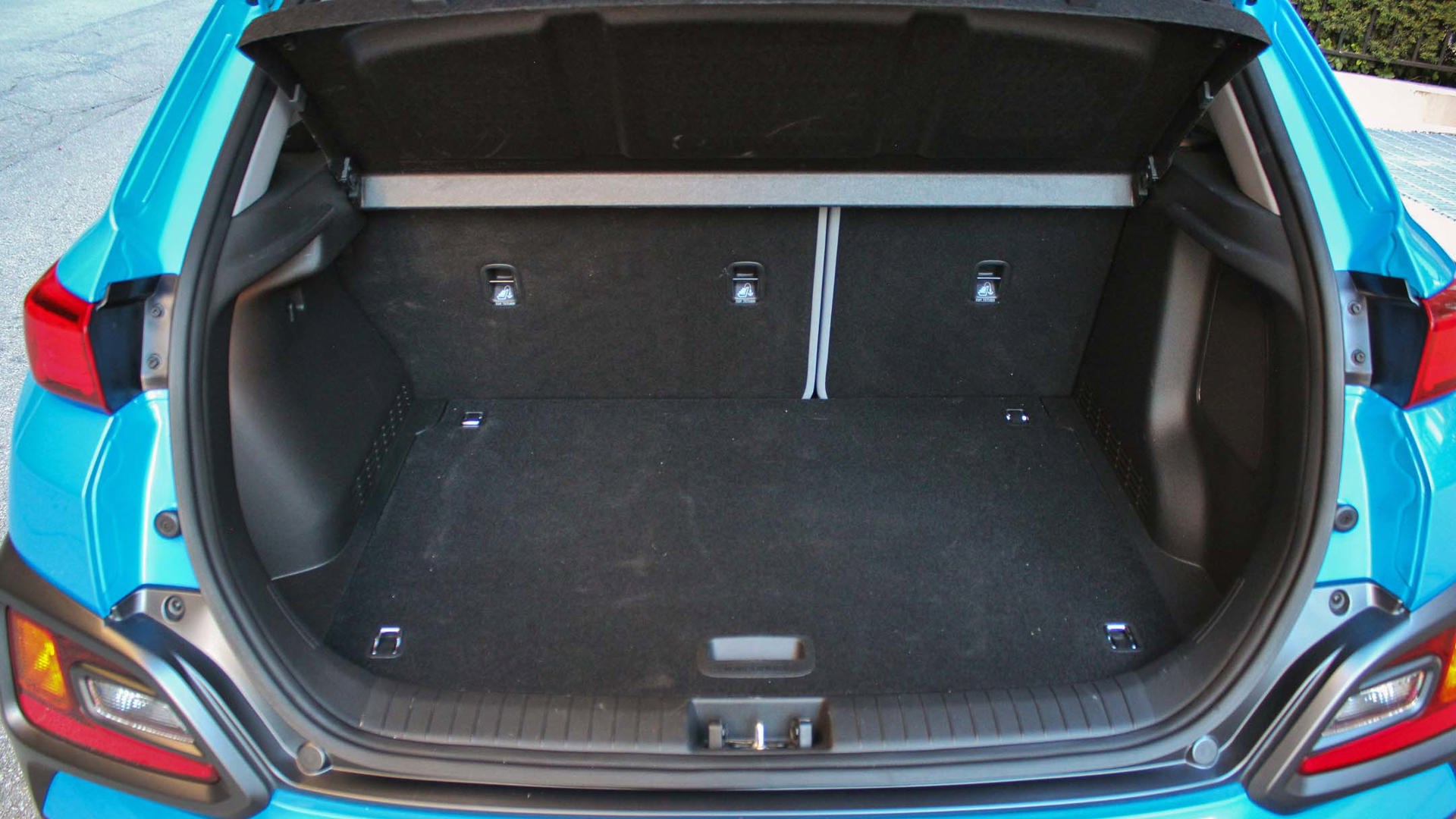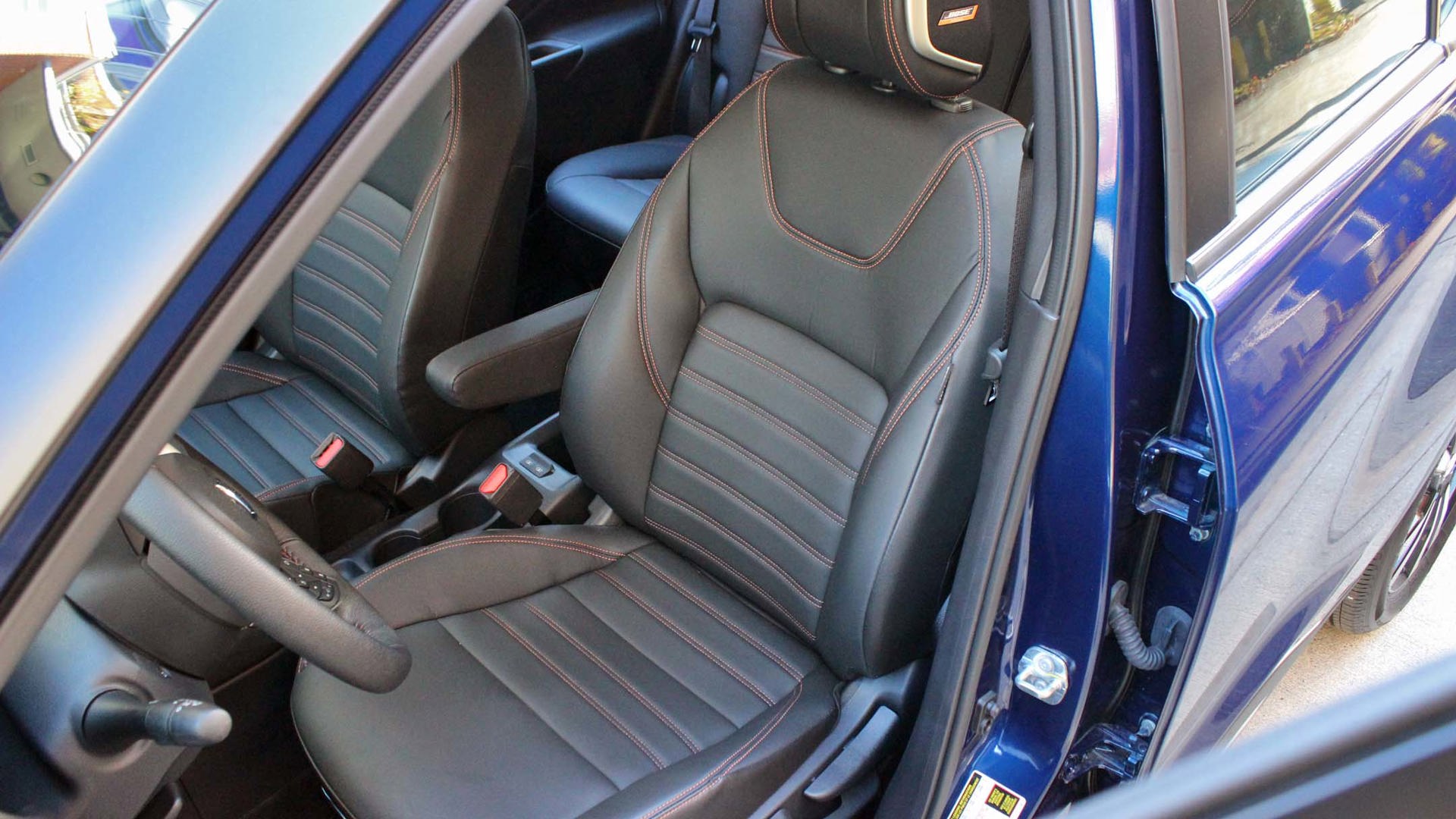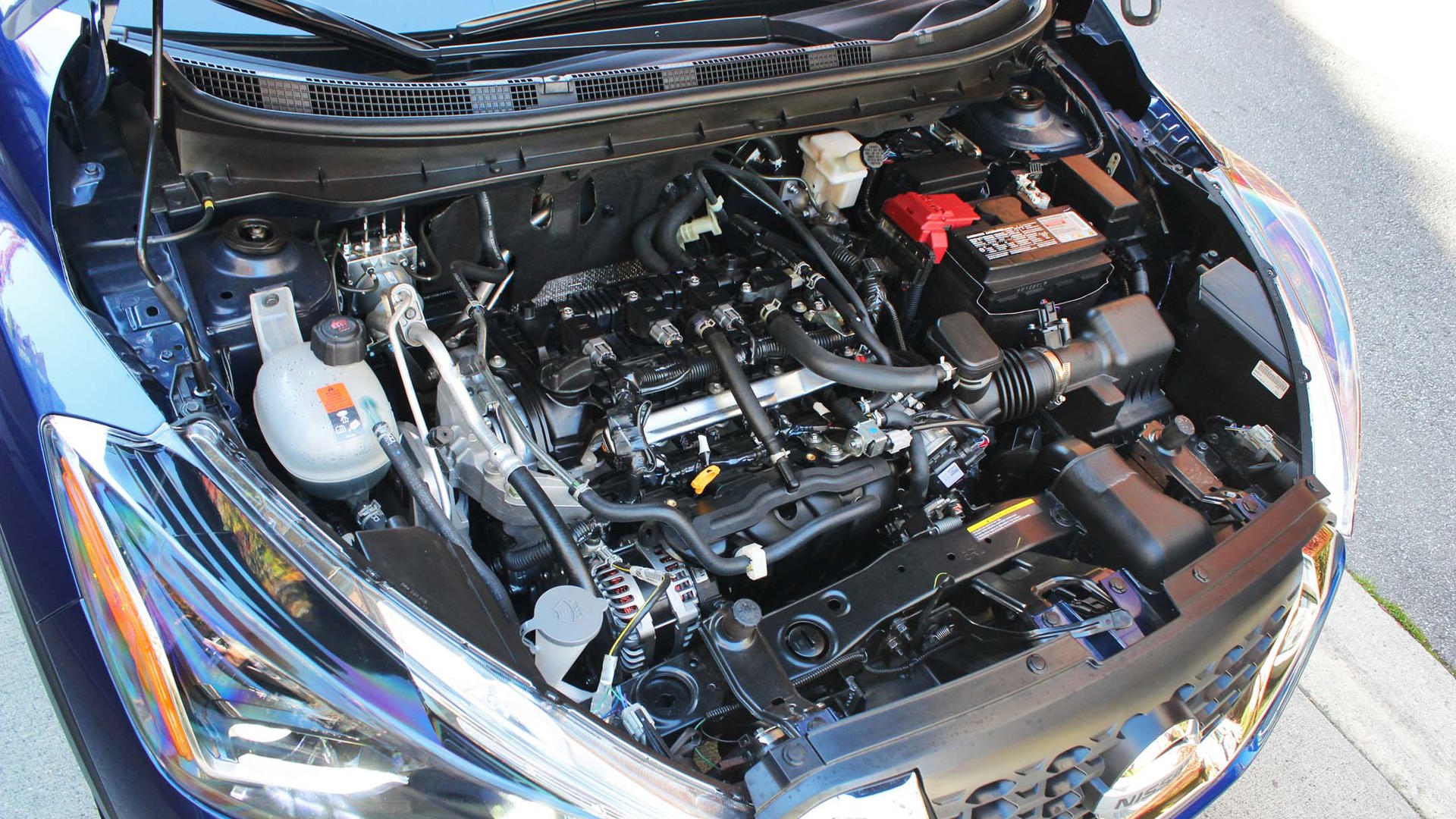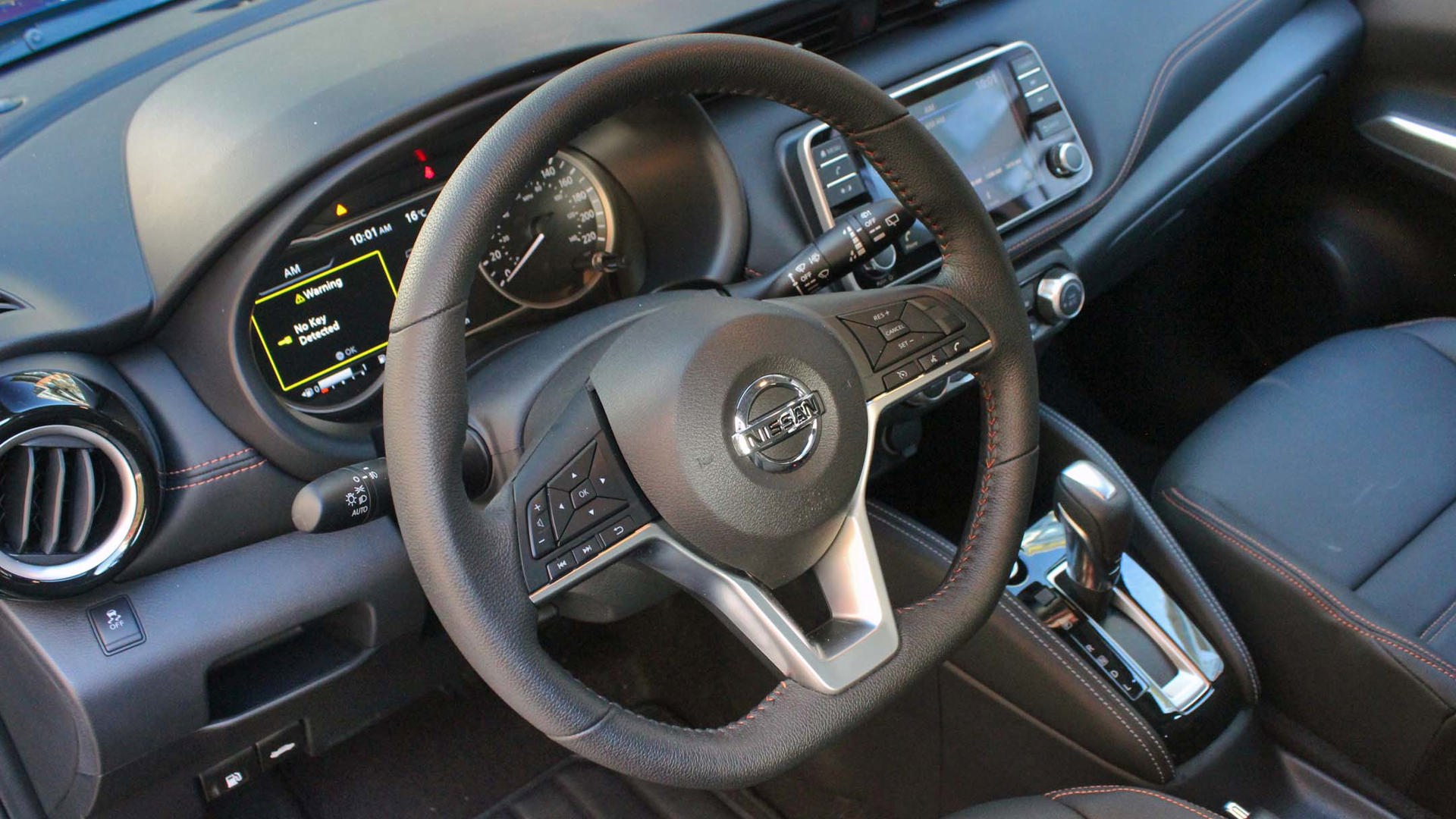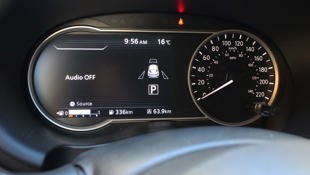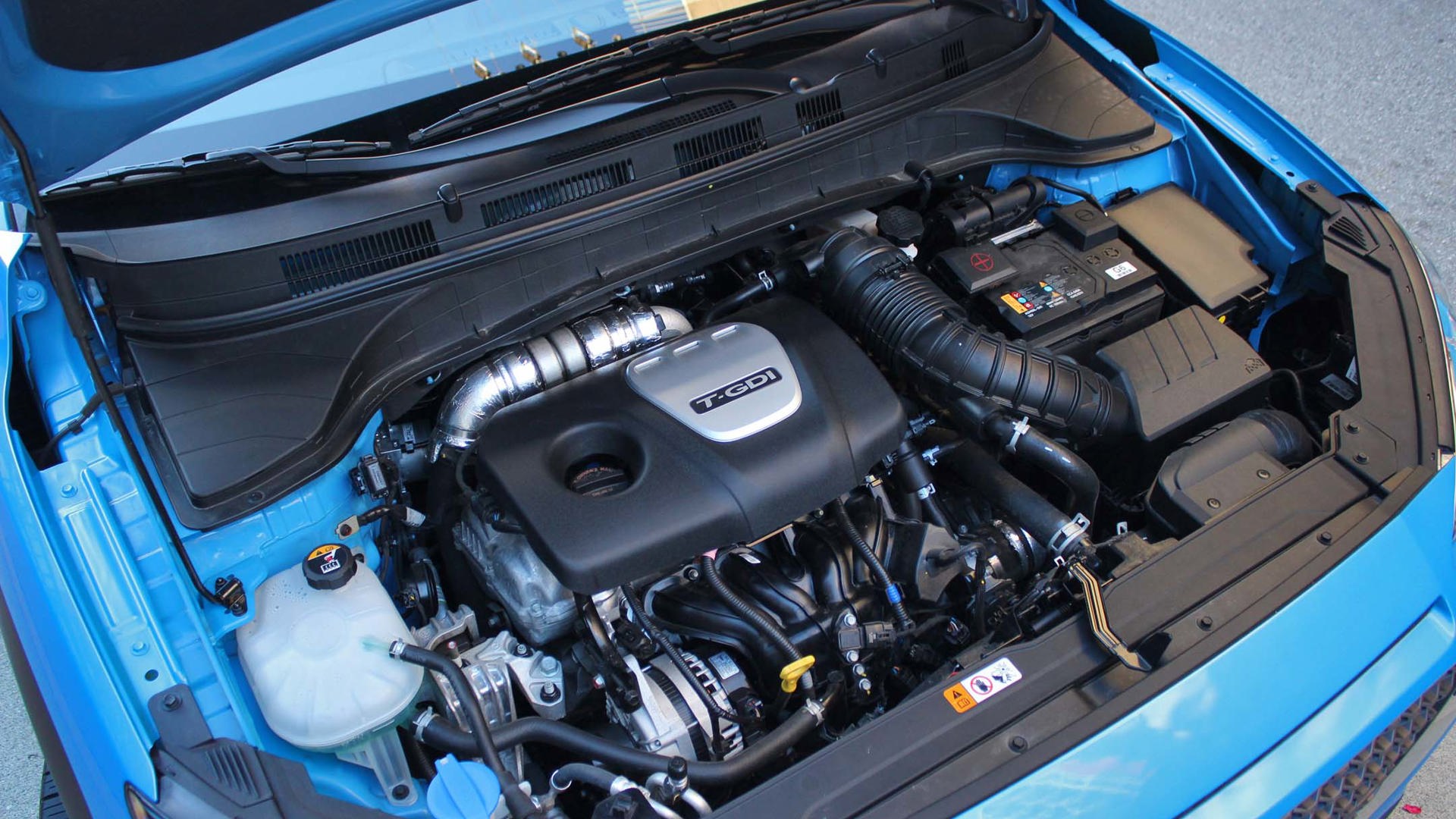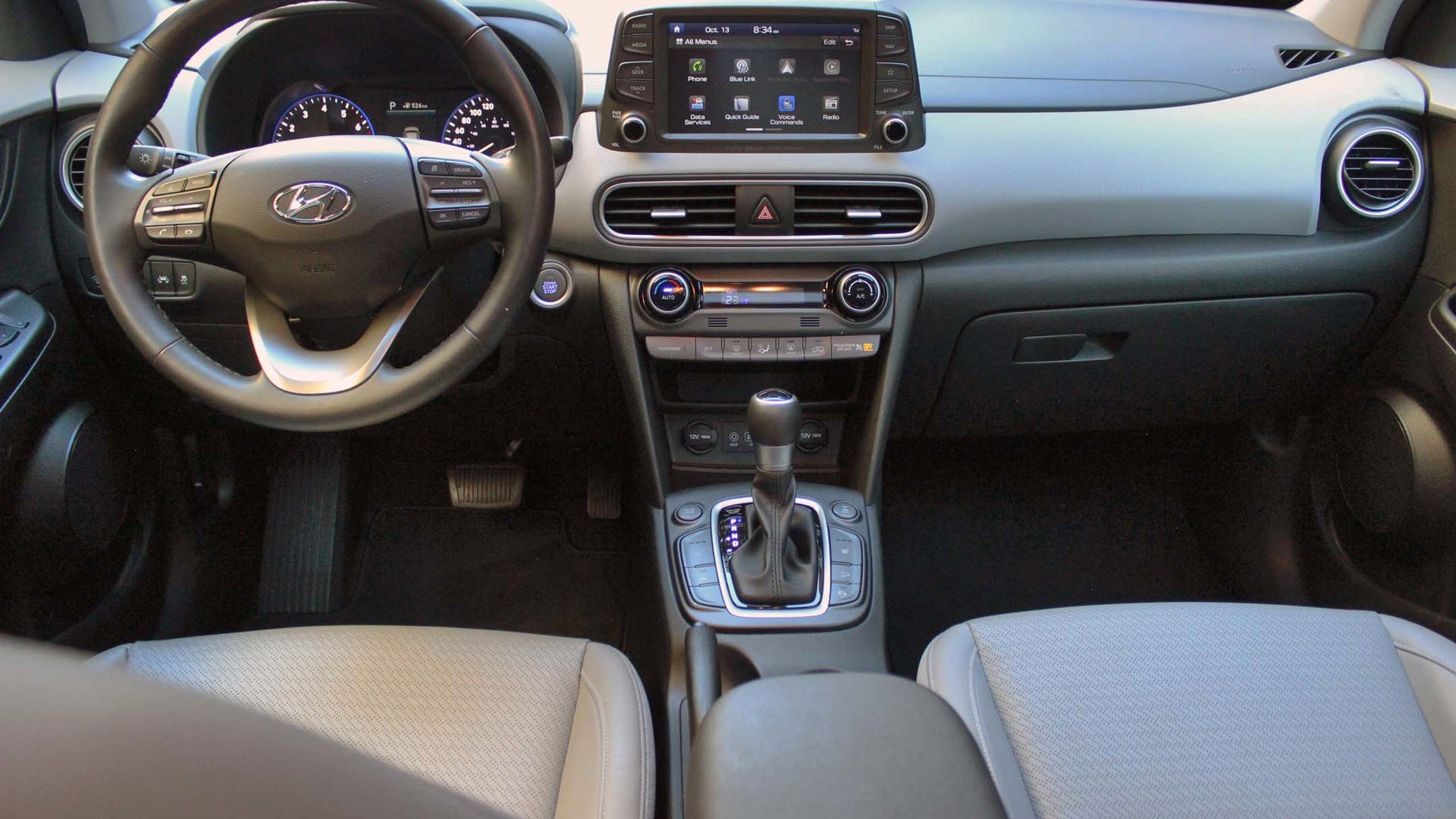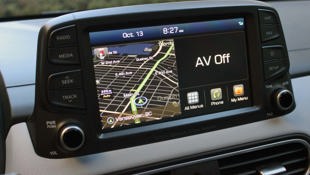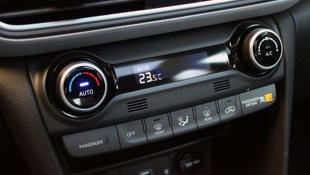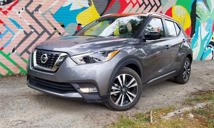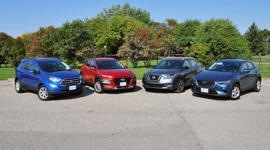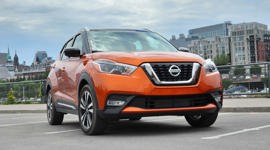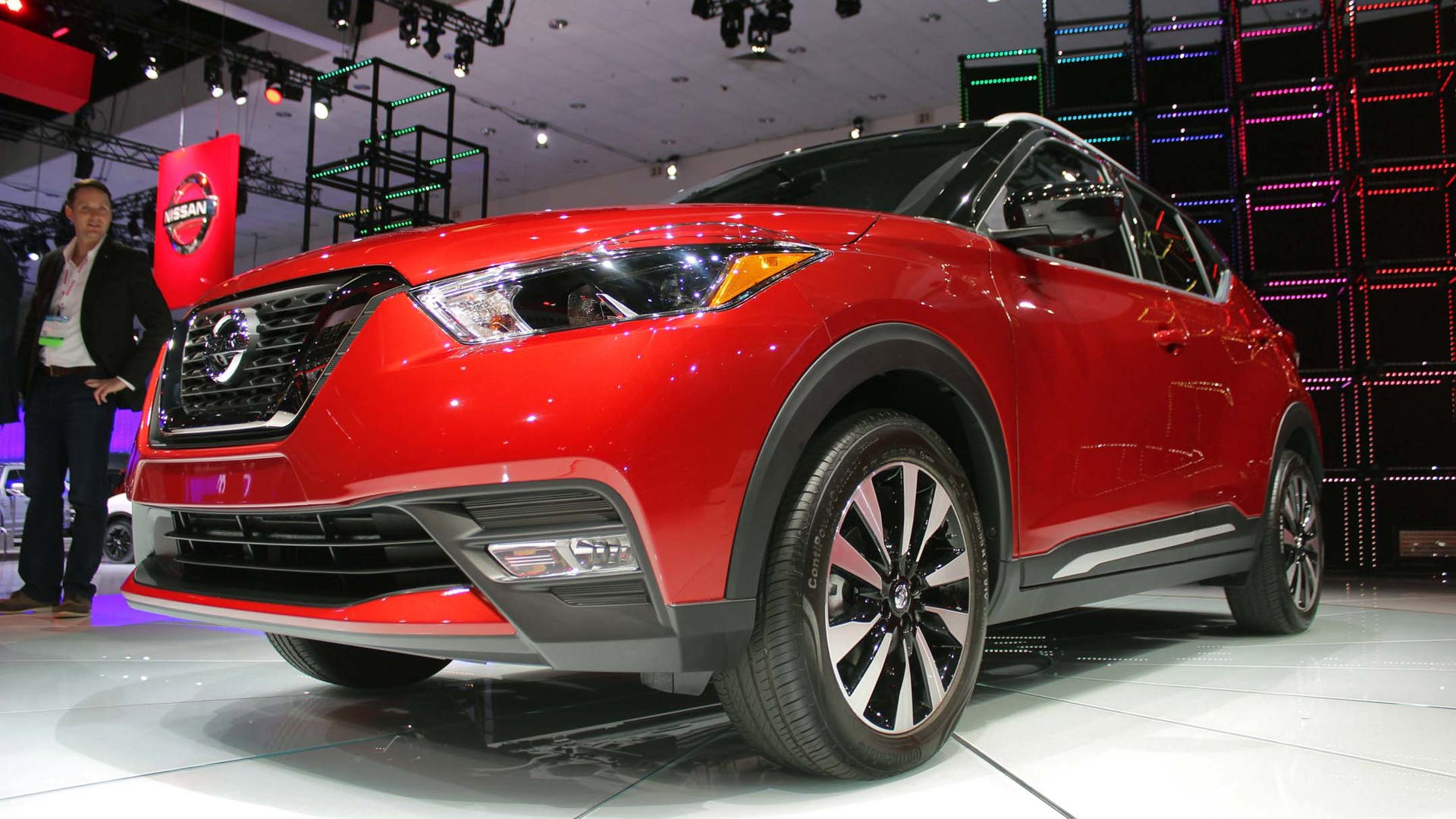Comparison Data
|
2018 Hyundai Kona 1.6T Ultimate
|
2018 Nissan Kicks SR
|
|---|---|
|
Engine Displacement
1.6L
|
1.6L
|
|
Engine Cylinders
I4
|
I4
|
|
Peak Horsepower
175 hp @ 5,500 rpm
|
125 hp @ 5,800 rpm
|
|
Peak Torque
195 lb-ft @ 1,500 rpm
|
115 lb-ft @ 4,000 rpm
|
|
Fuel Economy
9.0/8.0/8.6 L/100 km cty/hwy/cmb
|
7.7/6.6/7.2 L/100 km cty/hwy/cmb
|
|
Cargo Space
544 / 1,296 L seats down
|
716 / 915 L seats down
|
|
Base Price
$31,799
|
$22,798
|
|
A/C Tax
$100
|
$100
|
|
Destination Fee
$1,805
|
$1,795
|
|
Price as Tested
$33,704
|
$25,143
|
|
Optional Equipment
None
|
$450 – Deep Blue Pearl/Fresh Powder paint $450
|
Dan Heyman and Brendan McAleer
Just as the midsize crossover is hammering the last handful of nails in the coffin of the family sedan, your average entry-level “car” is now likely to be an entry-level crossover. Remember funky little machines like the original Toyota RAV4 and Suzuki X90? Perhaps they were just a little ahead of their time, as now every manufacturer builds a subcompact crossover that aims for the youth market.
From Hyundai and Nissan, two value-oriented brands, we’ve got a pair of cross-trainers that’ll turn out to be surprisingly different. The Kona aims for a blend of small-car fun with big-crossover features. The Kicks is fast fashion: fresh looks and fun-to-drive simplicity for those on a budget.
Each comes with four doors, a four-cylinder engine, and a city-friendly footprint for urban parking. However, one of these two is a much more substantial offering – but that doesn’t necessarily hand it the win.
So, what’s it going to be, hipster millennials? Spending your money on a cup of complex Kona single-origin coffee, or opting for a shiny new pair of Kicks. Let’s shimmy into our skinny jeans, get an ironic sleeve tattoo, and crank up the Mumford and Sons to find out.
Styling
Dan says:
When I attended the launch of the Kicks late last year, I left feeling like I liked the styling; it wasn’t especially ground-breaking like the Juke it replaced (but then, little is), but I thought it was funky with a dash of handsome. The contrasting white roof is a bit Toyota C-HR – just pared back a little – while the V-motion grille leaves no doubt it’s a Nissan.
When I started seeing the Kona in the wild, however, I was impressed; I liked the butchy body cladding, there was a nice variety to the colours I was seeing and the stance was nicely aggressive.
Now that I’ve seen the two together, though, I’ve had a bit of a paradigm shift. When I finally got the chance to really look at the Kona up close as opposed to zipping by me in traffic in a blur of bright blue or red, certain details have started to emerge that just rub me the wrong way.
Take the front fascia, for example. I don’t mind how they’ve channeled the last-gen Cherokee’s high-mount daytime running lights – it’s just that the rest is all so busy. You’ve got the DRLs, then the headlights, then below those a pair of awkwardly placed fog lights – there’s a lot going on.
Then, ’round back, you have a taillamp assembly that looks somewhat modern, but also reminds me of the items seen on the first-gen Toyota RAV4 – wasn’t a great look then, isn’t now. And what’s with the massive grey inserts used to divide the turn indicator, brake light, and back-up light? It looks cheap, and I fail to see the point.
It’s not all doom an gloom; I mentioned the colours, and the Blue Lagoon paint on our tester is one of my favourite offerings. The stance also looks good now that I’ve seen it up close, and the wheels are nicely sized (the Kona has 18s; the Kicks, 17s) and I like their two-tone treatment. They also come as standard on our 1.6T AWD Ultimate tester. When placed beside the Nissan, both Brendan and myself were surprised by just how wide the Kona is compared to the Kicks – more on this in a minute.
The Kicks, then, provides a handsome alternative to the Kona’s more rugged look; I had much more trouble finding details here that I didn’t like. It may not be as exciting as the Juke was (some say “exciting”, others, of course, say “odd”), but the proportions are right, the detailing is there – the tapered rear side windows are one of my favourite details – and with the two-tone roof and also its colour choices, there’s enough here to make it stand out from the crowd.
Brendan says:
I’m not as peeved at the Kona’s somewhat insect-like look as Dan is. These are grille-tastic times we live in, and seeing as the Nissan Juke already blazed the trail for alien-bug-faced cars, I won’t throw much shade Hyundai’s way. In fact, I quite like the Kona’s busy front end and aggressive plastic fender cladding. It might not age well, but it looks a little futuristic. It’s daring. I’m okay with that.
The Kicks, however, feels like a swing back from the Juke’s adventurous styling towards a more mainstream approach. “Kicks” implies a fun and youthful spirit but, to paraphrase Shakespeare, a Rogue by any other name would smell as boring. Well, perhaps boring is a little harsh, but the Kicks certainly plays things safe.
Like Dan, the more time I spent with the pair, the more my view shifted somewhat. I still think the Hyundai’s styling looks good, but Nissan’s approach of offering a safer style with customer options to take risks by ordering a crazy-coloured roof is a neat approach. Offering more customer choice should be applauded, especially in a time when every Audi dealership looks like a visual interpretation of Fifty Shades of Grey. The Kona’s tasty, but the Kicks still brings a fashion-forward approach.
Interior and Comfort
Dan says:
The Kona’s wider stance isn’t just for show, either, as you can feel the difference once inside. I’ll let Brendan discuss how his daughters’ car seats fit in one compared to the other, but I’ll let my wide hips and tall frame do the talking when it comes to the front seat position.
Put simply, the Kona is the more comfortable vehicle to sit in. The seats in the Kicks – they are an example of Nissan’s Zero Gravity tech – may look more deeply bolstered and supportive, but that’s not entirely the case. They’re firmer than the items found in the Hyundai, and while a softer seat does not always make for a more supportive seat, the items found in the Kona walk the line between “comfort” and “support” better than the Zero Gravs in the Kicks. Yep – surprised me, too. Plus, even though we’re dealing with two top trims here, the Kona’s driver seat is power-adjustable and the Kicks’ is not. They’re both given the leather – well, pleather, anyway – treatment, though, and the Kicks’ seats are heated to three levels, the Kona’s just to two. That may seem a bit nitpicky, but three-level temp adjust at this level is not something to sneeze at.
The seat width, meanwhile, reflects the overall width; during the entire duration of my drive in the Kicks, I couldn’t decide if I wanted the armrest down or not (the passenger doesn’t get one). Couldn’t decide if it made things too narrow, or provided the support I need. In the end, I settled on leaving it down but I never got completely comfortable.
This was not something one has to think about in the Kona, because the seating position is natural from the get-go. All the surfaces are placed just right that your limbs fall to them naturally; you just get in, and push off. Job done. The back seats, meanwhile, are roughly the same in each car, though I did find there was more breathing room between my scalp and the headliner in the Kicks.
Probably not a big deal since these are barely cars meant for young families of three let alone three or four adults, but it’s only fair to note that the Kona doesn’t have the Kicks completely dead to rights when it comes to interior comfort. That slightly taller roof gets slightly taller windows to match, meaning the view out of the Kicks is a mite better than what’s offered by the aggressively tapering windows on the Kona. Both vehicles, meanwhile, have similar interior passenger volume.
What’s interesting about the interior quality and styling, however, is how the two swing, in terms of which is best. Upon first glance, the Kicks’ interior seems kind of handsome in a buttoned-down way, but as you look closer, some lesser details begin to emerge. There’s a lot of plastic on the doors, the elbow door rests are padded, but barely, and the lighting’s not quite on compared to the Kona.
Turning to said Kona, you’re met with massively padded door armrests, a deep centre-console storage bin (the Kicks barely has one of these, and there’s no cover on it) and all sorts of high-quality soft-touch materials on the dash and doors. This is proper interior craftsmanship when you consider the MSRP for a full-loaded car like this is $31,799.
Storage-wise, it’s more of a case of six of one, half dozen of the other. The Kona’s rear storage compartment both has a higher floor and is shallower than what’s offered by the Kicks, but it gets a completely flat floor once the 60/40 split rear seats are folded. The same can’t be said for the Kicks, as its deeper floor means you won’t get a fully flat floor once the rears are dropped, but you do get more cargo capacity thanks to that lower floor.
Both vehicles, meanwhile, ask that you remove the headrests if the front seats aren’t pretty much on their forward bump-stops; there just isn’t enough length in the passenger compartment for them. Bonus points for the Kona in that even though it has a higher floor, there’s a divided storage bin underneath it. It’s fairly shallow, but skinny items such as laptops and so forth will fit just fine. All you get below the floor of the Kicks is a spare tire doughnut.
Storage situation notwithstanding, the Kona does beat the Kicks out in this section. It’s not a drubbing, by any means, though.
Brendan says:
The Kona’s the more substantial vehicle, no two ways about it. Not only does that added width translate to a greater amount of interior space, Dan’s notes about the use of soft-touch materials throughout needs underlining. The Kicks feels relatively cheap inside, but that’s okay for a vehicle at this price point. The Kona, on the other hand, surprises with how nice it is.
Further, if I was considering a little runabout that also occasionally had to haul kids, that’d be the Kona. The Kicks might as well be named for what’s going to happen to your kidneys when you put a couple of active youngsters in the back seats. Both vehicles work in a pinch, but the Kona feels like less of a compromise.
Tech
Brendan says:
Nissan’s infotainment systems aren’t quite at the same level as Hyundai’s. The latter seems to have developed everything to be acceptable for their Genesis line and then trickle down to lesser models, whereas Nissan definitely has an entry-level layout.
Thus, the Kona is the more impressive of the two, with easy-to-navigate menus, and a cleaner overall look. Further, it’s got a bit more equipment with wireless charging and available navigation. The Kicks system looks a bit more like a smartphone stuck to the dashboard, where the Kona is a bit more “real car”. Having said that, the 360-degree camera makes even the tightest parking spots a cinch, and Dan will attest below to how good the Nissan’s stereo is.
Dan says:
Being top SR trim, our Kicks had the Bose Personal Plus Sound system that gets a total of eight speakers, two of which are mounted into the driver’s headrest. It even gets some very chic orange Bose badging, lending a bit of an aftermarket flair to the proceedings. The sound is more encompassing that way, allowing for open windows without as much distortion. Both vehicles, meanwhile, get Apple CarPlay and Android Auto, always important features in this segment. For me, that’s a bigger deal in the Kicks than it is in the Kona, simply because the latter’s native infotainment system is better than that of the former. It’s more intuitive, the graphics are better and it’s more responsive overall. It also gets wireless charging, a feature that’s lacking in in the Kicks.
The Kicks wins a couple of point back in the safety department, however, as its back-up cam is of the around-view monitor variety meaning you get numerous camera angles to help in parking. The SR trim is the only way you can get it, however, as it’s not even an option elsewhere in the lineup. By contrast, Hyundai’s system is grainier and you don’t get the multiple camera views, though its display is an inch bigger than that of the Kicks and it gets navigation, unlike the Nissan.
I tended to forget all about that the more I played my favourite tunes in the Kicks, though; this is a massively implemented sound system that really shouldn’t be putting the work in a budget-priced subcompact crossover like this, but here it is, and it is glorious. I’m betting that sound system alone could very well sway some buyers.
Ride and Handling
Dan says:
This is where these two really start to diverge, providing an interesting look at just how complex car segmentation can be with the advent of the CUV in all shapes and sizes.
Remember the Nissan Micra? It was an awesome attempt by Nissan to really make car-buying a viable proposition for younger people, or people who’ve never before owned a car. The main draw? Its price. It came it at less than 10 grand before taxes, a figure unheard of this day and age.
You could say that the Kicks is the next in line for Nissan when it comes to getting those Micra types to part with their money; it starts at a hair under 18 grand at base, with our loaded SR version coming in at a hair under 23 grand. Compare that with the Kona, which starts at over 20 grand and tops out at about 32 grand for our 1.6T Ultimate AWD tester.
Of course, the big differentiator you’ll see here is that our Kona is AWD (base models are FWD) and our Kicks is not – it’s not and, for now anyway, isn’t available as such. Nissan firmly believes that the most common scenario Kicks drivers will find themselves in is in-town, on their way to work or Yoga class. A good set of tires will do the trick, and there’s always the Qashqai if AWD is a must.
At first blush, the Kicks drives surprisingly well for such a low-priced vehicle; bumps – large and single, or small and repeated – don’t cause as much cowl shake as you might think and, for the most part, don’t send you pogo-ing across the tarmac. Even body roll is surprisingly low, which I never would have expected considering that tall roof it has.
Then you step into the Kona, and things change quite readily. The ride is more insulated; it’s quieter and dare I say more luxurious; you could say that makes sense as this is the top trim after all, but it nevertheless remains the top trim of what is a fairly entry-level vehicle.
What’s weird though, is despite its sport looks and turbo power, it wasn’t quite as fun as the Kicks when we ran them over some undulating, winding terrain in the foothills of the North Shore mountains in Vancouver. The Kona may have been more planted and able to power out of the turns better thanks to its AWD and its turbocharger (more on the two cars’ powertrains in the next section), but the Kicks was a little more fun to toss into the corner in the first place thanks to a very responsive steering rack. It reminds me of the Micra and while the Kicks is kind of a Micra-max, the Kona is more of a micro-Tucson, and I wonder if the buying groups for these two may be a little more divergent than you might think.
Brendan says:
As Dan points out, the Kicks drives small – just like a slightly bigger Micra – while the Kona is more a short-wheelbase Tucson. Again, it’s just as though the two cars were designed for different buyers. The Kicks is light on its feet, zippy in acceleration despite the CVT and naturally aspirated, small-displacement engine, and has well-controlled mannerisms.
The Kona has more grip, more power, and a more hefty feel. If you’re a highway commuter, or someone who doesn’t actually like the occasionally tinny feel of a small car, the Kona’s well-composed dynamics are going to be a selling feature. It’s probably also going to feel a lot more secure on the road on a particularly poor weather day.
Performance and Economy
Brendan says:
For everyday driving, the Kicks is much more a jump-in-and-go car, more ready than the Kona to jet across town in a jiffy, entertaining you with decent tunes, zipping through traffic with a nimble enough nature to get through the jams. It’s also great fun on a winding backroad, though fast-moving highways do show up its horsepower deficit a little. The tighter the surroundings (city street or country lane), the better the Kicks does.
As Dan points out, the gap between these two should look huge if you only read the spec sheet. In practice, it’s not that the Kona is so much more powerful, more that the two vehicles offer a slightly different flavour of drive.
Dan says:
On paper, the differences here are vast; the Kicks comes with a single engine choice – a naturally aspirated 125 hp, 115 lb-ft four-banger – while the Kona gets two choices: a naturally aspirated 2.0L four good for 147 hp and 132 lb-ft, and a turbocharged 1.6L good for 175 hp and a substantial 195 lb-ft of torque. We had the latter but in practice, they aren’t quite as divergent as you may think and as is often the case with Nissans these days, it’s not so much the engine that gets in the way as it is the transmission. It gets a CVT as the only choice – the Kona’s traditional seven-speed dual-clutch auto is in a whole other world of performance – with its main issue being the lack of a paddle shift option.
In the city, the differences aren’t quite so marked; the Kicks’ CVT makes for smooth (if a little noisy) progress, while the Kona’s automatic is good for quick little bursts of acceleration here and there. It’s also in those conditions that you can sense the Kicks’ powerplant is straining more than the Kona, but that’s to be expected. Both are squirtable from point A to B, though, and I never had that sensation of doom you sometimes get with an underpowered car when making a left turn though oncoming traffic on a busy boulevard, for example.
On the highway, though, I wouldn’t think twice if I were asked which vehicle to take. The Kona is more powerful, providing more confidence in highway passing manoeuvres and so forth. It’s quieter than the Kicks, making for more passenger comfort along with a superior ride as speeds increase. And, while the Kicks’ responsive steering is nice at slower speeds around town, it’s a little nervous on the highway and it takes that much more focus to keep it on the straight and narrow.
Value
Brendan says:
Thirty-two grand for a compact crossover? That’s a lot. I appreciate Hyundai providing the choice of a heavily optioned compact car for city dwellers who want all the gizmos in an easy-to-park package, but picking which of these is the best value is pretty straightforward.
A fully loaded Kicks is almost $10,000 less expensive than the Kona, and yes, that does mean going without all-wheel drive. Even so, we’re talking monthly payments that differ by hundreds of dollars, and that’s going to decide the age of the buyers that actually purchase these.
Further, even a middle-of-the-road Kicks has pretty much everything you need, with the sub-$21K SV model coming with Apple CarPlay and Android Auto, as well as keyless go, heated seats, and dual USB chargers. Or, if you can do without the tech features, the basic car is about the same price as a well-equipped Micra.
From a fuel economy standpoint, the Kicks has an advantage on paper of 1.4 L/100 km over the Kona with the more powerful 1.6T engine. Official figures are 7.2 L/100 km for the Nissan and 8.6 L/100 km for the Hyundai. In practice, both vehicles achieved low-8 L/100 km in our mostly urban test, which is not great news for the Kicks. I’d say the results were down to having to rev the Kicks smaller engine a little harder in everyday use.
Dan says:
As easy as it is for me to argue in favour of the Kona in the highway driving department, it’s just as easy for me to argue in favour of the Kicks when it comes to value. Sure; you may not get AWD for your 20 grand-ish, but you get a cool-looking subcompact ute that comes well equipped on the tech front for most anything anyone in this segment needs, with a few bonuses like that Bose sound system. If you really feel you need a more premium-feeling interior from your subcompact crossover, then I guess the Kona would merit some consideration as you definitely get more for your money. The one knock I could see against the Kicks is that even with the added weight of an AWD system, the Kona received similar fuel economy during our test.
Conclusion
Dan says:
At the end of the day, what you have here are two very intriguing entries to the burgeoning subcompact crossover segment, evidenced by the fact that they finished 1–2 in our group test a few months ago, with the Ford EcoSport and Mazda CX-3 falling by the wayside. The tough part comes when you consider that they’re kind of equals, but also opposites. The Kicks looks nicer from the outside, the Kona is nicer inside, the Kicks is more fun in-town – where vehicles of this type spend most of their time – while the Kona is more capable on the highway. The Kona has the slight edge in passenger comfort and will more easily store your wares. Infotainment and safety features are a wash at these trim levels; so where does that leave us?
For me, the Kicks takes it. As an owner of one of these, I see myself spending most of my time in-town, where I don’t really need AWD or the extra power. I like the view out of the Kicks, I like that I can throw my hockey bag in without thinking about it and I like how nimble it feels thanks to that steering rack. The better exterior looks are also important to me, as image tends to be in this segment. The Kona will absolutely have its suitors – it deserves it, and I guess if I was part of a family of three (or four) and really wanted a subcompact CUV as my daily driver/road-trip car, I’d have to consider the Kona. Thing is, if that were me, I’d be looking bigger, which is a conversation for another day.
Brendan says:
Which of these vehicles would I choose? That’s like asking whether I’d prefer tickets to see Modest Mouse or Arcade Fire or Foaming Bethlehem. Hmm? Oh, you’ve probably never heard of them.
Point is, while I found the Kona more appealing to drive for my personal needs (better cargo space, more substantial feel, a little more power), I have to agree with Dan here. The Kona’s advantages aren’t really aimed at the youthful buyer who would actually be shopping in this segment. Actually, they seem aimed at the buyer who might think they’re a little more youthful than they actually are.
The Kicks, on the other hand, is inexpensive, and not overly complicated, and light on its feet. While it’s not exactly a performance machine, it’s not completely crazy to think that this little crossover doesn’t have a little Datsun 510 DNA somewhere in the mix. The Kicks’ charms don’t come from heavy feature loadout or higher-priced halo models; they come from simplicity.
You wouldn’t expect to find that kind of simplicity in a crossover. For better or for worse, where Canadians were once fine with a bare-bones front-wheel-drive sedan with snow tires, now we all want all-wheel drive and adaptive cruise control, and all manner of driver assists. The Kicks isn’t about that: it’s got a high ride height that urban drivers need just to be able to see around every other crossover on the road, but it’s otherwise a thrifty and compact machine that’s fun to drive because it’s not hauling a bunch of extra weight around.
I have a hard time thinking that kids who get into a crossover hand-me-down from their parents are going to grow up caring at all about cars, not when the run-of-the-mill stuff is so boring to drive. However, the newer driver who gets into a Kicks is going to have fun behind the wheel. That factor, and an accessible price point, make the Kicks a field goal for Nissan. Laces out.
